- Meeting Planners
- Meet the Team
- Services & Resources
- Service Providers
- Hotel & Venue Search
- Convention Center
- Travel Trade
- San Diego Specialist
- Trade Offers
- Request Images
- Hosting Assistance
- Press Releases


San Diego Zoo Safari Park
Jambo a safari adventure in san diego.
Welcome to the San Diego Zoo Safari Park, where life-changing moments happen daily. Set out on safari and discover 1,800 acres of sprawling savannas teeming with wildlife as well as world-class botanical gardens—there’s no place like it on Earth. Encounter rhinos, giraffes, wildebeest, and large herds of wildlife roaming together. Journey through bamboo forests and come face-to-face with Sumatran tigers. Hop alongside kangaroos and dive underwater to meet the only two platypuses outside of Australia. And experience the awe-inspiring giants of Elephant valley. When you’re here, you’ll discover adventure is in every moment. And a moment can change a lifetime.

Neighborhood: North Inland
15500 San Pasqual Valley Rd Escondido, CA 92027-9614
Contact Info
(619) 718-3000 Toll-Free: (800) 407-9534
Please check our website for current hours.
Spring Safari Featuring Butterfly Jungle
Spring brings the perfect chance to get outdoors, spend time with family, and experience the sights, sounds, and tastes of the season! From special entertainment and culinary creations to amazing...
More To Know:
- Located 30 miles north of downtown San Diego - and well worth the trip!
- The San Diego Zoo Safari Park is open 365 days a year
- Plan a full day & bring walking shoes, sunscreen and water for your adventures
- Safaris do fill up; book online ahead of time to ensure your spot
- Lovely facilities for catered weddings, parties and other group events!
Special Events:
- Marvel at eagles, owls and an Andean condor at Frequent Flyers
- Visit the World Gardens to see amazing and rare plants
- Autumn Festival On The Weekends From 10/7 -10/29
- Kids Free month with free admission for kids 11 and younger during October
More Information
- Destination Weddings
- Historic Landmark
- General Admission - Adult
- General Admission - Child
- Parking (RV)
Sharing is caring
Like what you see? Share with your friends, family, and the world!
Stay in touch
Sign up to receive the latest news, events, and updates about San Diego. Our monthly and weekly newsletters will keep you informed about the latest and greatest happenings in the destination.

- Things to Do
- Downtown & Urban
- Inland Valley, Mountain & Desert
- Baja California
- Neighborhood Maps
- Getting Around
- Travel Guides & Apps
- Family Travel
- International Travelers
- Visitor Information & Services
- Hotels & Resorts
- Bed & Breakfasts
- Camping & RV Parks
- Vacation Rentals
- Other Accommodations
English | Change Language
Select your country or region
Or use google translate.
- Help Center
- Plan Your Visit
- Places to Stay
- Youth Programs
- Student & Youth Groups
- Dining Programs
- Events & Catering
- Live Cameras
- Our Mission
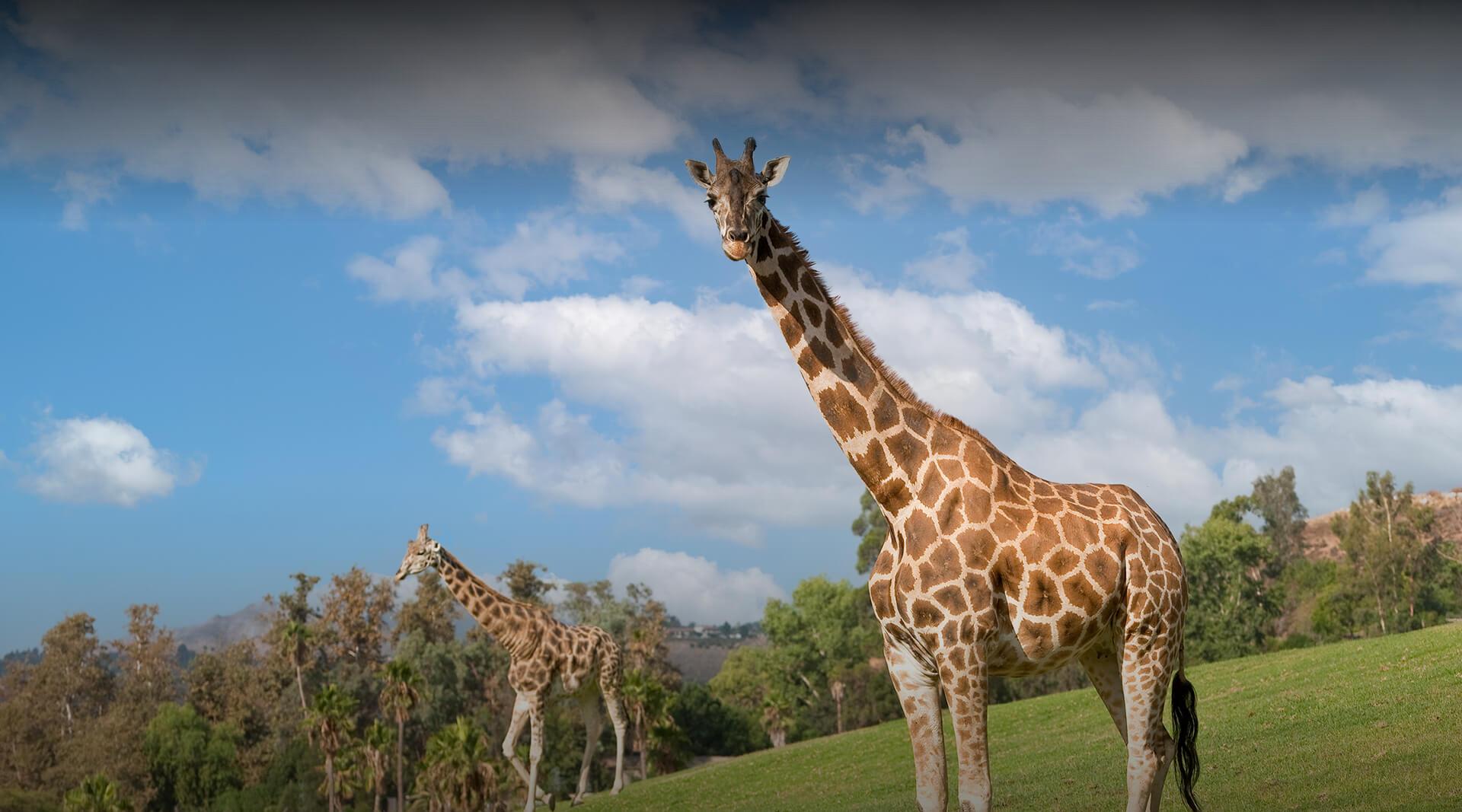
Animals & Gardens
Explore the animals and gardens you will encounter on a visit to the Safari Park.
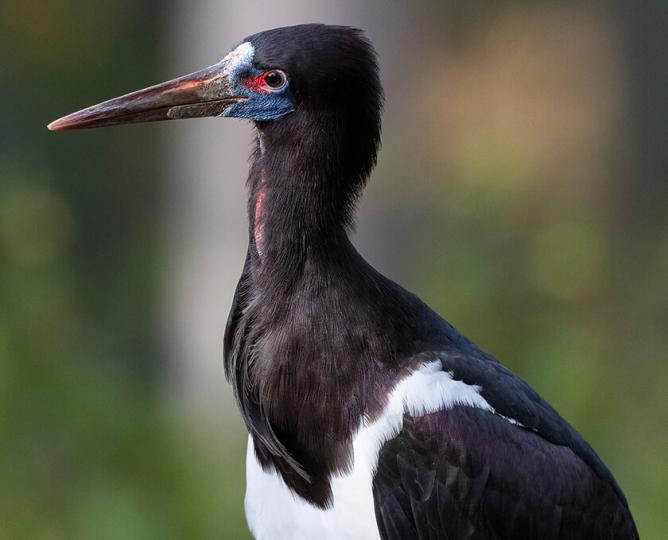
ABDIM'S STORK
Called the grasshopper bird in parts of Africa, the Abdim's stork feasts on swarms of the insects.
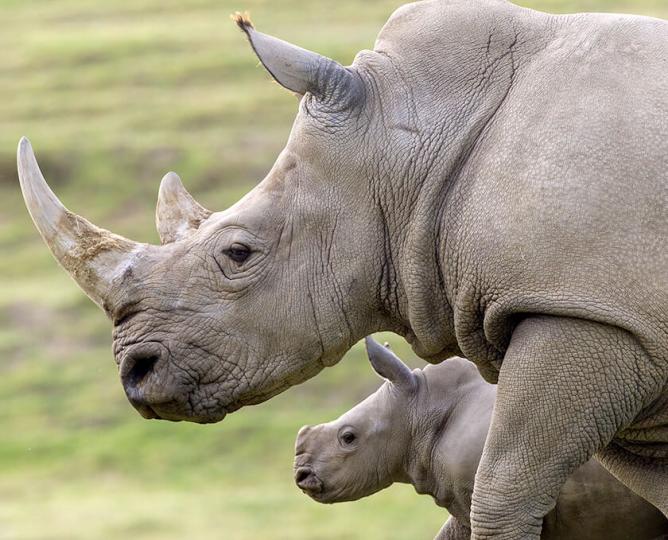
African Rhinos
Black rhinos and white rhinos are the same color—a brownish gray—and both live in eastern and southern Africa.
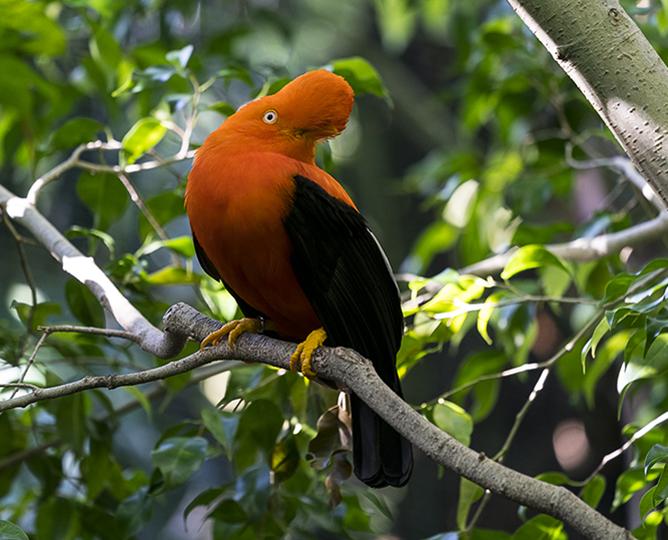
ANDEAN COCK-OF-THE-ROCK
Known for their colorful plumage and high-energy mating displays, males of this species are impossible to ignore.
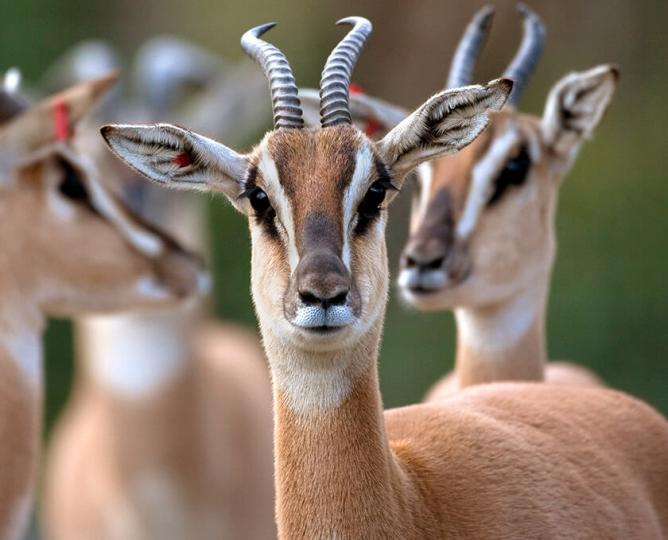
All antelope species have horns. In some species they are only found on the males; in others, both males and females have them.
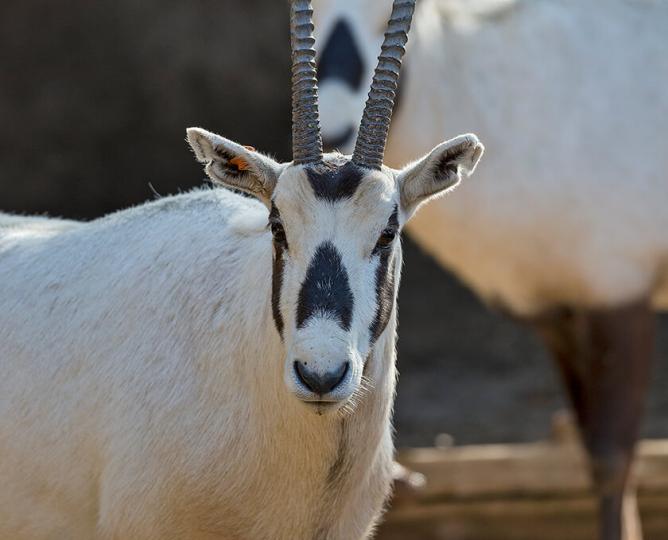
ARABIAN ORYX
Once extinct in the wild, many Arabian oryx have been reintroduced in Oman and Jordan.
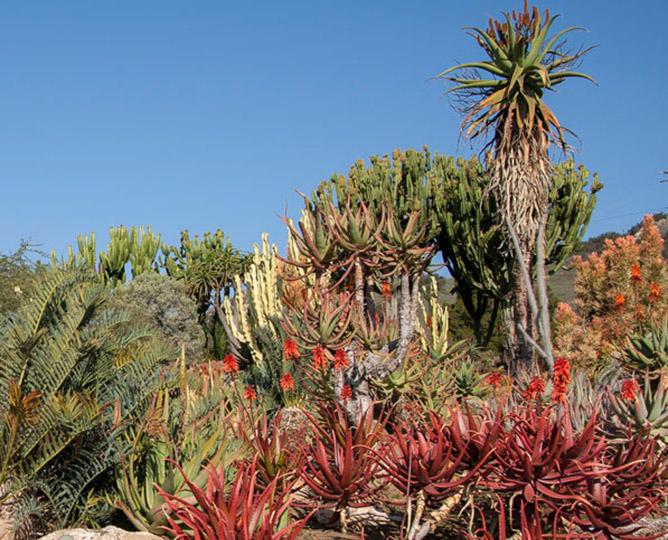
BAJA GARDEN AND OLD WORLD SUCCULENT GARDEN
Succulent. The word conjures up images of things delectable and desirable, and that's what you'll find in the oases of extraordinary plants at the Safari Park called the Old World Succulent Garden and the Baja Garden.
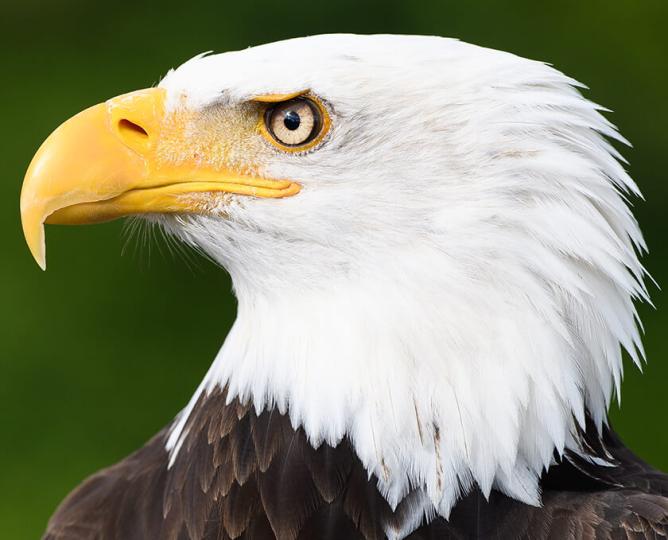
Bald eagles live near bodies of water to be close to their favorite food—fish!
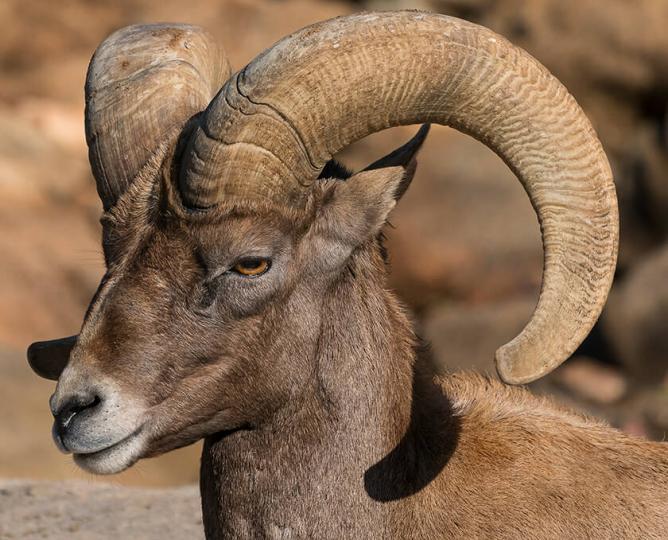
BIGHORN SHEEP
Bighorn sheep have amazing climbing talent, spectacular horns, and can live in some of the world's steepest, most forbidding habitats.

BONSAI PAVILION
Discover a world of tiny trees! The Safari Park's Bonsai Pavilion is a striking showcase for this extraordinary living art.
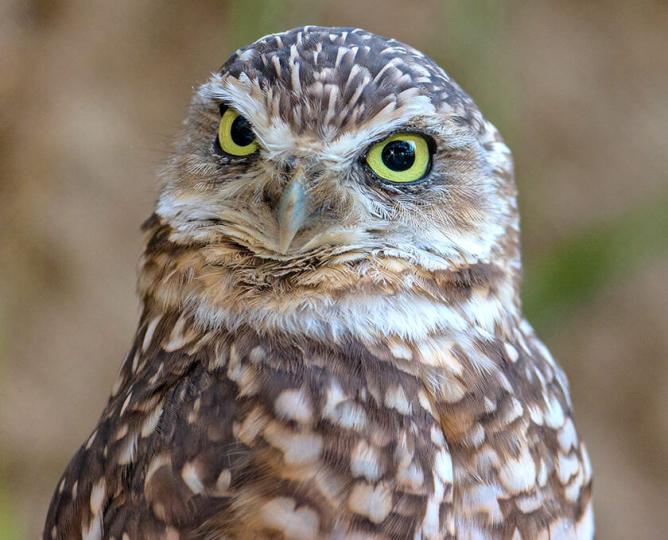
BURROWING OWL
Instead of making their nest in the hollow of a tree, as most owls do, burrowing owls make their home in abandoned prairie dog burrows or rattlesnake dens.
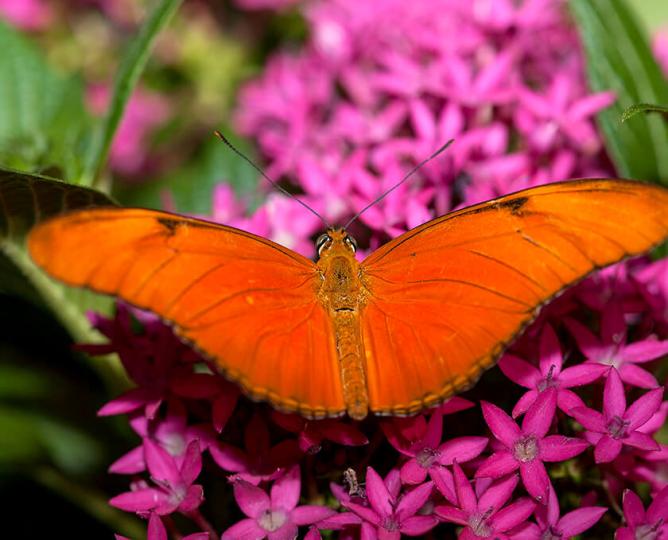
During their lives, butterflies transform from caterpillar to pupa to fluttering adult. Their remarkable eyes have thousands of lenses, and see flowers in ultraviolet light.
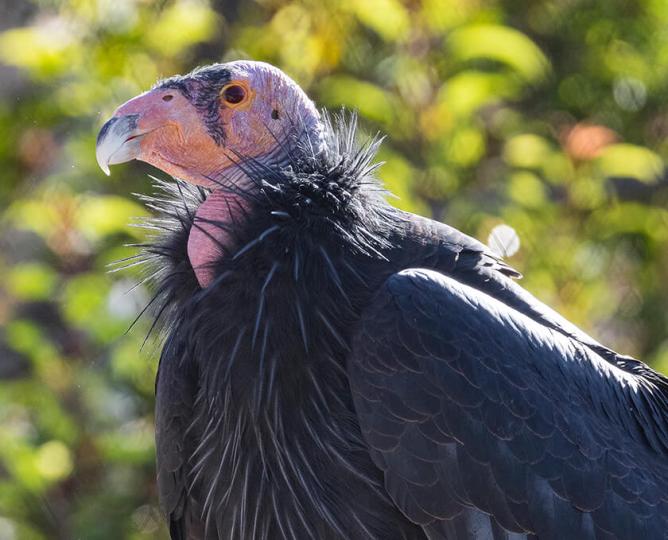
CALIFORNIA CONDOR
North American tribes respect the California condor and see it as a symbol of power. In legends, they call it the "thunderbird," bringing thunder to the skies with the beating of its huge wings.

Camels can travel as fast as horses, but can also endure legendary periods without food or water.
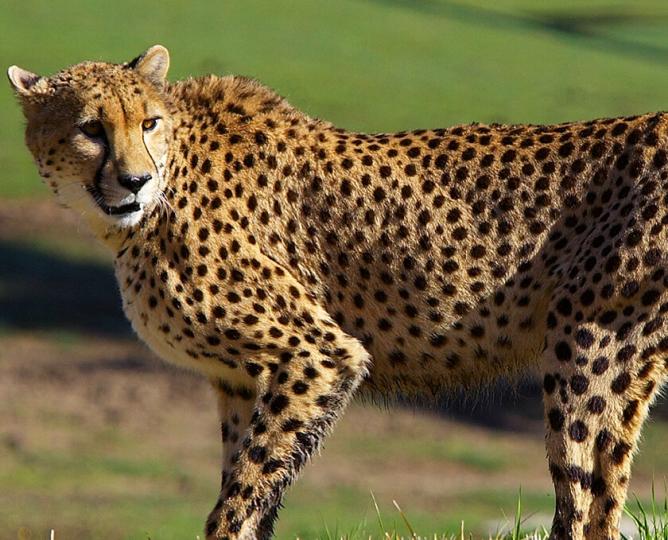
Long and lanky, cheetahs are the sprinters of the cat world. Their body is designed to run fast for short distances, allowing them to catch prey that other big cats can’t get.
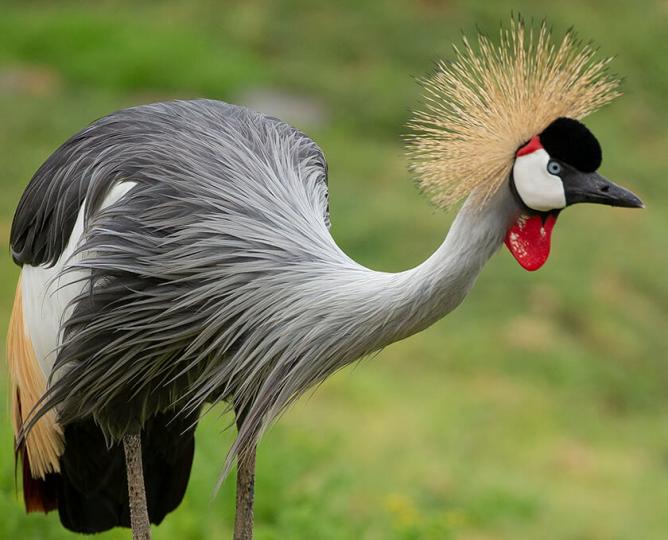
CROWNED CRANE
The majestic-looking crowned crane is a tall bird with a “crown” of tall, stiff, golden feathers. Its long legs and neck, and excellent peripheral vision help it spot predators in the tall grasses of the savanna.
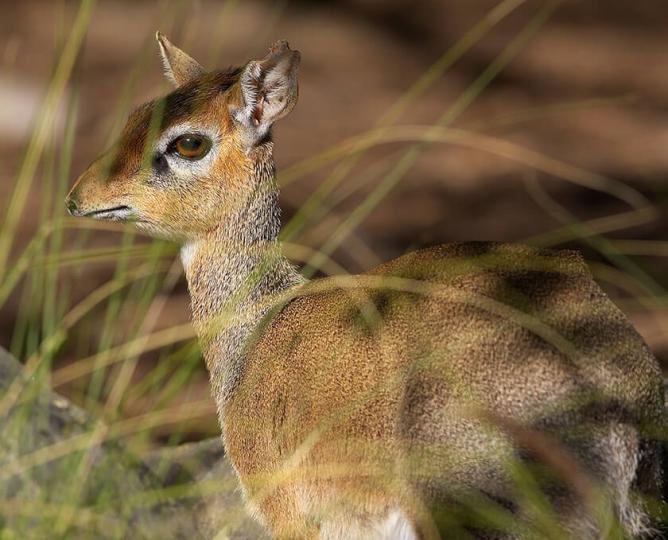
Dik diks are small African antelope that weigh only 6 to 13 pounds as adults. Their name is believed to be inspired by the sound they make when alarmed.
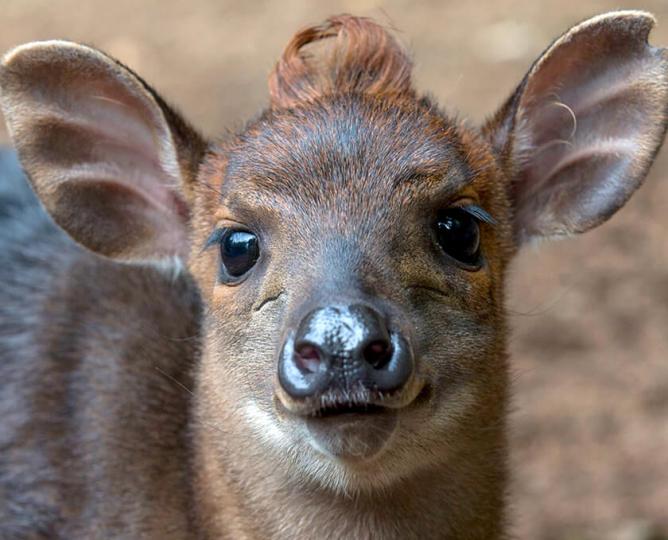
Duikers are shy and elusive creatures. Their name comes from the Afrikaans/Dutch word for diver or diving buck, referring to the duikers' practice of diving into tangles of shrubbery.
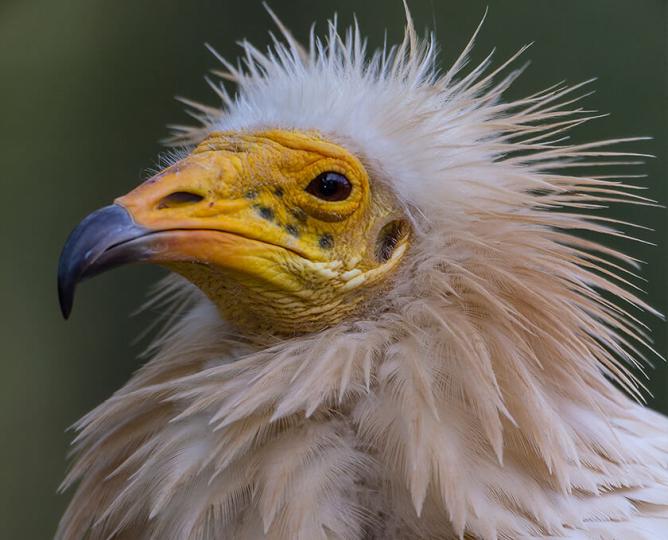
EGYPTIAN VULTURE
Only a few animal species use tools, and the Egyptian vulture is one of them. It selects just the right-size rock to drop on an ostrich egg, to crack it open—then, this clever bird slurps up the goodies!
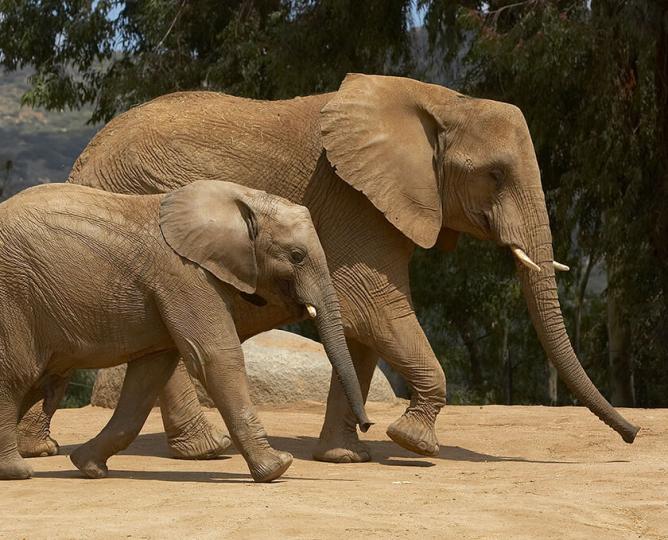
You can travel to Africa, of course, but the easiest way to observe African elephants is at the Safari Park! We have two large habitat areas for our African elephant herd.

EPIPHYLLUM TRAIL
The Safari Park's Epiphyllum Trail, located between Walkabout Australia and Condor Ridge, includes more than 600 of these surprising plants and their spectacular, eye-catching spring blooms.
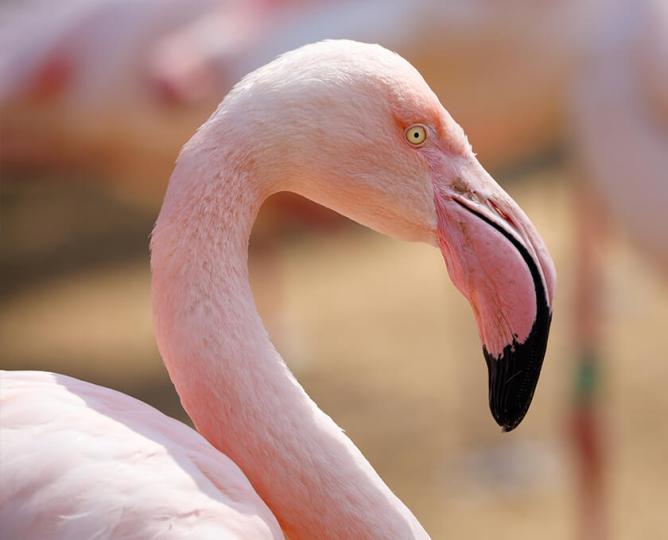
Social birds, flamingos live in groups of varying sizes, from a few pairs to sometimes thousands, or tens of thousands. The Safari Park is home to the largest population of greater flamingos in North America—and three of the six flamingo species are represented here.
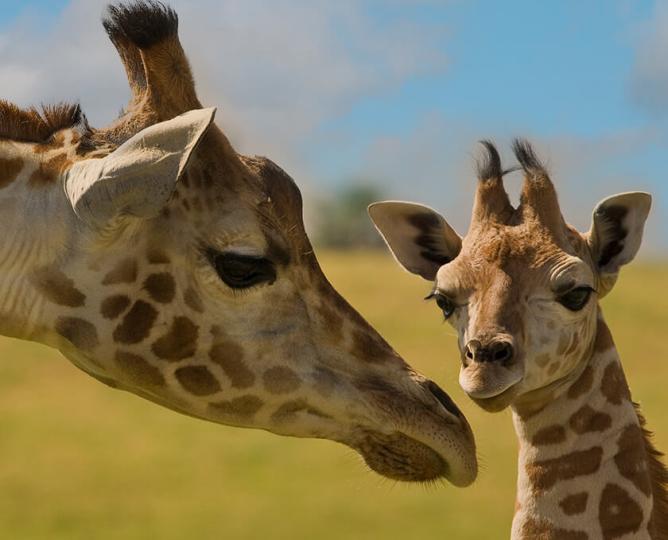
Giraffes are the tallest land animals, able to nibble the highest leaves in Africa's acacia trees!
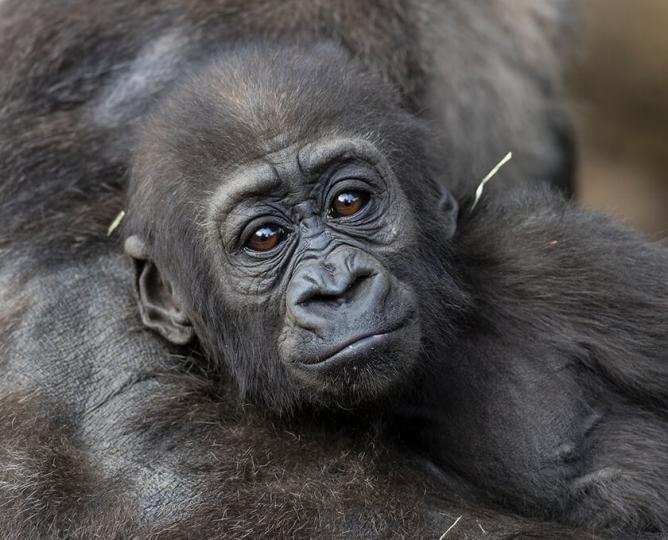
Gorillas are largest of all primates, animals that include monkeys, lemurs, orangutans, chimpanzees, and humans.
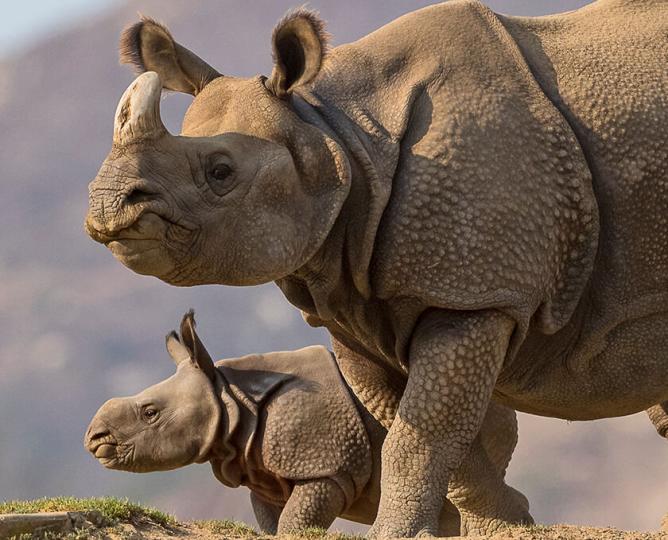
GREATER ONE-HORNED RHINO
Many people describe greater one-horned rhinos as "armor-plated," but they are actually covered with a layer of skin that has many folds.
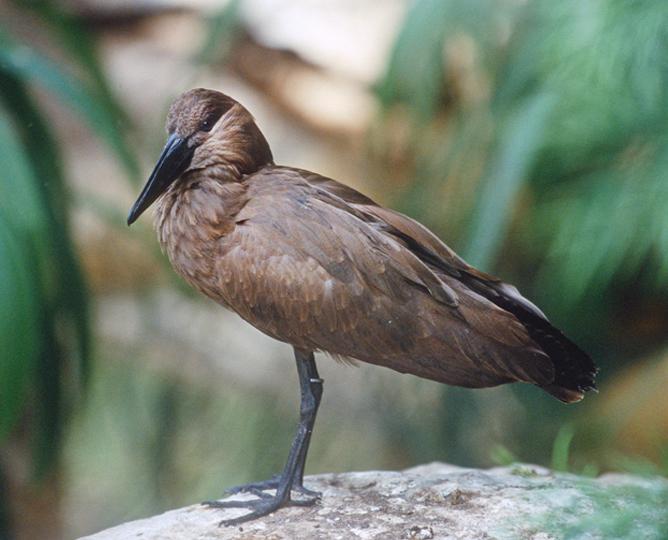
Found in the woodlands and wetlands of Africa, the hamerkop is a wading bird famous for its enormous, domed nest.
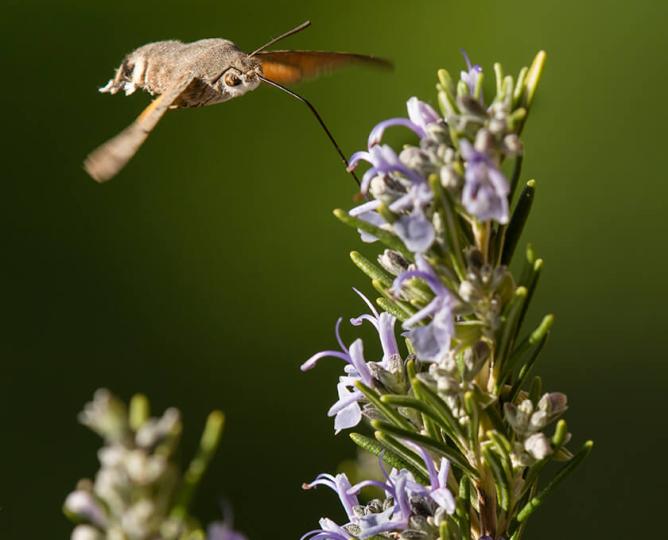
HERB GARDEN
The Herb Garden is designed and tended by dedicated volunteers—and whether you are an herbal novice or steeped in the lore of herbs, it's a fragrant habitat worth exploring.

HIDDEN JUNGLE
A tropical rain forest is teeming with wildlife that is beautiful, yet often hard to see. But Hidden Jungle’s climate-controlled environment provides excellent views of delicate and fascinating tropical birds and plants.
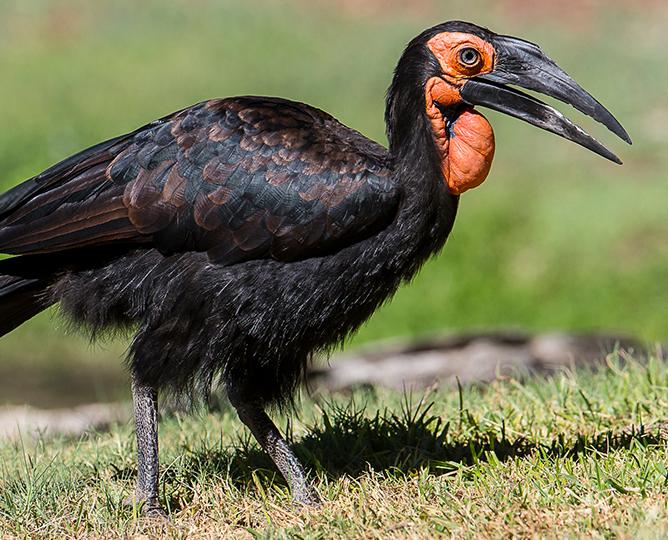
You can pick out a hornbill from other birds by the casque above its bill. This hollow or spongy structure is made of keratin, like our fingernails.
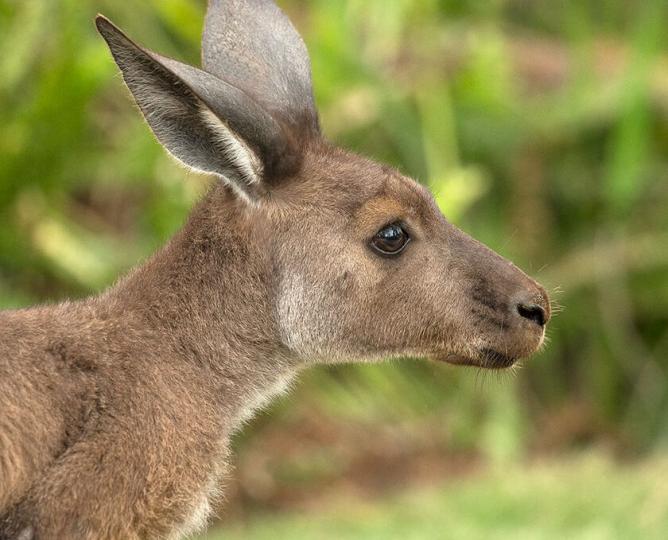
Kangaroos are macropods—marsupials that carry their young in a pouch, have large hind legs that are ideal for hopping along at impressive speeds through Australia’s savannas or forests, and a long, thick tail that can act as a third leg to help them balance.
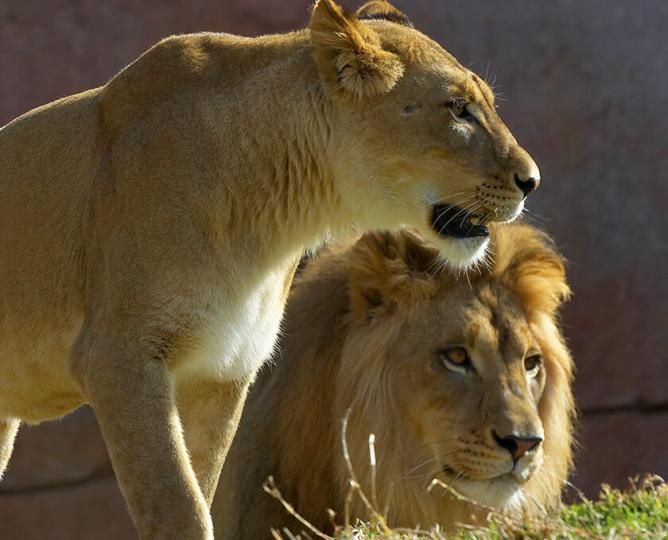
In a 24-hour period, lions have short bursts of intense activity followed by long bouts of lying around that can total up to 21 hours!
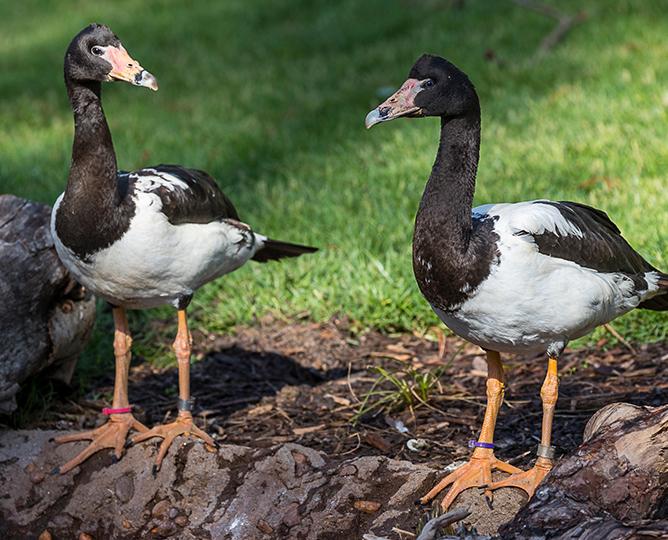
MAGPIE GOOSE
Black and white coloration gives this bird its "magpie" name, but its long bill, long neck and long legs make it hard to mistake for anything other than a goose.

MATSCHIE'S TREE KANGAROO
Instead of hopping on the ground, Matschie's tree kangaroos climb high in the trees, where they feed on leaves.
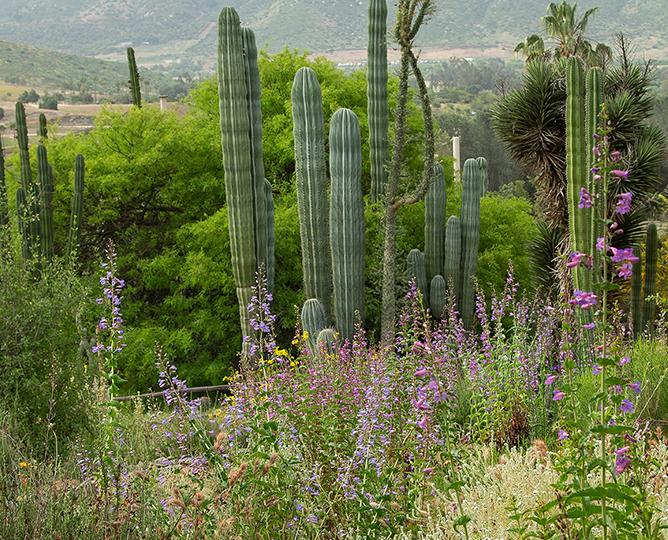
NATIVESCAPES GARDEN
The Safari Park's Nativescapes Garden is home to more than 1,500 individual plants representing 500 species, all of which historically call Southern California home.
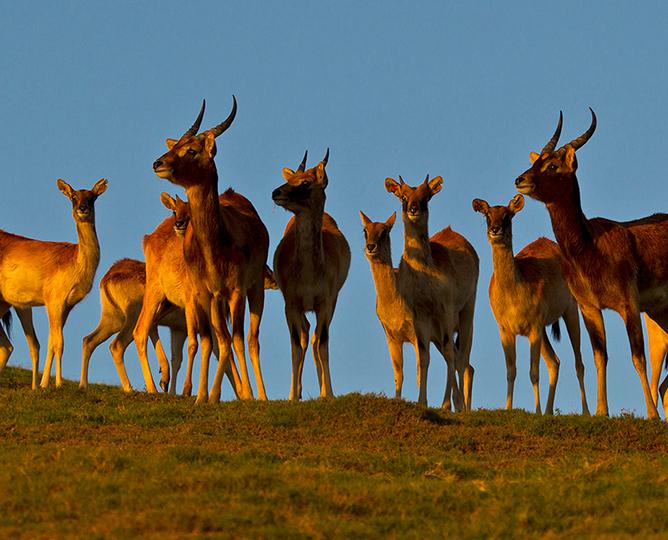
NILE LECHWE
The Nile lechwe's long, slender hooves are ideal for moving through water and mud—but on dry land, this antelope sometimes looks a bit clumsy.
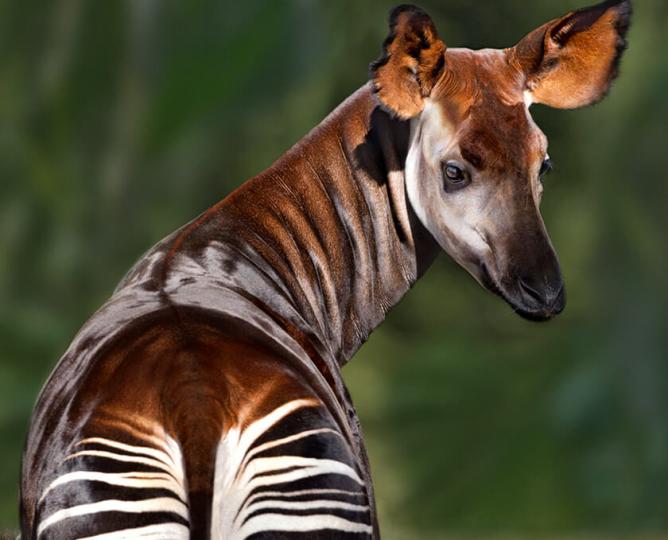
Okapis are hard to find in the wild—the dense rainforest in central Africa. Scientists didn’t know of the animal's existence until 1900.
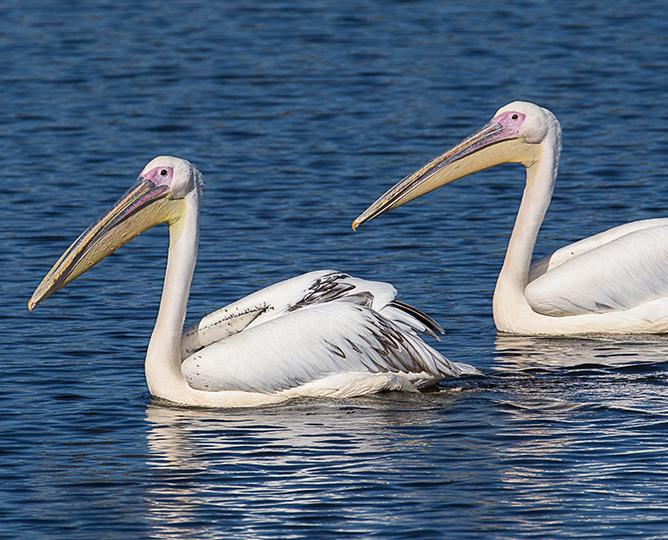
Pelicans are among the only birds with an enormous, naked-skin pouch under their bill, which they use to catch fish.
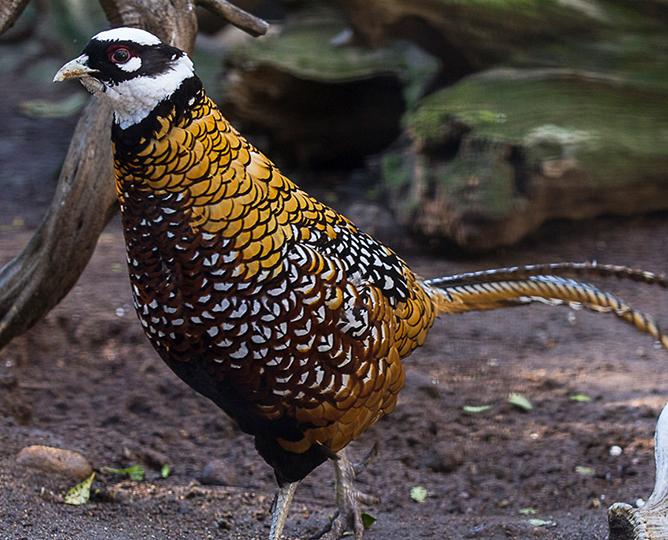
Argus pheasants are the size of peafowl and live in the montane forests of Southeast Asia. They have powerful legs and strong flight muscles to move their heavy body, and eyes on the side of their head to help detect predators.
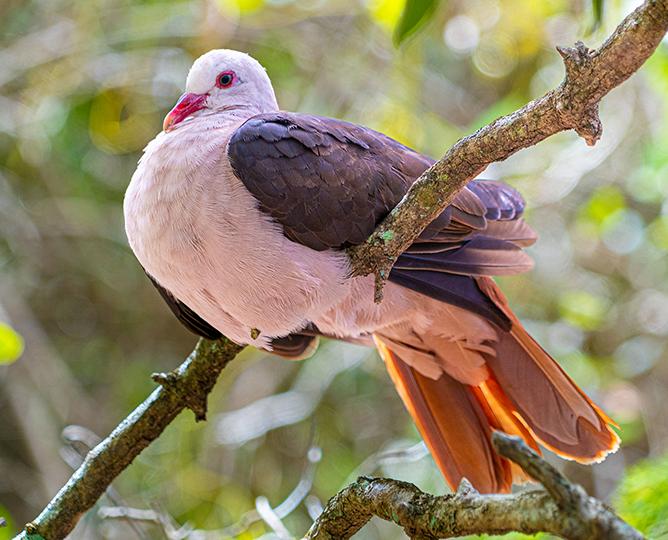
PINK PIGEON
Endangered pink pigeons, native to the island of Mauritius, are victims of habitat destruction. In 1994, only 77 of them remained in their native habitats.
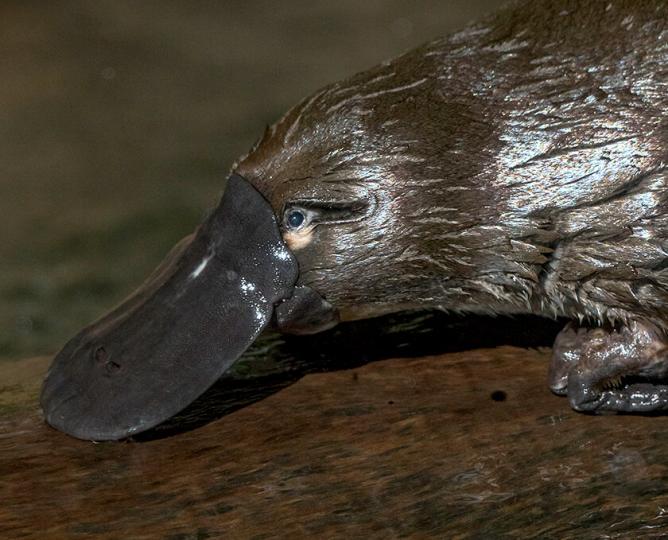
The platypus looks like no other mammal. And even more unusual, this mammal lays eggs.
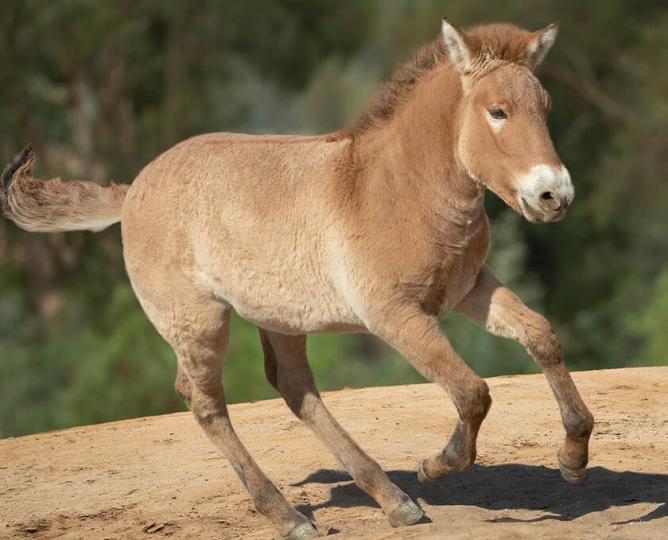
PRZEWALSKI'S HORSE
The Przewalski's horse is the closest living relative of the domestic horse—and it is the only true wild horse left on Earth.
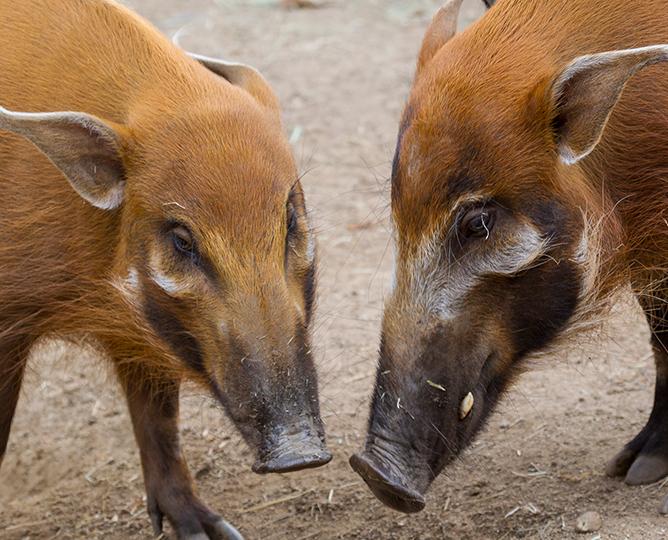
RED RIVER HOG
Colorful red river hogs are active both day and night—and they are good swimmers, holding their tail above the water. They can even swim underwater, catching a breath every 15 seconds or so.
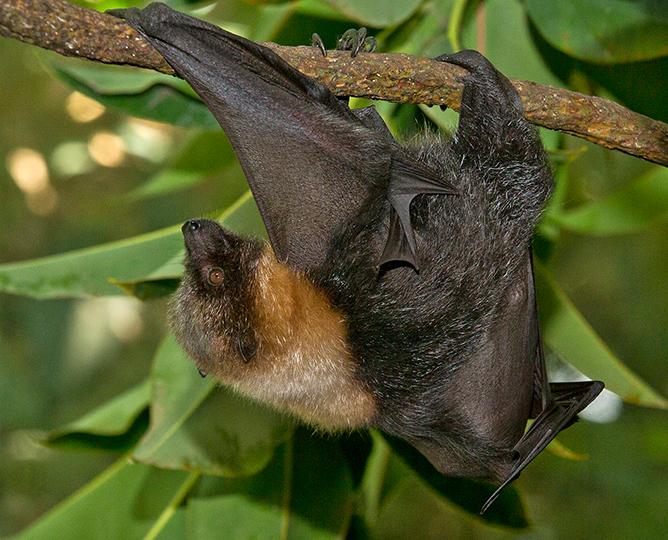
RODRIGUES FLYING FOX
In our cozy Bat House in Nairobi Village, a camp of Rodrigues flying foxes observes guests from an upside-down perspective! These cute little creatures weigh about one pound.
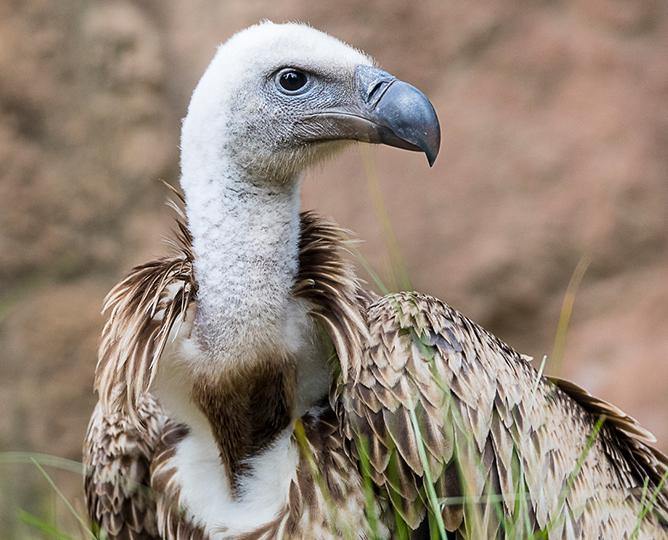
RUPPELL'S VULTURE
The Ruppell’s vulture is the world's highest-flying bird, capable of flying at altitudes up to 35,433 feet (10,800 meters).

Save the Chubby Unicorns

Gorilla Shadow

PREFERRED HOTELS
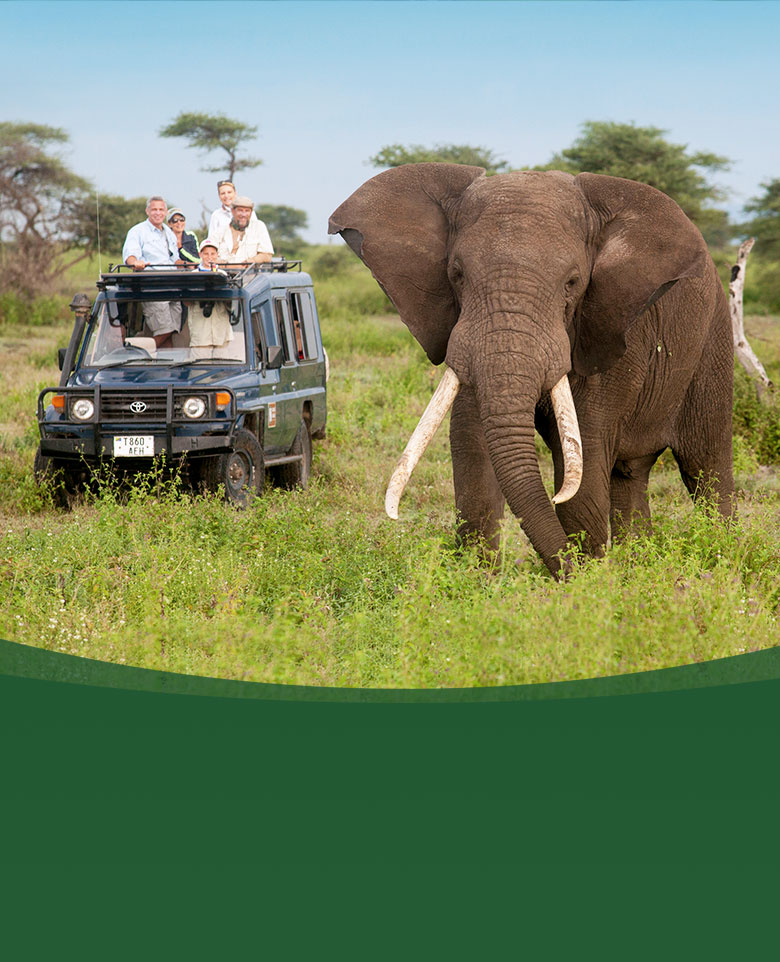
Come Travel with Us!

Travel with us to see Monarchs
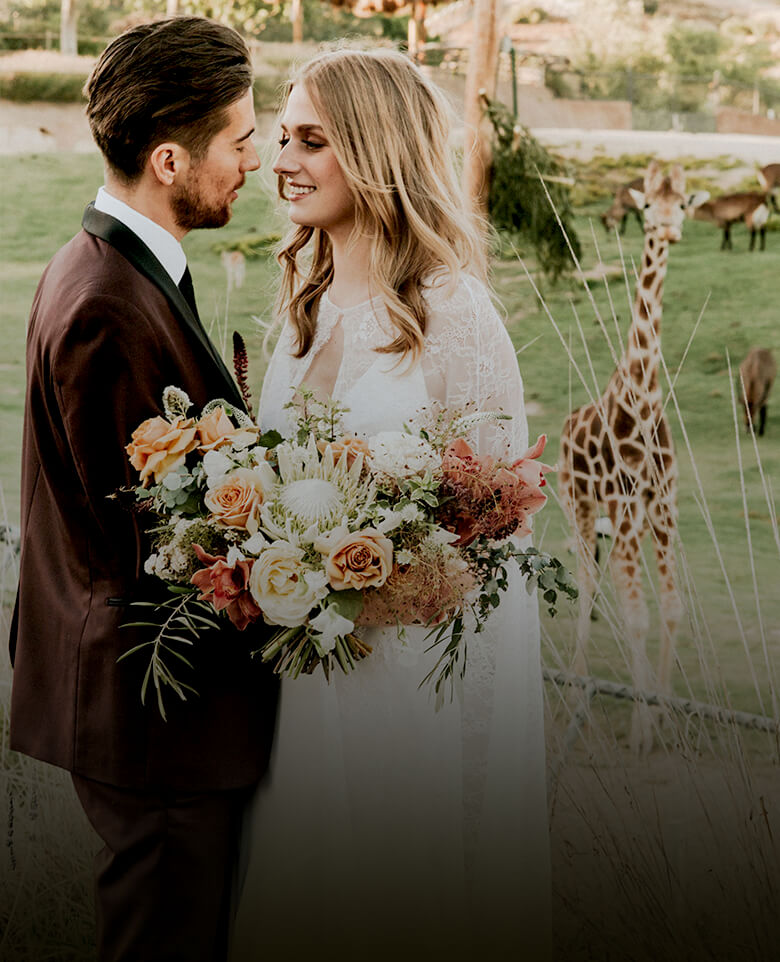
Picture Your Special Day at the Park!

Visit San Diego Wild Animal Park – A Complete Guide to San Diego Zoo Safari Park
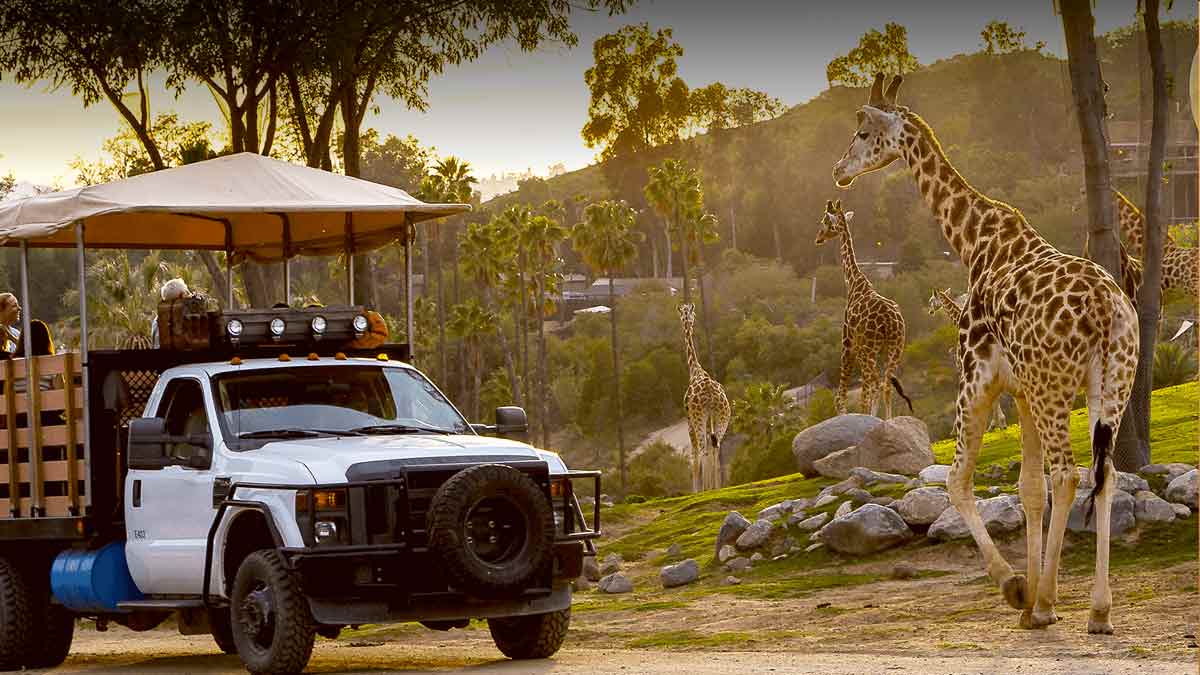
Courtesy: sdzsafaripark.org
Ever wondered what it’s like to be up close and personal with a cheetah, or to hear a lion’s roar echo through the night? Well, buckle up, because we’re about to embark on a wild adventure at the San Diego Zoo Safari Park (aka the Wild Animal Park). This isn’t your typical zoo visit. It’s an immersive experience that transports you and your family into the heart of diverse ecosystems, where you’ll encounter some of the world’s most exotic creatures. So, let’s dive right in and explore the wild side of San Diego!
A Walk on the Wild Side: The San Diego Zoo Safari Park Experience
Planning your safari adventure, exploring the park: map and major attractions, must-see animals and exhibits, choosing the right safari for you, special exhibits: dinosaurs, birds, and butterflies, preparing for your visit, conservation efforts and educational opportunities, food and amenities, comparing san diego zoo and safari park, amenities and services, staying near san diego zoo safari park, tips and tricks for a great visit, bottom line.
The San Diego Zoo Safari Park, formerly known as the Wild Animal Park, offers a unique experience that sets it apart from other zoos. Nestled in the San Pasqual Valley area of San Diego, California, the park has a rich history dating back to its opening in 1972. Originally named the San Diego Wild Animal Park, it was a place where animals from the San Diego Zoo could live in large, open spaces. Housing over 3,600 animals representing more than 300 species in large habitat areas, the park provides plenty of stimulation for its inhabitants, allowing them to interact with various species they might encounter in a natural environment. This 1,800-acre wildlife preserve and botanical garden offer a lot of adventure, and we’re here to guide you through it.
The park changed its name when it shifted its focus to offer more intimate animal encounters and adventure experiences that mimic going on a mini safari. You can even camp out in the middle of the savanna between the elephants and lions for Roar & Snore! Other experiences include zip-lining over animal enclosures, meeting animals up close in a safari setting, or getting a condor’s-eye view of the park from a giant balloon.
What Makes San Diego Zoo Safari Park Unique?
What sets the San Diego Zoo Safari Park apart is its commitment to conservation and its unique approach to animal exhibits. The park spans an impressive 1,800 acres, designed to mimic natural habitats, giving visitors the opportunity to see animals interact as they would in the wild. The park is also home to the world-renowned Institute for Conservation Research, where scientists conduct research to conserve species and habitats. From the African Plains to the Asian Savanna, every corner of the park offers a new adventure.
Best Time to Visit
While the park is open year-round, the best time to visit is during the cooler months, from September to May. During these months, the animals tend to be more active and the park is less crowded. However, any time is a good time to visit the park, as there are always exciting exhibits and experiences to enjoy.
Tickets and Discounts
Admission to the park includes access to all the exhibits, shows, and the Africa Tram.
As of my last visit, a one-day pass for adults (ages 12 and up) was $69, and a one-day pass for children (ages 3-11) was $59. Children 2 and under are free. Prices may vary, so I recommend checking the park’s official website for the most accurate and up-to-date information.
There are also special experiences available for an additional cost, such as the Cheetah Run, Roar & Snore Safari, and Behind-the-Scenes Safari. The park offers discounts for AAA members, military personnel, and San Diego residents. Be sure to check the official website for the most up-to-date information on ticket prices and discounts.
But if you want to head straight to the gate (especially if you are doing any early early safaris, which start before the ticket windows open and you need separate park admission for those) – then you really want to have the tickets ahead of time.
E-ticket from GetYourGuide is the easiest as you just redeem them at the park turnstile.
Go to this for a complete list of various options available to save on San Diego Zoo Safari Park tickets .

Directions and Address
The San Diego Zoo Safari Park is located at 15500 San Pasqual Valley Rd, Escondido, CA 92027. It’s easily accessible by car and there is ample parking available. If you’re using a GPS, be sure to enter the full address to get accurate directions.
Weather Considerations
San Diego has a mild climate year-round, but it can get hot in the summer months. Be sure to dress appropriately for the weather, wear sunscreen, and stay hydrated. Most of the park is outdoors, so be prepared for the elements. There are a number of experiences that will get you up close and personal with the animals, and it’s best to book those in advance. You’ll save money reserving in advance rather than purchasing in the park — plus you’ll guarantee your spot. Many of these experiences have age restrictions, so keep those in mind as you search for the right experience for your family.
Understanding the Park Layout
The park is divided into different zones, each representing a different region of the world. The Africa Tram, which is included with admission, offers a guided tour around the African and Asian regions of the park, providing an overview of the different habitats and the animals that live in them.
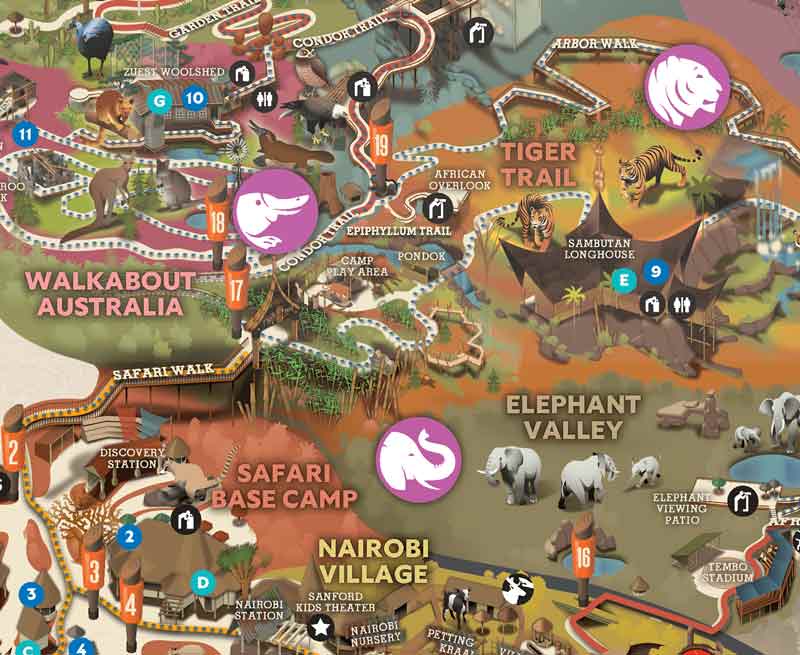
Map PDF download
The park is home to a diverse range of animals, from the majestic African elephants and graceful giraffes to the elusive cheetahs and playful lemurs. Don’t miss the Lion Camp, where you can come face-to-face with African lions, or the Elephant Valley, where you can watch the park’s herd of African elephants. For bird lovers, the park’s Bird House offers a chance to see a variety of exotic birds up close.
The San Diego Zoo Safari Park is home to a vast array of exhibits and attractions that cater to all ages and interests. From the African Plains, where you can spot rhinos, giraffes, and gazelles, to the Australian Outback, where you can meet the kangaroos and koalas , there’s something for everyone. The park also features a number of interactive exhibits, such as the Lorikeet Landing, where you can feed colorful lorikeets, and the Petting Kraal, where kids can get hands-on with gentle goats.
San Diego Zoo Safari Park offers a variety of safari experiences, each providing a unique perspective of the park’s wildlife. The Caravan Safari is a popular choice, allowing you to get up close and personal with giraffes, rhinos, and other African animals. For a more adventurous experience, the Jungle Ropes Safari offers an obstacle course through the trees, while the Flightline Safari sends you soaring over the park on a zip line.
Roar & Snore Safari:
Sleep in a tent in the Safari Park and wake up to the sounds of lions roaring and elephants playing.
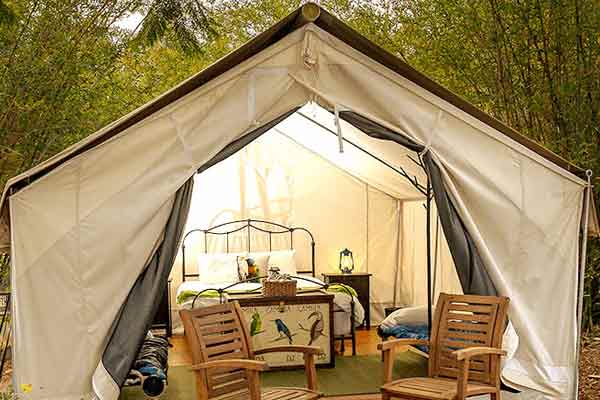
Wildlife Safari:
Enter the actual exhibit and meet Asian and African mammals and birds. You can go at twilight or go for the deluxe version with close-up views of giraffes, rhinos, and other species.
Cart Safari:
Follows a similar path as the Africa Tram around the exhibits, but you can get closer to some areas, ask questions, and request to pause to get the perfect picture.
Flightline Safari:
Soar over the Safari Park to get a bird’s-eye view of the wildlife on the Flightline Safari.
Cheetah Safari:
See a cheetah reach top speed right before your very own eyes on the Sun Up Cheetah Safari.
Balloon Safari:
Get a bird’s-eye view (400 feet in the air!) from a tethered helium balloon modeled after the hot air balloon tours of the Serengeti.
In addition to its regular exhibits, the park also hosts special exhibits throughout the year. Past exhibits have included Dino Mountain, a prehistoric adventure featuring life-sized animatronic dinosaurs, and the Butterfly Jungle, a seasonal exhibit where visitors can walk among thousands of beautiful butterflies.
Whether you’re going on a safari or hopping around the park, you’ll need to dress for a workout. Wear layers you can shed as the sun warms things up in the afternoon. Hiking shoes or good walking shoes are a necessity for exploring the park, which is very spread out and hilly. Despite all of the walking, the park is very kid-friendly. There are multiple playgrounds, a lot of shady spots, fun photo opportunities for tadpoles, and limitless chances to hop, skip, jump, and climb around the park.
The San Diego Zoo Safari Park isn’t just about fun and adventure. It’s also a leading center for wildlife conservation and education. The park is involved in various conservation projects worldwide, working to protect and preserve endangered species. During your visit, you can learn about these efforts through informative displays and educational talks. The park also offers a range of educational programs for kids and adults alike, including summer camps, wildlife sleepovers, and behind-the-scenes tours.
After all that adventure, you’re bound to work up an appetite. Luckily, the park offers a variety of dining options to suit all tastes. From casual cafes to sit-down restaurants, you’ll find a range of delicious meals and snacks to keep you fueled for your safari adventure. The park also has several gift shops where you can pick up souvenirs, as well as amenities such as stroller rentals and wheelchair accessible facilities.
While both the San Diego Zoo and Safari Park offer amazing wildlife experiences, they each have their unique features. The Zoo, located in Balboa Park, houses a diverse range of animals in a more traditional zoo setting. The Safari Park, on the other hand, is known for its expansive free-range enclosures and safari experiences. If you’re looking for a more immersive and adventurous wildlife experience, the Safari Park is the way to go.
Dining Options: Restaurants Near the Park
There are several dining options within the park, including the Savannah Grill, which offers a variety of food options, and the Watering Hole, where you can enjoy a meal with a view of the African Plains. If you’re looking for more dining options, the city of Escondido, where the park is located, offers a variety of restaurants to suit every palate.
Shopping: Gift Shop and Souvenirs
The Safari Park’s gift shop is a great place to pick up souvenirs of your visit. From plush toys of your favorite animals to clothing and unique art pieces, there’s something for everyone. Plus, every purchase helps support the park’s conservation efforts.
Accessibility and Special Services
The park is committed to ensuring that all guests can enjoy their visit. Wheelchair rentals are available, and the park’s tram is accessible to guests with mobility disabilities. Additionally, the park offers a sensory guide on their website to help guests with sensory processing needs plan their visit.
Hotels Near the Park: Recommendations and Reviews
There are several hotels near the Safari Park that offer comfortable accommodations.
The Rancho Bernardo Inn is a popular choice, known for its beautiful grounds and excellent service. Check its availability here.
The Hampton Inn San Marcos is another great option, offering clean rooms and a complimentary breakfast. Check its availability here.
For a more luxurious stay, consider the Welk Resorts San Diego , which features spacious rooms and a variety of on-site amenities. Check its availability here.
Best Hotel Packages for Park Visitors
Several hotels in the area offer packages that include accommodations and tickets to the Safari Park. The Hilton Garden Inn San Diego/Rancho Bernardo, for example, offers a Safari Park Package that includes overnight accommodations, two adult tickets to the park, and breakfast for two.
Making the Most of Your Visit: Do’s and Don’ts
To make the most of your visit, here are some do’s and don’ts to keep in mind:
- Do plan your visit ahead of time. Check the park’s schedule and plan your day around the shows and feeding times you want to see.
- Don’t forget to wear comfortable shoes. The park is large and there will be a lot of walking.
- Do bring a hat and sunscreen. Much of the park is exposed and it can get hot, especially in the summer.
- Don’t feed the animals. It’s important to respect the animals’ diets and not to disrupt their feeding routines.
- Do take plenty of photos, but don’t use flash photography. It can startle the animals.
- Don’t smoke in the park. For the comfort of all guests and the safety of the animals, the park is a smoke-free environment.
Insider Tips: How to Get the Best Photos, Avoid Crowds, and More
- To get the best photos, consider taking the Photo Caravan Safari, which provides opportunities for up-close animal encounters and photography tips from a professional.
- To avoid crowds, try to visit on a weekday and arrive early when the park opens. Also, consider downloading the San Diego Zoo Safari Park app, which includes a GPS-enabled map and other useful features to enhance your visit.
- If you’re planning to see a popular show or feeding, try to get there early to secure a good viewing spot.
- Don’t forget to check out the park’s special exhibits and experiences, like the Roar & Snore Safari and the Balloon Safari. They can make your visit even more memorable.
- Finally, remember to take your time and enjoy the experience. The park is a place to connect with nature and learn about wildlife, so there’s no need to rush. Take the time to observe the animals and enjoy the beautiful surroundings.
A visit to the San Diego Zoo Safari Park is more than just a day out. It’s an opportunity to step into the wild, to come face-to-face with nature, and to learn about the vital conservation efforts that are helping to protect our planet’s most vulnerable species. So why wait? Unleash your wild side and start planning your safari adventure today!
What happened to San Diego Wild Animal Park?
The San Diego Wild Animal Park changed its name to the San Diego Zoo Safari Park in 2010. The name change was part of a shift in focus to offer more intimate animal encounters and adventure experiences that mimic going on a mini safari.
Is there a difference between San Diego Zoo and Wild Animal Park?
Yes, there is a difference. While both are operated by the San Diego Zoo, the Safari Park offers a unique experience that sets it apart. It is designed to give visitors the feeling of being on an African safari, with large, open enclosures that allow animals to roam freely.
How long does it take to go through the San Diego Wild Animal Park?
The time it takes to go through the park can vary depending on your interests and the activities you choose to do. However, most visitors spend between four to six hours exploring the park.
When did the San Diego Wild Animal Park change its name?
The San Diego Wild Animal Park changed its name to the San Diego Zoo Safari Park in 2010.
Do you drive your own car through San Diego Safari?
No, visitors do not drive their own cars through the park. Instead, the park offers a variety of guided tour options that take you through the different exhibits.
Is there a lot of walking at San Diego Safari?
Yes, there can be a lot of walking at the Safari Park as it is very spread out. However, the park offers a tram that can take you around the main exhibits, and there are plenty of places to rest along the way.
What are some of the unique experiences offered at the park?
The park offers a variety of unique experiences, including the Roar & Snore Safari where you can sleep in a tent in the park, the Wildlife Safari where you can enter the actual exhibit and meet animals, and the Flightline Safari where you can soar over the park for a bird’s-eye view of the wildlife.
What conservation efforts is the park involved in?
The San Diego Zoo Safari Park is involved in various conservation projects worldwide, working to protect and preserve endangered species. They also run educational programs to raise awareness about wildlife conservation.
What dining options are available at the park?
The park offers a variety of dining options, from casual cafes to sit-down restaurants. There are also several gift shops where you can pick up souvenirs.
What amenities does the park offer?
The park offers amenities such as stroller rentals and wheelchair accessible facilities to ensure a comfortable visit for all guests.
What is the best time to visit the San Diego Zoo Safari Park?
The best time to visit the park is during the cooler months of the year, from September to May. During these months, the animals are more active and the park is less crowded.
Are there any discounts available for the San Diego Zoo Safari Park?
Yes, the park offers a variety of discounts, including for AAA members, military personnel, and San Diego residents. It’s best to check their official website for the most up-to-date information on discounts and promotions.
What should I bring for my visit to the San Diego Zoo Safari Park?
It’s recommended to bring comfortable walking shoes, sunscreen, a hat, and a water bottle. You may also want to bring a camera to capture your safari adventure!
Can I bring my own food and drinks to the San Diego Zoo Safari Park?
Yes, you can bring your own food and non-alcoholic drinks to the park. However, glass containers, straws, and lids are not allowed for the safety of the animals.
What safety measures are in place at the San Diego Zoo Safari Park?
The park has a number of safety measures in place to ensure a safe and enjoyable experience for all guests. These include strict rules on feeding and interacting with the animals, as well as regular cleaning and sanitizing of public areas.
Can I bring my pet to the San Diego Zoo Safari Park?
No, pets are not allowed in the park for the safety and comfort of the animals. However, service animals are permitted.
What is the best way to get to the San Diego Zoo Safari Park?
The park is located in Escondido, California , and is easily accessible by car. There is ample parking available, and the park also offers a shuttle service from select locations in San Diego.
What are the park’s operating hours?
The park’s operating hours vary throughout the year, so it’s best to check their official website for the most up-to-date information. Generally, the park opens at 9:00 AM and closes between 5:00 PM and 7:00 PM depending on the season.
Is the San Diego Zoo Safari Park wheelchair accessible?
Yes, the San Diego Zoo Safari Park is wheelchair accessible. The park offers wheelchair rentals and also allows guests to bring their own wheelchairs and mobility devices.
Can I host a private event at the San Diego Zoo Safari Park?
Yes, the park offers a variety of venues for private events, including birthday parties, weddings, and corporate events. You can contact their events team for more information and to make a booking.
What educational programs does the park offer?
The park offers a range of educational programs for all ages, including summer camps, wildlife sleepovers, and behind-the-scenes tours. They also run programs for schools and community groups.
What is the park’s policy on photography and filming?
Guests are welcome to take photos and videos for personal use. However, commercial photography and filming require a permit. It’s also important to respect the animals and their habitats when taking photos or filming.
What should I do if I see an animal in distress?
If you see an animal in distress, you should immediately notify a park staff member. They are trained to handle these situations and will take the necessary steps to ensure the animal’s well-being.
What can I do to support the park’s conservation efforts?
There are many ways you can support the park’s conservation efforts. You can make a donation, become a member, volunteer your time, or even adopt an animal. Every little bit helps in their mission to protect and preserve wildlife.
What is the park’s policy on smoking?
The San Diego Zoo Safari Park is a smoke-free facility. Smoking, including the use of e-cigarettes, is not permitted anywhere in the park.
What happens in the event of bad weather?
The park remains open in most weather conditions, and many of the animals are more active during rain or cooler weather. However, certain shows and experiences may be cancelled due to bad weather. It’s best to check the park’s official website or contact them directly for the most up-to-date information.
Are there any age restrictions for certain experiences?
Yes, some experiences have age restrictions. For example, the Flightline Safari has a minimum age requirement of 8 years old. It’s best to check the park’s official website for specific details on each experience.
What should I wear for my visit to the park?
It’s recommended to wear comfortable clothing and footwear suitable for walking. The park is very spread out and hilly, so good walking shoes are a must. Also, don’t forget to bring a hat and sunscreen to protect yourself from the sun.
What is the best time of year to visit the park?
What is the park’s policy on feeding the animals.
Feeding the animals is not allowed for the safety and well-being of the animals. However, there are certain experiences, like the Lorikeet Landing, where you can feed the animals under the supervision of park staff.
Can I bring a picnic to the park?
Yes, you can bring your own food and non-alcoholic drinks to the park. There are several picnic areas throughout the park where you can enjoy your meal.
What is the park’s policy on large groups and school field trips?
The park welcomes large groups and school field trips. They offer special rates for groups and educational programs for schools. It’s best to contact the park directly for more information and to make a booking.

Co-Founder of the OFT Blog. Mother of 2 who disguises as a 9 to 5 finance professional on most days. She loves to travel, is an amateur website builder and cook. And given her day job, she loves travel planning and saving money. Follow along!
Did you know that …
When you purchase something through our links we earn a small fee. However, you still pay the same. Win-win!
Find Hotels via hotels.com
Find a Rental Car via Discover Cars
Find Cheap Flights via CheapAir
Book Tours & Attractions via GetYourGuide
Get Travel Insurance via SafetyWing
City Pass/Discounts via Sightseeing Pass
Most popular

Every Option of Disneyland Tickets Reviewed

Disneyland , Planning
Disneyland california opening hours – schedule, tips and more.

How Much Does It Cost to Go to Disneyland California

Family Travel , Korea , Other experiences
Our 3-days exploring seoul with kids.


New Zealand
New zealand north island: 4-day itinerary (and suggestions for 5 or 6 days).

What’s Included in Your San Diego Safari Park Admission?
What do San Diego Safari Park tickets include? Here’s a free vs paid tours & attractions chart. Plus the one word you’ll need to instantly know which is which. And that makes decisions so much easier.
San Diego Safari Park admission tickets include Africa Tram, keeper talks & attractions, entertainment, animal encounters & kids playgrounds . But any activity with “Safari” in its name requires payment in addition to the cost of admission. Parking is not included. It costs $20 minimum.
If you make purchases through the links in this post, I may be compensated. Read my Advertising Disclosure for more info. Thanks! ~ Nancy
* Save with a secret promo code on each San Diego Zoo or Safari Park 1-Day Pass. Go any day. Go directly to the gate. Click HERE to get your code, instructions & discounted tickets by email. By clicking the link above you agree to receive an automated email message. Valid only at aRes Travel , San Diego’s local authorized ticket seller. Read my full privacy policy .
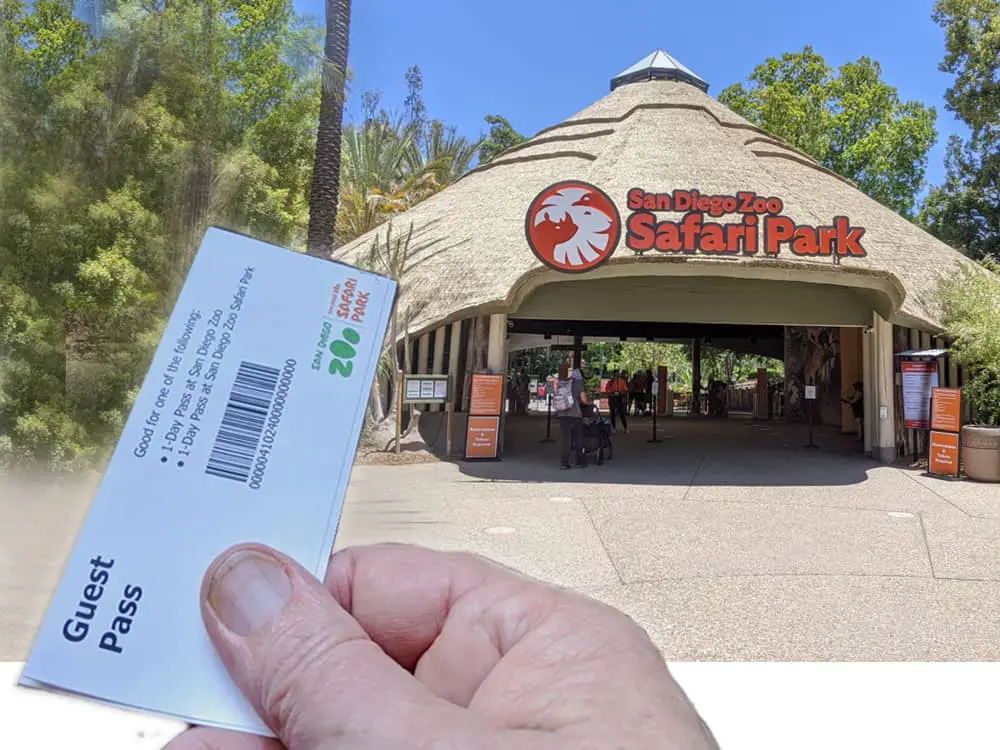
Continue reading if you’re curious about whether you can have a great time with just what’s included with admission. I’ve provided descriptions of all the activities, animal encounters, shows, and Safaris at San Diego Zoo Safari Park for you to help you make up your mind.
What San Diego Safari Park Exhibit Areas Are Included With Admission
First, parking is not free at San Diego Zoo Safari Park. But most of the rest of the park can be explored freely with your entry fee. When you look at the Safari Park map there are 14 different sections at the San Diego Zoo Safari Park. All but two of them are accessible to you with your admission.
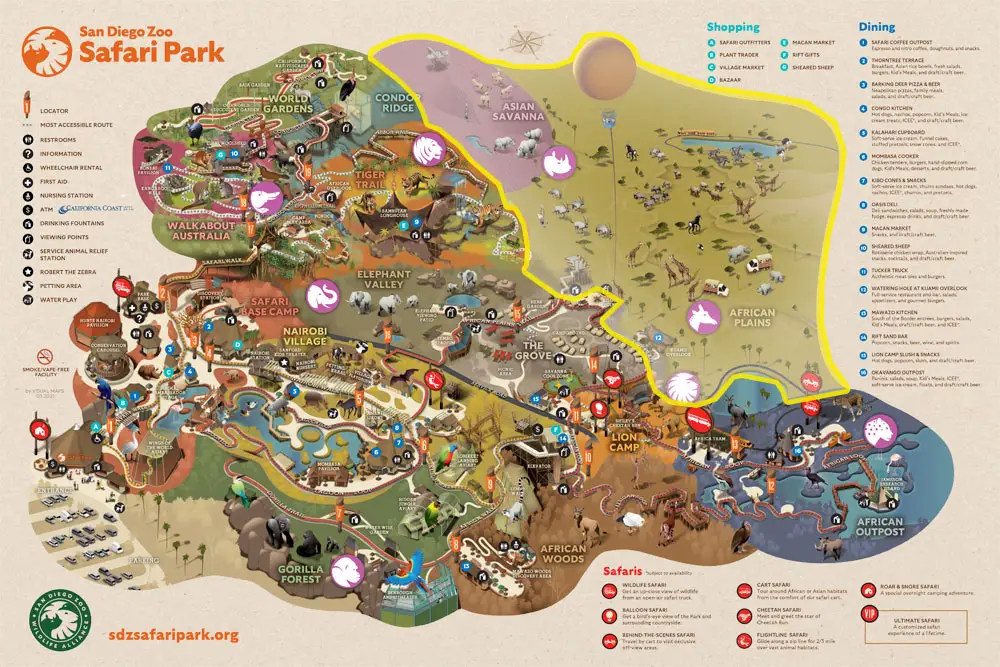
The 2 different areas that you are not able to navigate on your own are Africa Plains and Asian Savanna. I marked them with a yellow outline on the map above. You cannot enter these large field exhibits unless you are with Safari Park personnel. You can get inside via paid Safari experiences or via the free Africa Tram. However, many of the animals in both of these areas are visible from other areas in the park.
Highlights of San Diego Safari Park That Are Free With Entry Ticket
The following tours and attractions are some of the highlights at Safari Park. You can ride and experience them as many times as you like. They are:
Africa Tram
Do not miss riding the Africa Tram , it’s included at no extra charge with your admission. It’s also one of the must-see attractions at Safari Park. I’ve been able to ride the Tram hundreds of times (no exaggeration). And every time I notice something new.
Sometimes its been a new baby giraffe or rhino! At other times it’s two antelope sparring with their horns. Or herds of every type of animal running in the same direction like shoppers at a Black Friday sale. Just because one giraffe became spooked by a blowing leaf.
It’s best to ride Africa Tram either early in the day or late. The animals are most active when it is cool. Ride as many times as you’d like while you’re at San Diego Safari Park.
Hidden Jungle
Hidden Jungle is a tropical rain forest aviary that’s included in your San Diego Safari Park admission ticket . It’s located in the Gorilla Forest area. This climate-controlled environment is populated by colorful birds, delicate plants and towering trees. It can be a bit humid during the summer and early fall. Visit the birds either early or late in the day during those seasons.
This is also where the Butterfly Jungle event takes place every spring . Thousands of colorful butterflies flutter by in search of nectar from the blooming jungle flowers. They often land on you. Which makes the experience special for kids and adults alike.
At the end of the Butterfly Jungle event, the birds eat any caterpillars that have hatched. This ensures that the colorful non-native butterflies do not invade the fertile farms of the San Pasqual Valley.
The Gorilla Forest is also free with your admission . It’s home to the Safari Park’s troop of Western lowland Gorillas.
These (relatively) peaceful, family-oriented, plant-eaters are a favorite with kids. Their exhibit includes gorilla hand and footprints (which kids love to measure against their own). There is a life-sized drawing that guests can use to compare their arm lengths to that of an adult male gorilla. And recordings of the noises made by the gorillas when they’re communicating with each other.
Kangaroo Walk

Kangaroo Walk is free with your San Diego Safari Park entry also . Mingle with kangaroos, wallabies, and waterfowl in this Australian savanna grassland environment inside Walkabout Australia. See the ‘roos with their baby joeys go bounding by.
There are a few wallabies that come on the marked paths for some gentle petting and stroking. Because of COVID, this is now discouraged. But sometimes the critters insist. Don’t worry. Wallabies feel like they look, soft and woolly!
Do you want to know about other animals that you are allowed to touch at either San Diego Zoo or Safari Park? Then check out my article, “ Can You Hold Animals at the San Diego Zoo? “
Nairobi Station
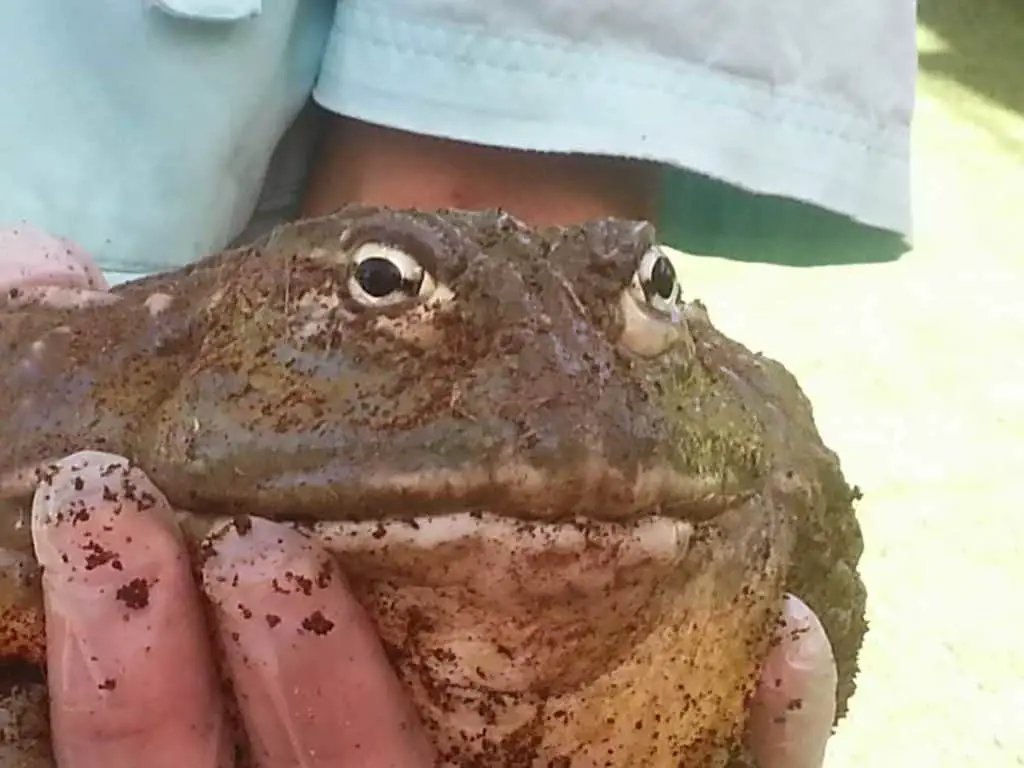
You don’t need to pay extra to walk through Nairobi Station . You can get close-up views of some of San Diego Safari Park’s smaller animals. Depending upon the animal you may even get to touch them. Just make sure to ask their keepers first.
Nairobi Station is also the home of the Animal Care Center . Animal babies that need to be hand-raised because their mothers cannot care for them are brought to this nursery. It can get very crowded (with people) here if this facility is hosting young lions or cheetahs.
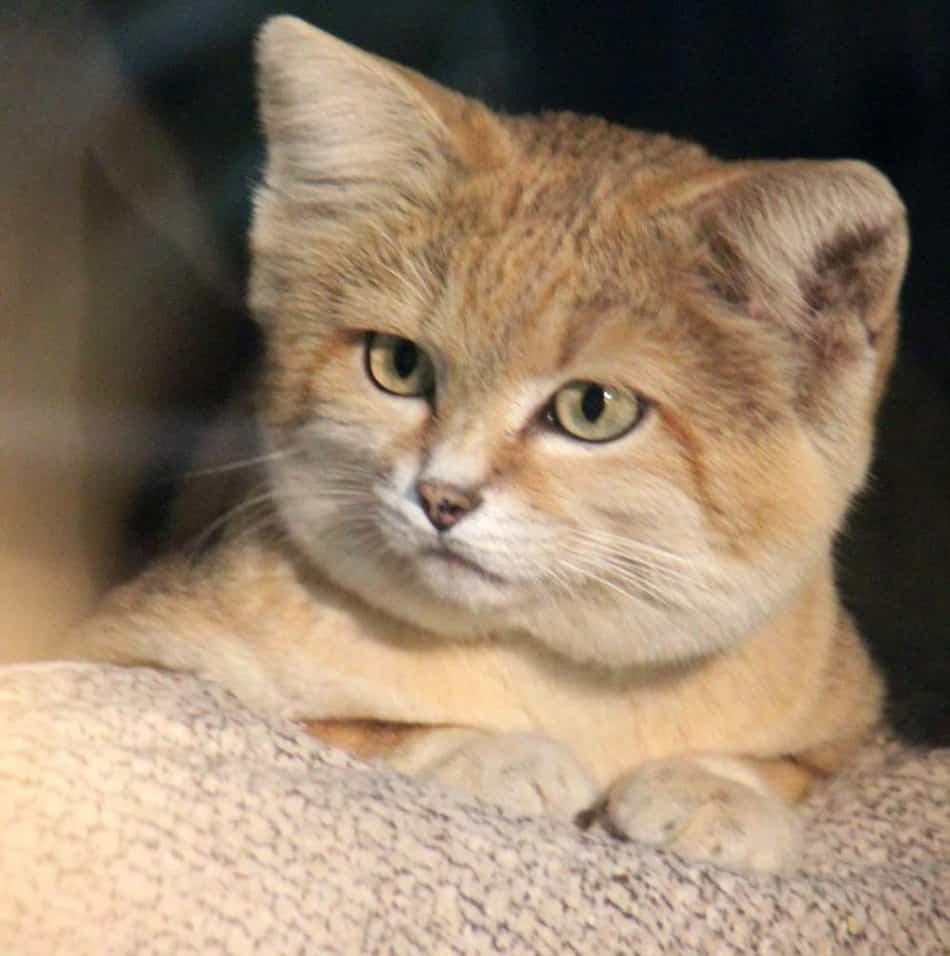
While you’re here, take a look at the sandcat. WARNING : If you love felines, their round faces will make your heart melt into a puddle on the floor. Even those who don’t particularly like cats have been known to succumb to their megatonne-weight cuteness.
Petting Kraal
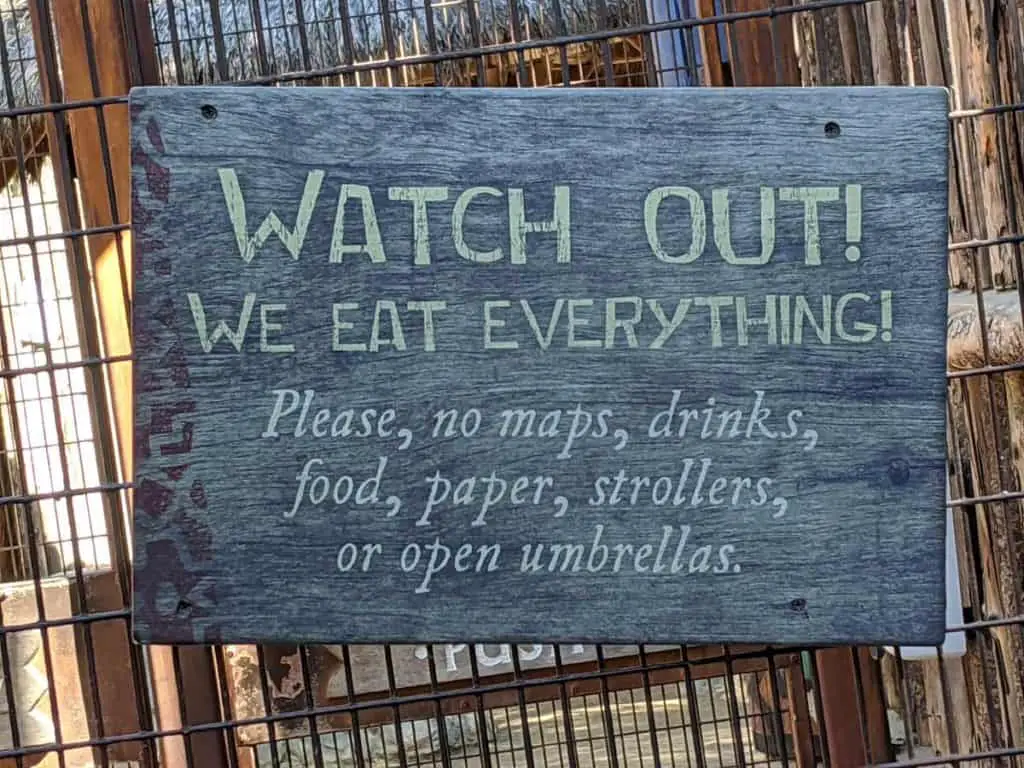
Petting and brushing the goats in the Petting Kraal will not cost you any extra in addition to your admission fee. This is the closest thing to a classic “children’s petting zoo” at either the Safari Park or the San Diego Zoo. The pygmy, Nubian, and Boer goats are just the right size to interact with human kids.
Be sure to close and secure any purses or backpacks. The goats are intensely curious and will nibble on almost anything.
Playgrounds
There are 5 play areas for kids. And as far as I’m concerned that deserves its own category.
Camp Play Area
You and your kids are free to enter Camp Play Area with your park admission . It’s located in Tiger Trail (click the link for my full article). This playground is built to resemble a logging camp in the Sumatran rain forest. There are logs to climb, rope ladders and statues of tigers and their cubs to play on. And of course there are real tigers to look at right around the corner.
Jameson Research Island
This seasonal water play area won’t cost you or your kids any extra cash . It’s located on the African Loop trail within the Safari Park’s African Outpost area. It is usually open during the hot days of summer. It provides cooling splashes on the walk between the flamingos and colobus monkeys.
Samburu Jungle Gym
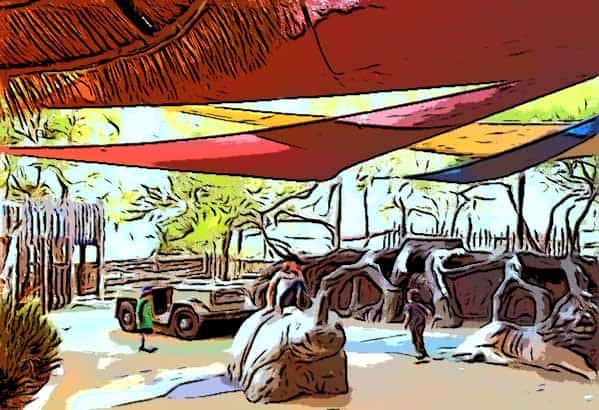
You’ll love that your kids can climb and explore here because it comes free with the Safari Park admission . This playground is located in the African Woods area. It’s close to the bird show amphitheatre and the Lemur Walk.
Your little monkeys will enjoy a shaded play area with a jeep, rhino and a lion to ‘ride’ and tree trunks to crawl through. You’ll be happy because you’ll be keeping an eye on them from shaded Samburu Terrace . Sip a cool craft beer or soda while you’re unwinding.
Savanna Cool Zone
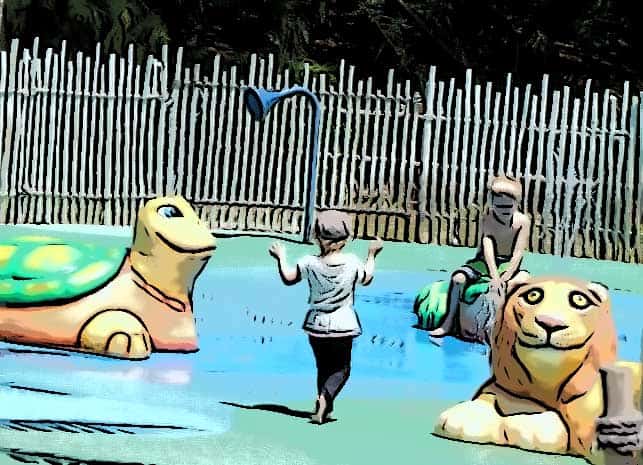
This seasonal water playground is open to everyone with entry to Safari Park . It’s located near Lion Camp and Shiley’s Cheetah Run track. It’s a godsend for parents who are waiting in the hot sun for Cheetah Run to start. Send the kiddos to cool off in the fountains. And if you get soaked trying to retrieve them that’s not so bad.
Village Playground
V illage Playground is also free with admission to San Diego Safari Park. It’s located in the Nairobi Village area between the Petting Kraal and the Rodrigues fruit bat exhibit. It’s a good place for those kids who get a bit intimidated by the goats next door.
Entertainment
The San Diego Safari Park does a good job of disguising conservation education as entertainment. You’ll find that these 4 activities provide a fun way to learn about endangered species and how you can help save them and their habitat.
Training Talk
Entry to this 15-minute bird training session is free with your admission . It’s only 15 minutes long, but it is fascinating to watch the positive reinforcement training process. Makes you think that if the Safari Park can teach their feathered charges to do all sorts of amazing things, that you have a chance with your (sometimes) bird-brained babies. Hope!
Robert the Zebra

If Robert the Zebra was located in Las Vegas you would be paying big bucks to see him. But since he’s at San Diego Safari Park you get to see his snarky shtick free with your entry ticket.
Robert’s an interactive digital puppet that’s visible on a big screen in Nairobi Station. He tells jokes, talks with children and adults about what it’s like to be a zebra, and asks visitors questions about their experiences at Safari Park. Listen carefully, some of the kids’ answers to his queries are priceless!
Tiger Keeper Talk
Tiger Keeper Talks are another experience that is included with admission to San Diego Safari Park . Each morning the keepers interact with one of the tigers. For a bit of meat or a scratch behind an ear, the giant cat cooperates to display some of its amazing adaptations to life in the wild.
The highlight for me is when the tiger is asked to stretch full-length upright against the protective mesh barrier so that the keeper can inspect the belly. A tiger on its hind legs is HUGE. And a little scary.
Frequent Flyers
I would pay extra to see this bird show, but I’m glad that Frequent Flyers is free with any Safari Park admission . It’s a free-flying show, which means that any of them are free to fly off into the Escondido sky. But they don’t.
The level of training shown by the birds is impressive. It features vultures, secretary birds, hawks and 3 adorable guinea hens. But the cute star of the show isn’t a bird at all. I’m not going to tell you what it is. Just go see Frequent Flyers and have some fun.
Cheetah Run
Unfortunately, Cheetah Run was put on hold during the COVID-19 restrictions and has not been brought back yet. But if it is brought back, it is a MUST SEE.
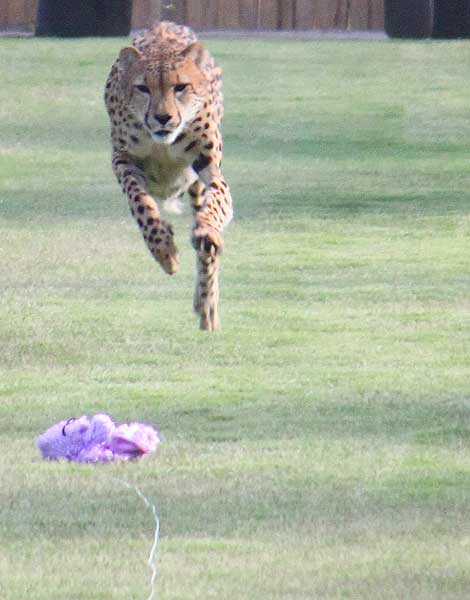
Sun Up Cheetah SAFARI is an early morning paid experience where you get taken in a Safari truck for an exclusive look at the park and see a cheetah run at top speed. Check it out HERE .
Bring your camera because you’ll have the best place to watch the cat run. And your guide and the trainer will arrange for you to be photographed with the cheetah.
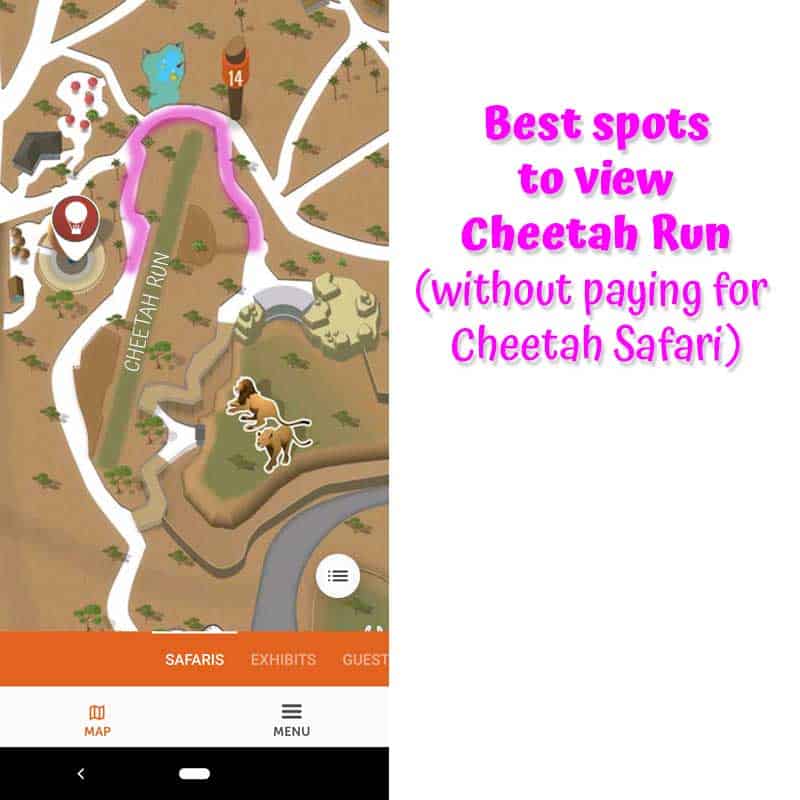
Here are some of the best Cheetah Run viewing locations if you aren’t in the paid Safari:
- On the bridge across from the Savanna Cool Zone. The kids can play in the water while you wait
- Below the Balloon Safari, along the walk to the Africa Tram close to the bridge. The sun will be at your back. And during the summertime that’s a blessing.
- On the other side of Shiley’s Cheetah along the path to Lion Camp. Again, close to the bridge. There are some shady spots here by the trees.
Animal Encounters
Animal ambassador stage.
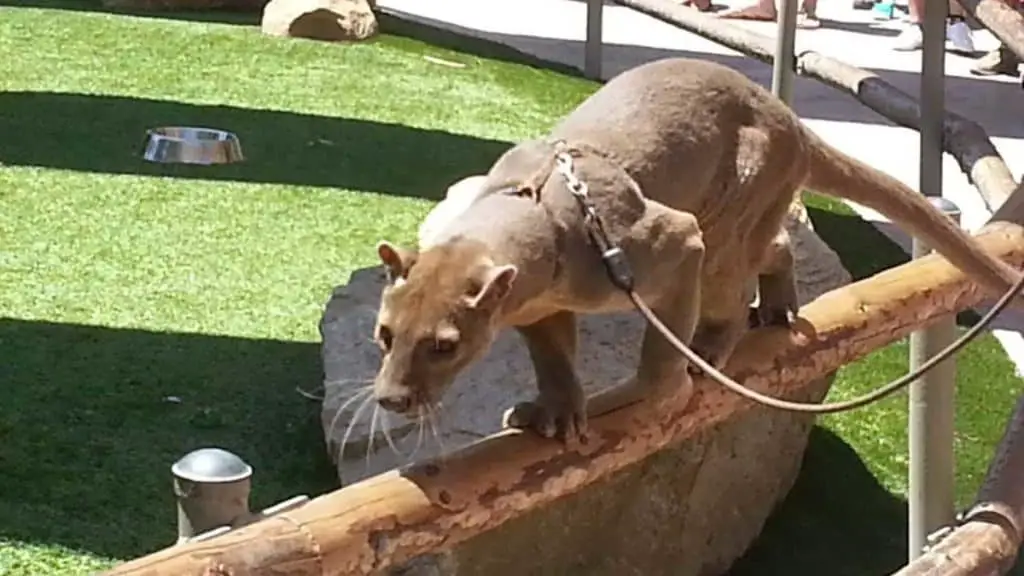
The Animal Ambassador Stage presentations are free with your admission . They are your chance to view some species that may not be on exhibit. The stage is located in Safari Base Camp close to the park entrance. The Ambassadors come out from the park’s opening to noon. And then again starting at 4:00pm to when the park closes.
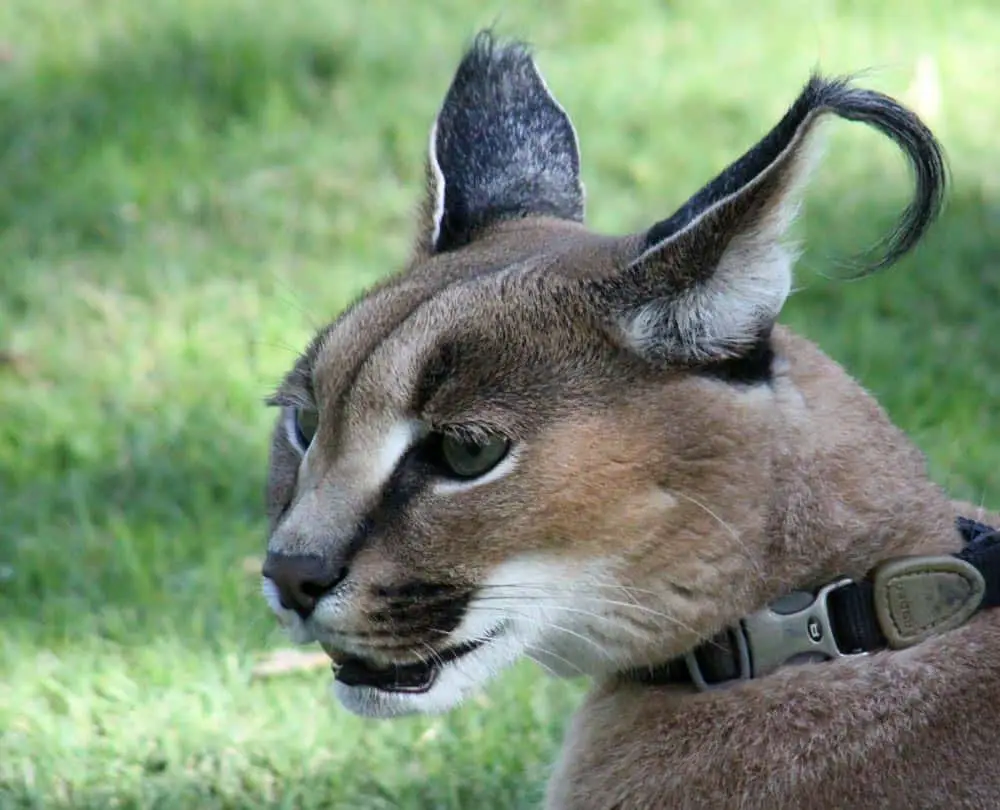
The more spectacular Animal Ambassadors are usually brought out closer to noon. At that time you’re more likely to see their BIG python “Julius Squeezer”, high-jumping servals & caracals , and sometimes even cheetahs.
Near Benbough Amphitheater (Animal Encounter)
We’ve seen a lot of cheetahs at this free presentation which takes place in Gorilla Forest. It only lasts 15 minutes, but it’s a more informal, intimate setting so you get a more up-close view. If you’re reluctant to ask your questions in large crowds, this may be the perfect place for you to get some answers.
Lawn at Okavango Outpost (Animal Encounter)
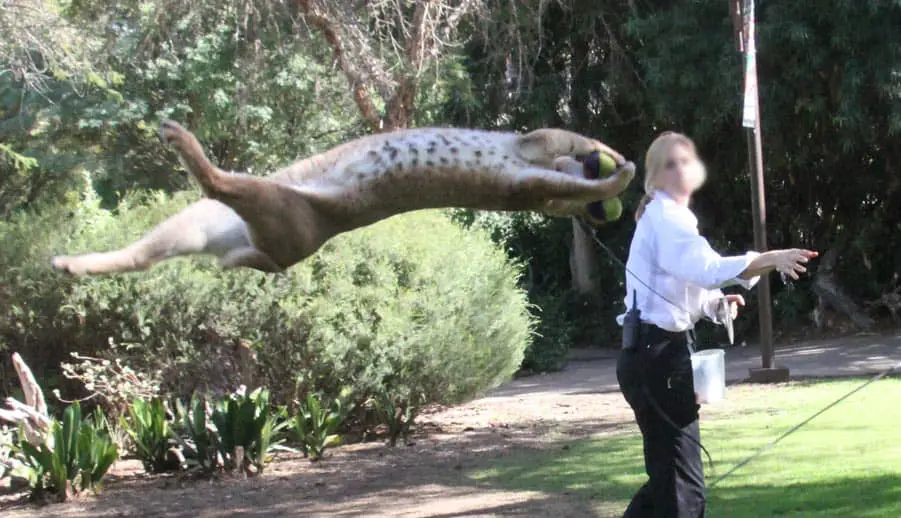
The animal activity on the Lawn at Okavango Outpost is another, more informal free edu-tainment experience. It only lasts 15 minutes, sometimes a bit longer depending upon the animal. But it’s a wonderful photo opportunity. It’s usually uncrowded. Bob has gotten some great photos of leaping caracals here.
8 Types of Safari – Premium Paid Experiences
Here are the eight types of premium “Safari” tours/experiences offered at the San Diego Zoo Safari Park. Most of them have several different options. That means that there are more than 30 different types of Safaris to try at the Escondido wild animal park.
It can get confusing.
I’m going to give you just the basic outlines below. If you’re interested in reserving one of the safaris check out my guide to choosing the best San Diego Safari Park tour for you and your family. The summary chart on that page includes prices, age limits, and trip durations which will help make your decision easier.
Balloon Safari
Fly 400 feet above the park and the picturesque San Pasqual Valley. Best to ride this between opening and noon because it can be grounded because of the strong afternoon winds. Check my balloon safari review for prices & more details.
Behind the Scenes Safari
Tour areas that are off-limits to most park guests. Get an insider’s view of the park while exploring the nighttime ‘bedrooms’ of various animals like platypuses, elephants, tigers, rhinos, kangaroos & cheetahs, feed okapis and see the veterinary center. You can find more information including prices in my Behind the Scenes Safari review.
Caravan Safari
Take a shaded truck with a knowledgeable guide into the park’s huge Asian and African field exhibits. See herds of antelope and other animals up close. Taking stunning animal photos is EASY. Sometimes it’s hard to know where to point your camera first. The best part is that you frequently have opportunities to feed giraffes and rhinos. Best. Selfies. Ever. For more info including prices read my Caravan Safari review .
Cart Safari
View herds of giraffes, rhinos, antelope from the comfort of a 9 passenger cart. Your driver will fill you in on the park history, weird animal facts and answer your questions about animal care and conservation. It’s a more relaxed ride than the Caravan Safari. There are great animal photo opportunities, especially when your driver offers enrichment items or treats to some of the wildlife. Find out more about the two types and prices in my Cart Safari review .
Sun Up Cheetah Safari
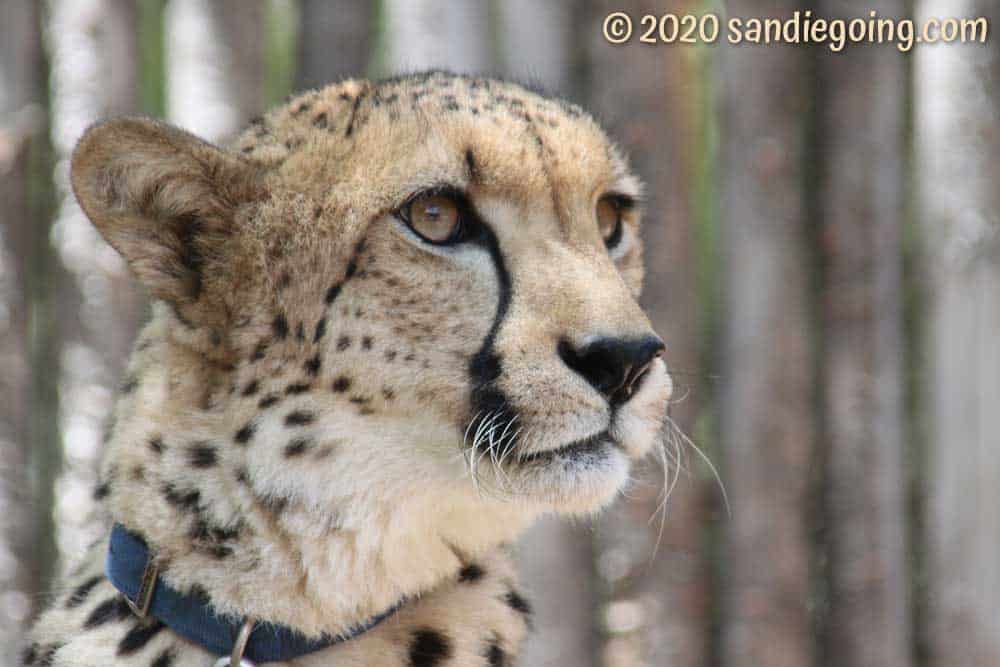
Get the best views of a cheetah running. Have a close encounter with another African Animal Ambassador beforehand. Then have a meet & greet with the spotted sprinter after. Take home great photos of you with a cheetah and wonderful memories. Discover more details including price in my Cheetah Safari review .
Flightline Safari
If you or your kids are adrenaline junkies, this is the safari for you! Soar over the park’s open wildlife fields like a condor. It’s an exhilarating ride over beautiful scenery and animals. Training and practice provided. Find out about prices and more in my Flightline Safari review .
Roar & Snore Safari
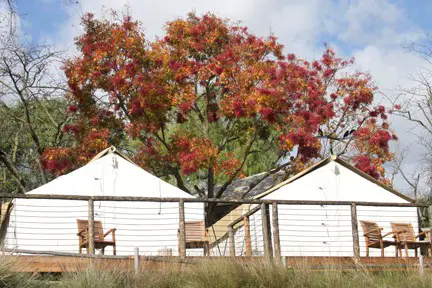
My personal favorite. Spend the night at Safari Park. You sleep in tents overlooking the Africa Plains exhibit. The location’s sandwiched between Elephant Valley and Lion Camp. You fall asleep to the low muttering (and sometimes trumpeting) of elephants and rise to roaring lions. Good food. Great keeper talks. And s’mores around a campfire. I’ve put more details about prices and what to expect in my Roar & Snore Safari review .
Ultimate Safari
Customize your Safari Park experience. Go behind the scenes. Meet animal ambassadors up close. Do it all with your own personal guide. And yes, they feed you too. Find out all about prices and what you can do in my Ultimate Safari review .
Closing Thoughts
I hope that you now have a better idea of what types of tours, attractions, encounters and entertainment that you get with your entry ticket. You can have a wonderful time and fill a whole day (or more) with just the activities that you get with your San Diego Safari Park admission ticket.
Nancy Ulrich
I'm nuts...about animals, polymer clay, mixed media art & husband Bob. Happily planted in San Diego among good friends, family that I would have chosen if given the choice and optimism for a bountiful future for us all.
Recent Posts
Discover the Best Hotels Near San Diego Zoo Safari Park in Escondido 2024
I've got the scoop on the best hotels near San Diego Zoo Safari Park in Escondido for 2024. These highly-rated spots offer awesome amenities and prime locations. Plus you can score a 20% discount....
3 Best Kid-Friendly Hotels Near San Diego Zoo on a Budget
Discover the top kid-friendly hotels near the San Diego Zoo that are affordable too. My chart compares cost, distance, and number of family amenities. Reviews with room tips help you choose the best...

Your Safari Awaits
Plan your breathtaking visit to The Wilds, located in beautiful southeastern Ohio. Advance reservations required.
Plan Your Stay at the Wildest Place Around
Discover one of the largest and most innovative conservation centers in the world! Grab your camera and board our open-air safari vehicles for an exhilarating adventure through open-range landscapes. Watch Video
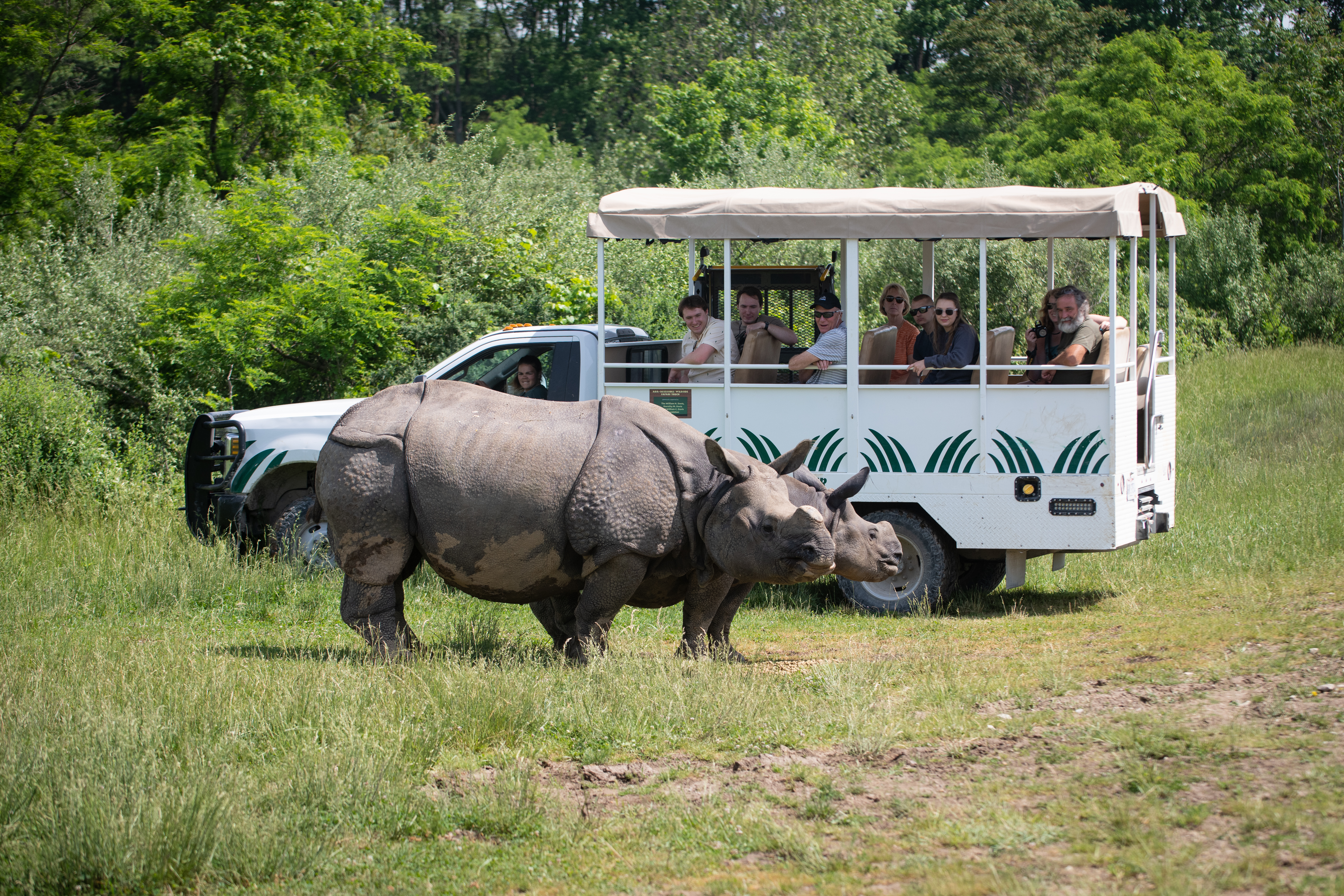
Choose Adventure for 2024!
A membership to The Wilds affords you free Open-Air Safari Tours, free parking, and discounts on our beautiful overnight options!
become a member of The Wilds
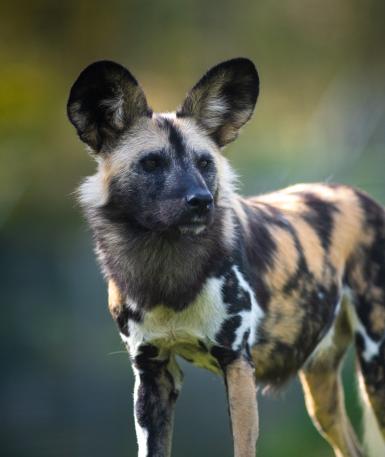
African Painted Dog
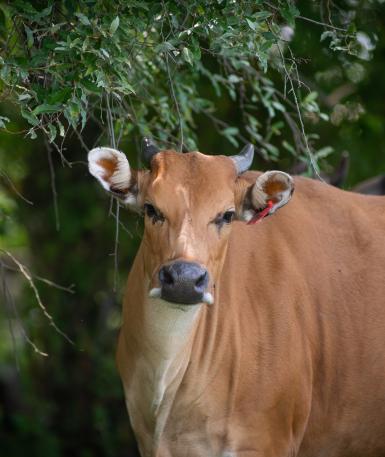
Persian Onager
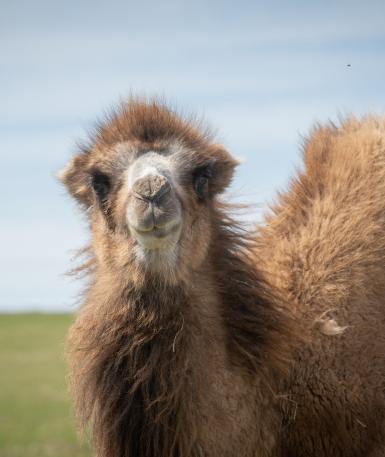
Bactrian Camel
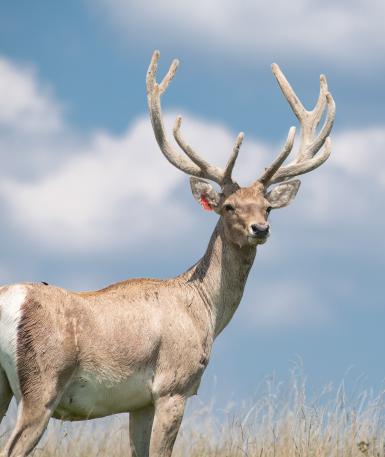
Bactrian Deer
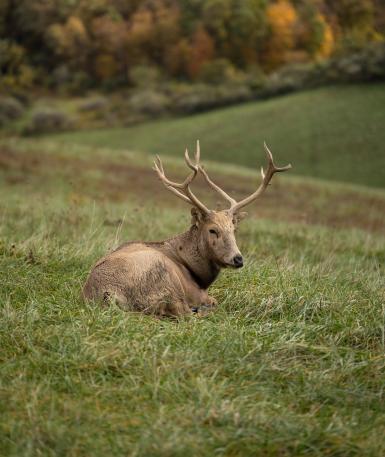
Pére David's Deer
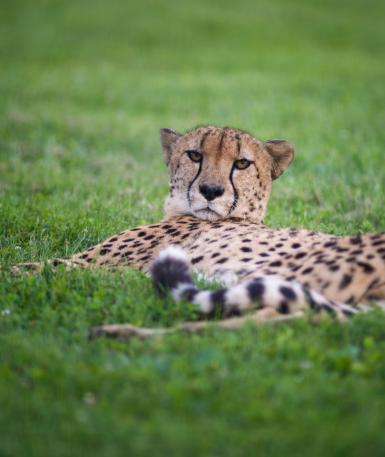
Learn at The Wilds
Explore wild spaces, learn about the natural world, and make lifelong friends.
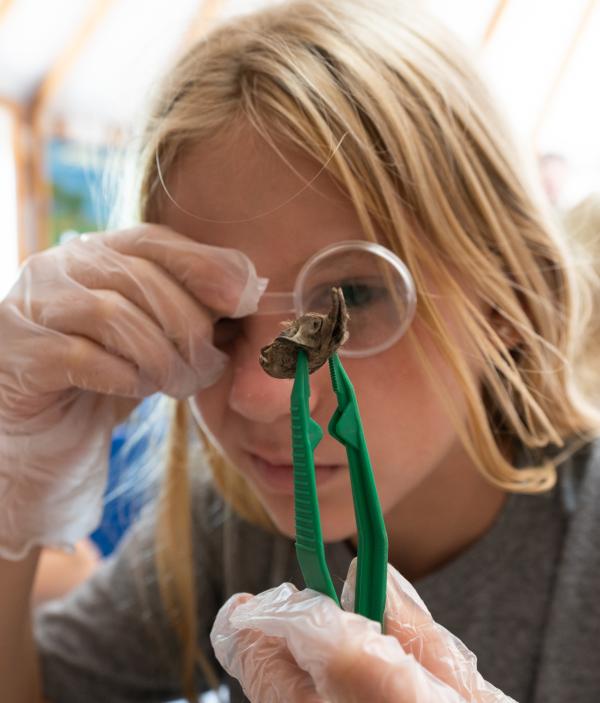
Discovery Field Stations
Our youngest guests can have an adventure all-their-own before their tour of The Wilds begins!
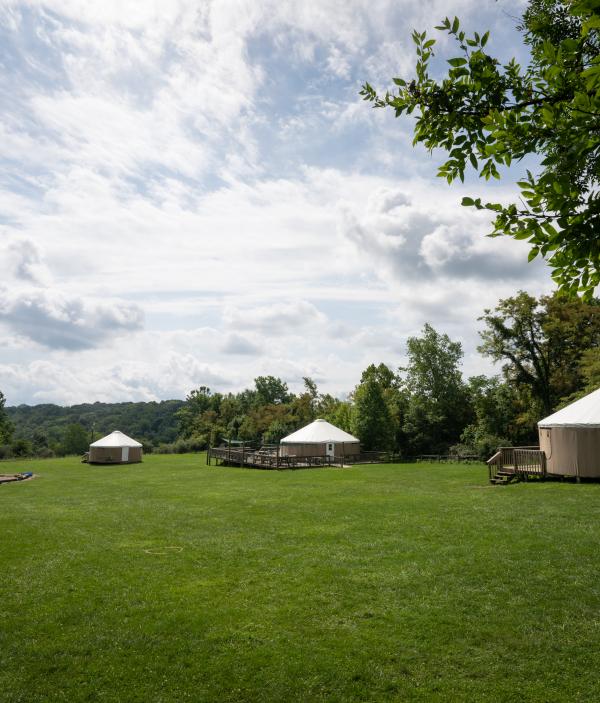
Overnight Programs
Night hikes, campfires, and 'smores. Come spend a night out in The Wilds!
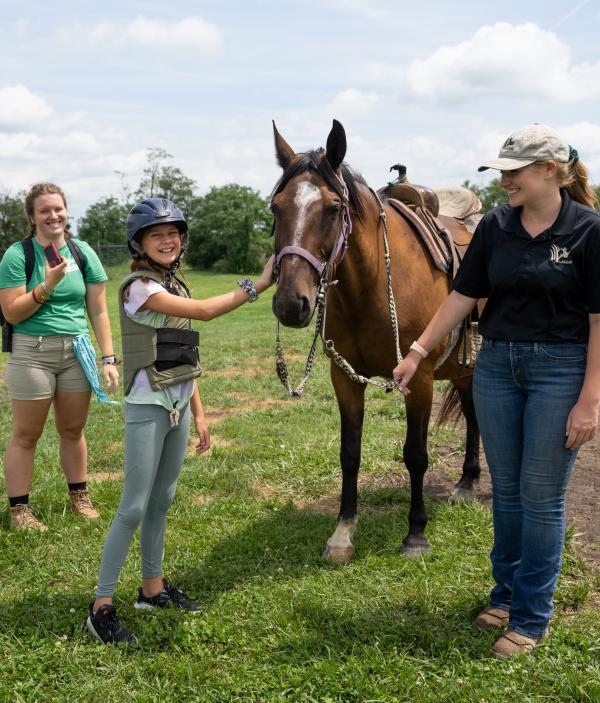
Scout Day Program
The Wilds offers customized adventures for Scouts!
get a closer look
If visiting the Columbus Zoo isn’t enough, find out how you can become an important part of our growing family.
- Help Center
- Plan Your Visit
- Places To Stay
- Special Experiences
- Youth Programs
- Student & Youth Groups
- Events & Catering
- Live Cameras
- Our Mission

Zoo Single Day Tickets
Buy online and save, 1-day pass – any day.
Includes: One visit to the San Diego Zoo®, Guided Bus Tour, Kangaroo Express Bus, Skyfari Aerial Tram, and all regularly scheduled experiences. Experiences above subject to availability.
1-Day Pass Any Day tickets valid any day within one year from date of purchase. Cannot be exchanged for Value Days ticket. No reservation required.
1-Day Pass – Value Days
1-Day Pass Value Days tickets valid on any Value Day (see calendar) within one year from date of purchase. Cannot be combined with any other discount/offer/promotion. No reservation required.
$72 $68
$62 $58, 1-day pass plus – any day.
Includes all the features of the 1-Day Pass, plus one 4D Theater Experience. Subject to availability.
$81 $79
$71 $69, 1-day pass plus – value days.
1-Day Pass Plus Value Days ticket valid on any Value Day (see calendar) within one year from date of purchase. Cannot be combined with any other discount/offer/promotion. No reservation required.
$81 $75
$71 $65, multi-day / multi-park tickets, 2-visit pass.
Includes: One visit to the San Diego Zoo and one visit to the San Diego Zoo Safari Park -or- Two visits to the San Diego Zoo -or- Two visits to the San Diego Zoo Safari Park. Two total visits by the same person on any and all days.
2-Visit Pass tickets valid on any day within one year from date of purchase. Ticket cannot be combined with any other discount/offer/promotion. No reservation required.
San Diego 3-for-1 Pass
Enjoy visits to the San Diego Zoo, San Diego Zoo Safari Park, and SeaWorld® San Diego. The San Diego 3-for-1 Pass is valid for one visit per attraction—three total visits—by the same person on any and all days. Valid for seven consecutive days from the first visit.
Go San Diego Pass
Discover 55+ top San Diego attractions and enjoy incredible savings with Go City. Meet wildlife at the San Diego Zoo and the San Diego Zoo Safari Park, spend the day at SeaWorld®, explore the USS Midway, cruise the bay with Speedboat Adventures, and more!
San Diego CityPASS®
One easy purchase saves big on admission to San Diego's top attractions and theme parks, including San Diego Zoo, SeaWorld®, and LEGOLAND®.
No need to decide now, choose which attractions as you go. Visit the attractions at your own pace, in any order, over a 9-day period. No reservation required.
Membership offers a variety of ways to visit both the Zoo and Safari Park all year long. Please visit our membership pages for more details.
Starting as low as $95 per person
San Diego Zoo Gift Cards make the perfect gift! A gift card is valid toward San Diego Zoo and Safari Park admission packages, gift shop and food-stand purchases, tours and education programs, Zoo memberships, and more!

Alaska Airlines

PREFERRED HOTELS

Save the Chubby Unicorns

Gorilla Shadow
- Give Monthly
- San Diego Zoo
- Safari Park
- Special Experiences
- Plan Your Visit
- Renew/Rejoin
- Conservation
- Take Action
- Adventure Travel

NEWS RELEASE
FOR IMMEDIATE RELEASE CONTACT: San Diego Zoo Wildlife Alliance Public Relations 619-685-3291 [email protected] sdzwa.org
San Diego Zoo Safari Park Welcomes 250th California Condor Chick, a Significant Milestone for the Critically Endangered Species
Chick’s Father Is Xol-Xol, One of the Last 22 California Condors Alive in 1982 and the First Brought Into Human Care as Part of the Recovery Program
SAN DIEGO (April 11, 2024) – San Diego Zoo Wildlife Alliance has welcomed the 250th California condor to hatch at the San Diego Zoo Safari Park. The chick’s parents are Xol-Xol (pronounced “hole-hole”)—the first California condor brought into human care under the California Condor Recovery Program in 1982—and Mexwe (pronounced “mex-weh”). More than 40 years since the California condor population dropped to a low of just 22 birds, this milestone is a significant success.
Before hatching, the egg was placed in an incubator to be closely monitored by wildlife care team. Due to a suspected malposition, the egg was taken to Paul Harter Veterinary Medical Center for computed tomography (CT) imaging. After examining the results, the chick’s position was determined to not be of concern. The chick successfully pipped and was returned to Xol-Xol and Mexwe for hatching. The pair’s nest is equipped with infrared cameras, allowing the team to monitor the hatching process around the clock. The chick, whose sex is not yet determined, hatched in the early morning hours of March 16 with the assistance of its very attentive parents and is doing well under their care. It was given the name Emaay (pronounced “eh-my”), a Kumeyaay word for “sky.” Xol-Xol’s name means “one of the sky people” in Chumash.
“Reaching this milestone feels incredible,” said Nora Willis, senior wildlife care specialist, San Diego Zoo Wildlife Alliance. “Seeing the success that the San Diego Zoo Safari Park has had—and the success of the California Condor Recovery Program as a whole—is really inspiring. There’s still a long way to go but being part of this and helping the species recover is life changing.”
Xol-Xol, one of the last 22 condors remaining in 1982, was rescued from the Sespe Condor Sanctuary at three months old after being neglected by his parents, who were still rearing a chick from the previous year. He made his home at the San Diego Zoo Safari Park as the first California condor brought into human care under the California Condor Recovery Program. Xol-Xol has fathered 41 chicks since 1993, and many of those chicks have been reintroduced into their native habitat. Emaay is expected to join the native population in 2025.
In 1982, San Diego Zoo Wildlife Alliance was given permission to begin the first zoological propagation program for California condors. The program included the U.S. Fish and Wildlife Service, the California Department of Fish and Wildlife, the National Audubon Society, and the Los Angeles Zoo, among others. As a result of the innovative techniques developed by San Diego Zoo Wildlife Alliance and many partners, the resurgence of the California condor is a conservation success story. Today there are more than 560 living California condors, with over half free flying. The California condor is listed by the International Union for Conservation of Nature (IUCN) as Critically Endangered, with populations increasing. Major threats to their survival include lead poisoning, habitat loss and emerging diseases.
At least 50 California condors now join the population annually, and 12 to 15 chicks hatch in their native habitat every year. Condors hatched in human care are introduced across five reintroduction sites in the United States: one in northern Arizona at the Vermillion Cliffs and four in California, including Ventana Wilderness in Big Sur, Pinnacles National Monument, Yurok Ancestral Territory and Redwood National Park, and the Bitter Creek National Wildlife Refuge in the Los Padres National Forest. San Diego Zoo Wildlife Alliance and its partners in Mexico—Comisión Nacional de Áreas Naturales Protegidas, Secretaría de Medio Ambiente y Recursos Naturales, Instituto Nacional de Ecología y Cambio Climático and Espacios Naturales y Desarrollo Sustentable A.C.—have been managing a long-term program to restore California condors at a sixth site in the Sierra de San Pedro Mártir National Park in northern Baja California, Mexico, where condors lived until the mid-1950s.
About San Diego Zoo Wildlife Alliance San Diego Zoo Wildlife Alliance, a nonprofit conservation leader, inspires passion for nature and collaboration for a healthier world. The Alliance supports innovative conservation science through global partnerships. Through wildlife care, science expertise and collaboration, more than 44 endangered species have been reintroduced to native habitats. Annually, the Alliance reaches over 1 billion people, in person at the San Diego Zoo and San Diego Zoo Safari Park, and virtually in 150 countries through media channels, including San Diego Zoo Wildlife Explorers television programming in children’s hospitals in 14 countries. Wildlife Allies—members, donors and guests—make success possible.
Link includes:
- B-roll of parents Xol-Xol and Mexwe tending to their chick Emaay
- B-roll of wildlife care specialists examining the egg before it hatched
- Photos and video from the CT scan of the California condor egg
- Video interview with wildlife care specialist at the San Diego Zoo Safari Park
- Press release in English and Spanish
- San Diego Zoo Tickets
- Safari Park Tickets
- Organization
WildCare Park
- Wildlife Reserve
Visit the Saint Louis Zoo
About your visit.
- Hours and Prices
- Parking and Maps
- Accessibility and Rentals
- Rules and Regulations
- Frequently Asked Questions
- Hotel Partners
Things To Do
- See Animals
- Attractions
- Behind-the-Scenes Tours

Explore all Animals
By classification.
- Invertebrates
- Discovery Corner
- River's Edge
- Historic Hill
- Lakeside Crossing

Action, Advocacy and Research
Our conservation efforts.
- Institute for Conservation Medicine
- WildCare Institute
- Reproductive and Behavioral Sciences
- AZA Reproductive Management Center
Animal Care
- Animal Food and Nutrition Center
- Enrichment and Training
- Species Survival Plans
- Veterinary Hospital
- Schools and Organizations
- Virtual Learning
- Education Registration
- Attend an Event
- Host an Event

January 2024 Update
Following the completion of a national search, the Saint Louis Zoo has named Sabarras George its next WildCare Park Director. He will assume the role on February 5, 2024. “I believe that our staff, supporters and the community will really like Sabarras,” said Dwight Scott, Dana Brown President & CEO, Saint Louis Zoo. “I’m confident that he will help grow our conservation efforts and successfully lead the development of WildCare Park that will open in 2027 with amazing guest experiences.”
Read announcement here
December 2023 Update
Four critically endangered addax and two endangered Grevy's zebras now reside at Saint Louis Zoo WildCare Park located in north St. Louis County. These animals are within the Dana Brown Conservation Pasture, a large natural space dedicated for breeding and conservation efforts, which is part of the Kent Family Conservation and Animal Science Center at WildCare Park. The transition area helps the animals acclimate to their new space. The two species each will have access to 10 acres of pasture once they are fully acclimated.
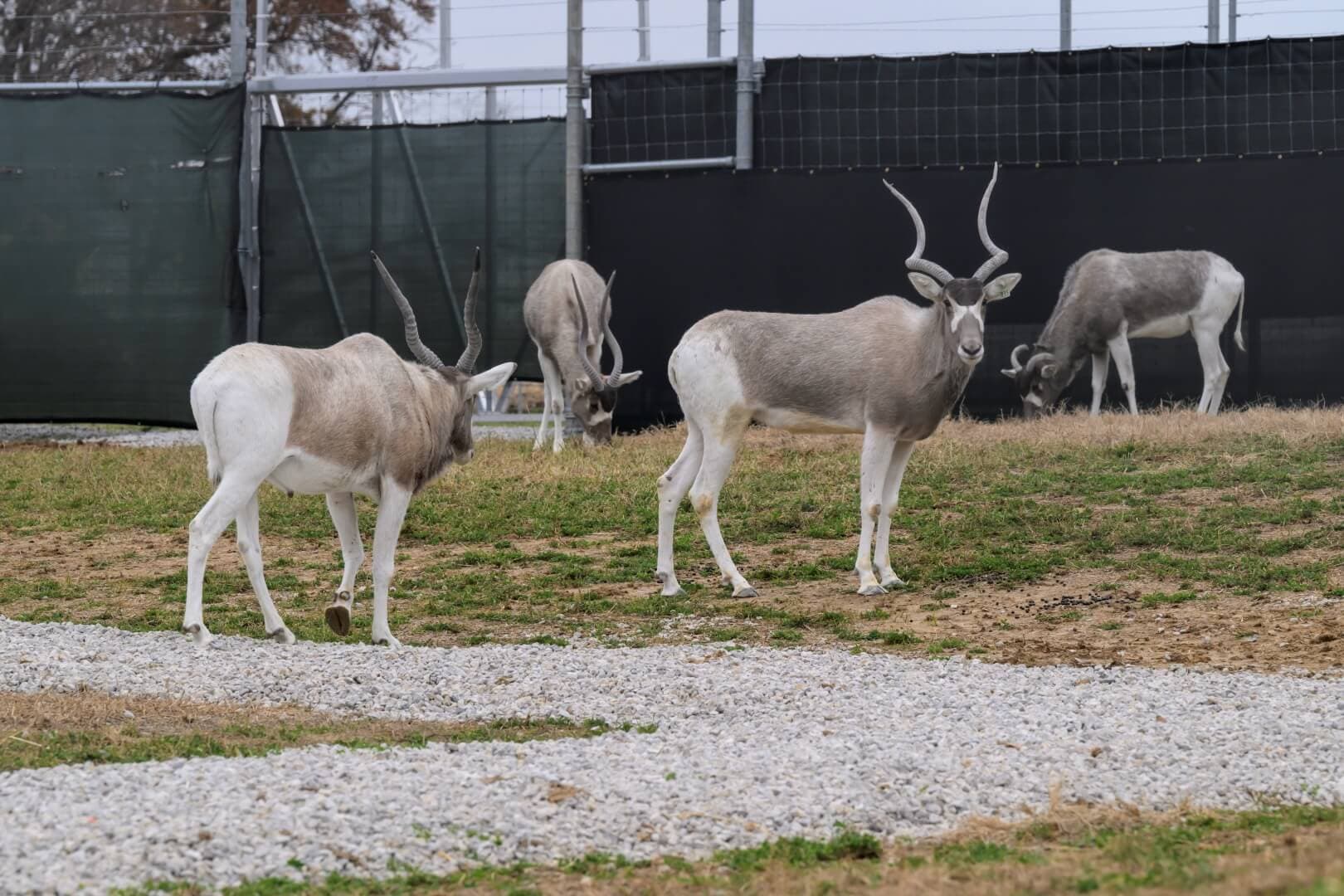
The zebras and addax came to WildCare Park in fall 2023 from the Saint Louis Zoo in Forest Park and from other Association of Zoos and Aquariums-accredited zoos. When WildCare Park opens to the public in 2027, more than 250 animals are expected to be living there. Acquiring animals from other accredited facilities and building appropriate animal social groups takes time. For the public opening, the focus is on endangered ungulates – hoofed mammals – as well as birds and other threatened species. Over the last year and a half, construction at WildCare Park has consisted of demolition of a few older buildings, fence installation and grading around the perimeter of the property, restoration of 260 acres back to native grasses, construction of barns and a utility building, and renovation of the headquarters building with a new observation deck.
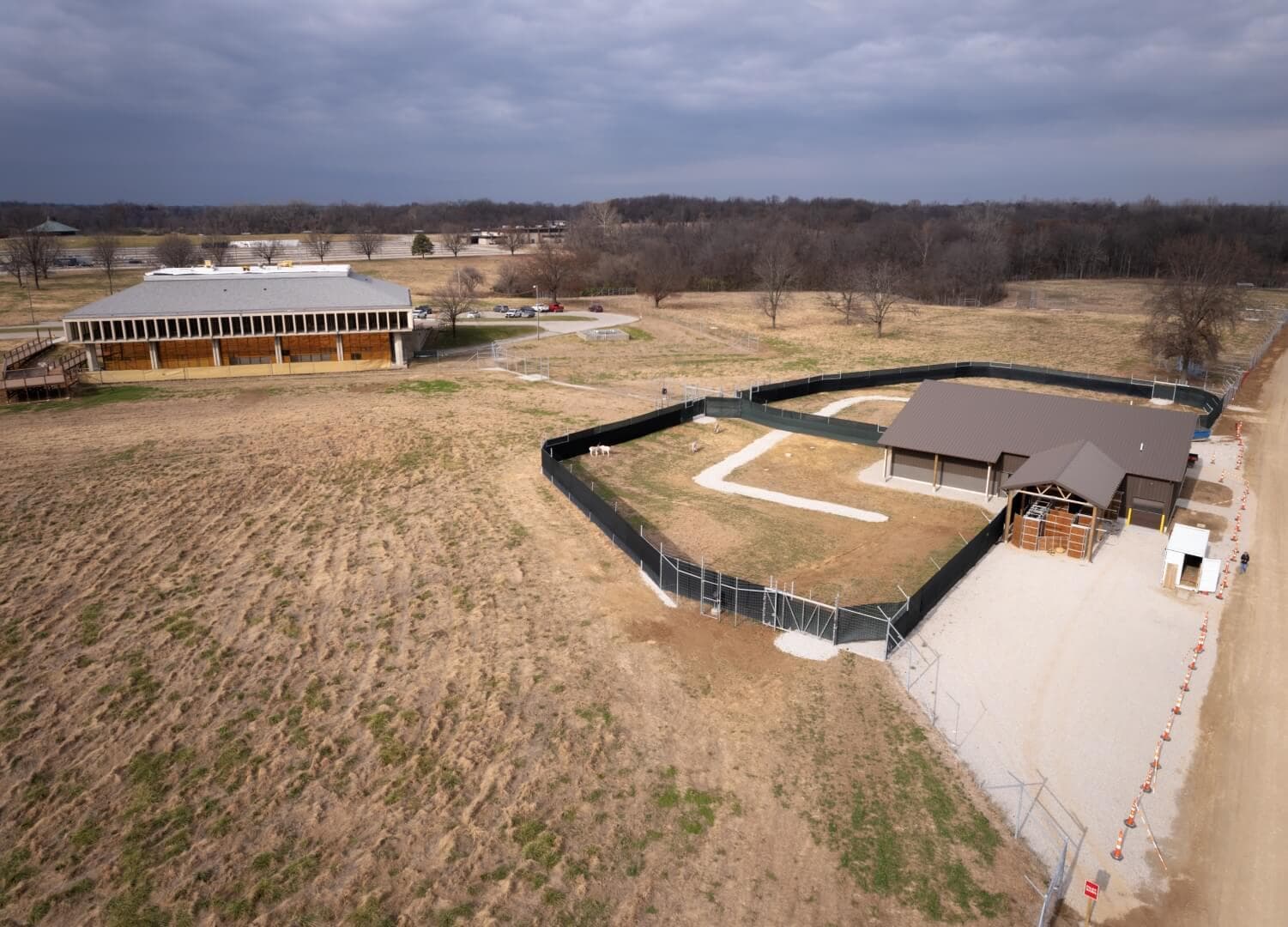
WildCare Park features two completely different, but highly synergistic components. The first is what the public will experience, a unique outdoor adventure that sends guests on a safari through herds of animals roaming wild over gently rolling grassy meadows and through native forests. The second component is the Kent Family Conservation and Animal Science Center, a dedicated facility within WildCare Park to sustain endangered and threatened species, made possible by the generosity of the Jerry and Judy Kent Family. The first animals arriving will live in the pastures and barns in this area.
July 2022 Update
In July 2022, several updates were announced :
- Development of WildCare Park estimated to cost $230 million
- Building demolitions nearing completion and perimeter fence installation is underway
- Animals to begin arriving in 2023 for pilot pasture
- Targeting public opening for 2027
See full announcement here
December 2020 Announcement
Name unveiled.
In December 2020, the Saint Louis Zoo provided several updates on its north St. Louis County campus. First, the Zoo unveiled the name for its 425-acre north St. Louis County property – Saint Louis Zoo WildCare Park. Next, the Zoo announced a leadership gift from longtime Zoo supporters, the Kent family, to name the Kent Family Conservation and Animal Science Center, which will be located at the Saint Louis Zoo WildCare Park. In addition, the Zoo shared information on biodiversity studies underway in and around the Saint Louis Zoo WildCare Park.
Saint Louis Zoo WildCare Park
"We decided on Saint Louis Zoo WildCare Park as it hits on three aspects that are key to the use of this campus: wildlife, conservation and public experience," said Jeffrey Bonner, Ph.D., Dana Brown President and CEO, Saint Louis Zoo. "With the two campuses, we will continue to operate under one mission that essentially has been unchanged for over a century: 'To conserve animals and their habitats through animal management, research, recreation, and educational programs that encourage the support and enrich the experience of the public.'"
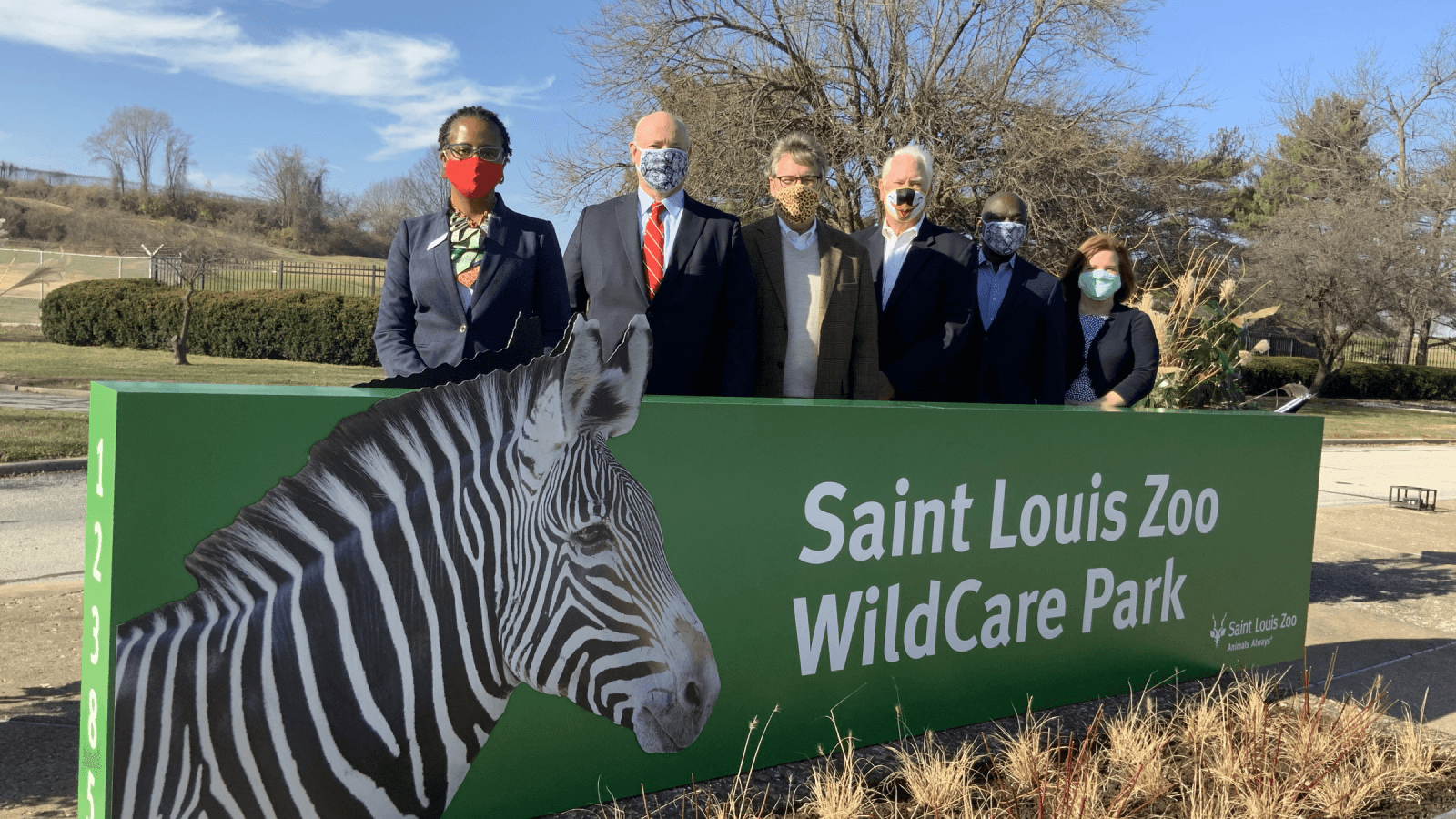
The word "WildCare" is not new for the Saint Louis Zoo. Launched in 2004, the Saint Louis Zoo WildCare Institute centralized the Zoo's wildlife efforts. The Zoo's field conservation efforts have grown to include 17 conservation centers worldwide, all of which are founded on wildlife management and recovery, conservation science with applied conservation action, and working with communities. Five of these centers focus on wildlife conservation efforts in Missouri.
The word "Park" helps describe the guest experience that the public can expect when the Saint Louis Zoo WildCare Park opens – an abundance of opportunities to connect with nature through outdoor activities, attractions and wilderness adventures.
"While the COVID-19 pandemic may have slowed down some of the planning and initial efforts we had hoped would be done by now, we estimate a public opening as early as 2026 for the Saint Louis Zoo WildCare Park," said Dr. Bonner. "There's a lot of work ahead of us and we want to do this right."
The Zoo has conducted public experience studies and surveys with tourists and area residents, and will continue to seek input as it finalizes the public experiences at the new campus. The Zoo also will work with necessary authorities to evaluate property zoning, traffic studies, perimeter fencing and a potential pilot pasture in the near future.
Saint Louis Zoo WildCare Park features two completely different, but highly synergistic components. The first is what the public will experience, a unique outdoor adventure that sends guests on a safari through herds of animals roaming wild over gently rolling grassy meadows and through native forests.
"Imagine, if you can, coming upon a herd of giraffe walking across the grasslands or rhinos surrounding your vehicle. Visitors might find themselves silently kayaking up to unwary zebra or disembarking the safari truck for a truly close-up experience," said Dr. Bonner.
More than a safari, visitors also will explore the forests on trails and, for the more adventurous, high up in the forest canopy.
"Visitors can enjoy a massive indoor/outdoor experience that combines the best that zoos, science centers and natural history museums have to offer – connecting people and animals in a way that has never been done before," said Dr. Bonner.
Those who want the ultimate outdoor adventure will be able to spend the night camping, or even "glamping," which is glamorous or luxurious camping at its finest.
Kent Family Conservation and Animal Science Center
The second component to the Saint Louis Zoo WildCare Park is the Kent Family Conservation and Animal Science Center, made possible by the generosity of the Kent family.
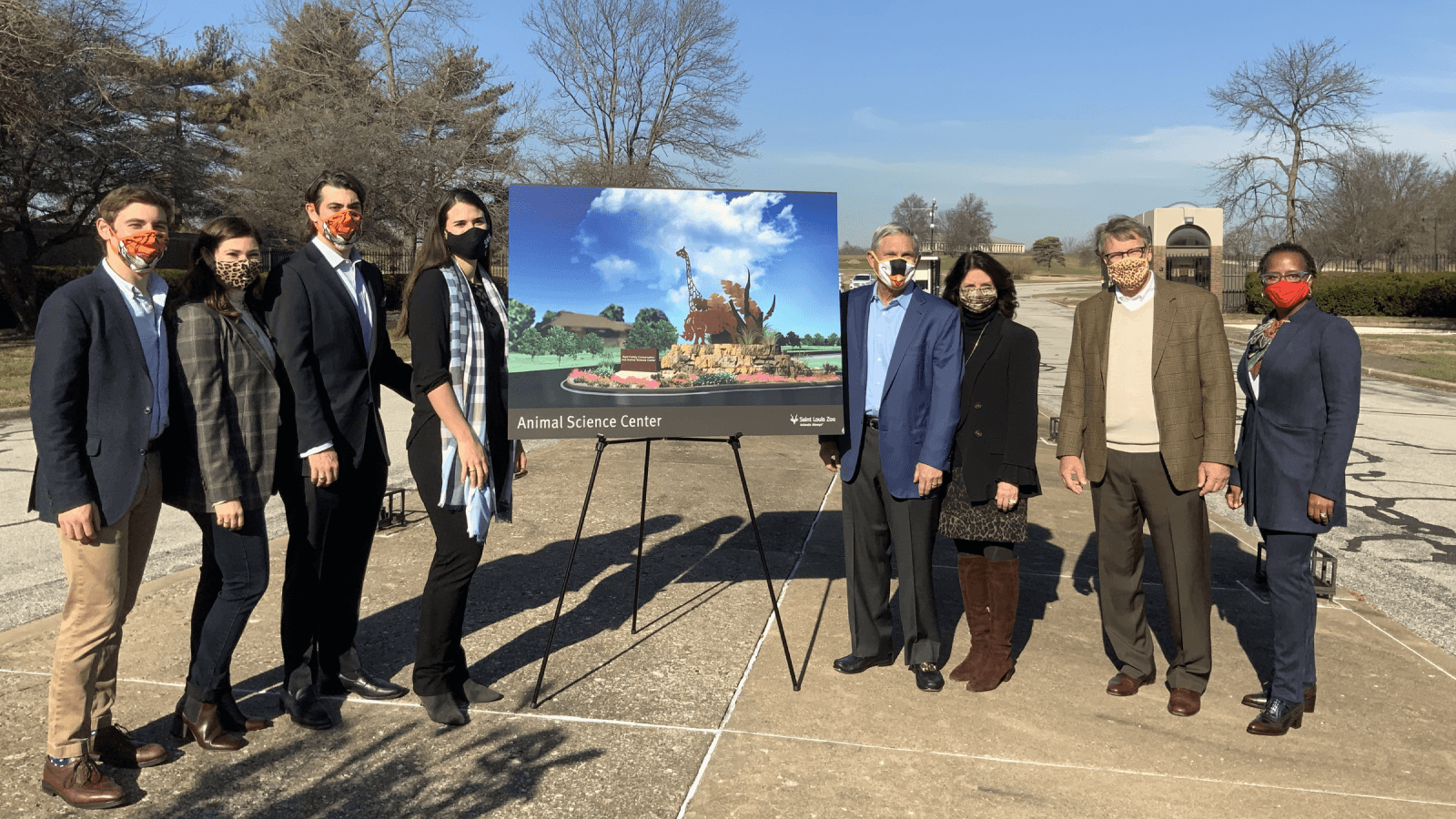
"The Saint Louis Zoo is more than just one of the finest zoos in the world," said Jerry Kent. "It is one of the world leaders in conservation. My family, including my wife Judy and our children Matt and Rachel, and Matt's wife Dr. Ana Kent, are proud to enable St. Louis' leading tourist attraction to expand their impact by basing this important work in facilities located in north St. Louis County."
The Kent Family Conservation and Animal Science Center is where conservationists will work to sustain populations of endangered species, conduct research and engage in applied conservation programs. It is key to the Zoo's work to advance wildlife conservation efforts.
"Together, the public experience and the Kent Family Conservation and Animal Science Center will merge applied science with intriguing dynamic visitor interactions – both are cutting-edge and unique," said Winthrop B. Reed, III, Chairman, St. Louis Zoological Park Subdistrict Commission. "We believe this is the first facility of its kind in the world and will doubtless be a game-changer for endangered species as well as for north St. Louis County and the region." "Today, the Zoo is thrilled to announce a leadership gift that will bring our dream of a Conservation and Animal Science Center one step closer to reality," said Reed. "Longtime Zoo supporters, the Kent family, will place their name on a significant part of the new campus – the Kent Family Conservation and Animal Science Center." Jerry Kent is a serial entrepreneur and founder of several area businesses, including Charter Communications, Tierpoint, Staylock Storage and Cequel III. He and his family are very involved in the region's charitable organizations and they financially support many causes through the Kent Family Foundation. "We are so grateful for the generosity of the Kent family," said John Sondag, President, Saint Louis Zoo Association. "With the Kent family's support, the Zoo will be able to build state-of-the-art habitats and spaces dedicated to conservation breeding of some of the world's most endangered species." The Kent Family Conservation and Animal Science Center will be a dedicated facility to sustain endangered and threatened species. For many such species, the Zoo is their last hope. The Zoo has a long history of bringing species back from the brink of extinction, and having a facility dedicated to assuring their survival, both in human care and in the wild, is critically important.
Native Species Biodiversity Studies
In addition to conservation programs in Missouri and around the world, the Zoo also will study the native animals and plants that live in and around the property. The first step in those efforts are biodiversity studies.
The overall goal of the biodiversity studies is to develop a comprehensive list and understanding of the animal and plant species that utilize the Saint Louis Zoo WildCare Park. The Zoo is mapping the biological and environmental health of the site, including the presence or absence of native wildlife, invasive species and diseases with a potential threat to Zoo animals, and an understanding of the types and quality of the habitats at the site.
"The knowledge gained from these biodiversity surveys is essential to make the best decisions about future property use including Zoo animal management decisions, property management, educational program development and property design and use," said Jo-Elle Mogerman, Ph.D., Director, Saint Louis Zoo WildCare Park. "For example, we will learn if there are concerns about the types of plants there now and whether any native wildlife corridors run through the land."
Currently, there are eight areas of study: bats, birds, coyotes and foxes, invertebrates/pollinators, plants, reptiles, amphibians, and water quality of lakes and streams. Potential projects for community involvement include FrogWatch and City Nature Challenge trainings, invasive plant removal, litter cleanups, bird walks and other nature experiences.
Related Announcement
April 17, 2019: Saint Louis Zoo Names Two Proven Leaders to Direct Zoo and New North Campus Efforts
Artist Renderings
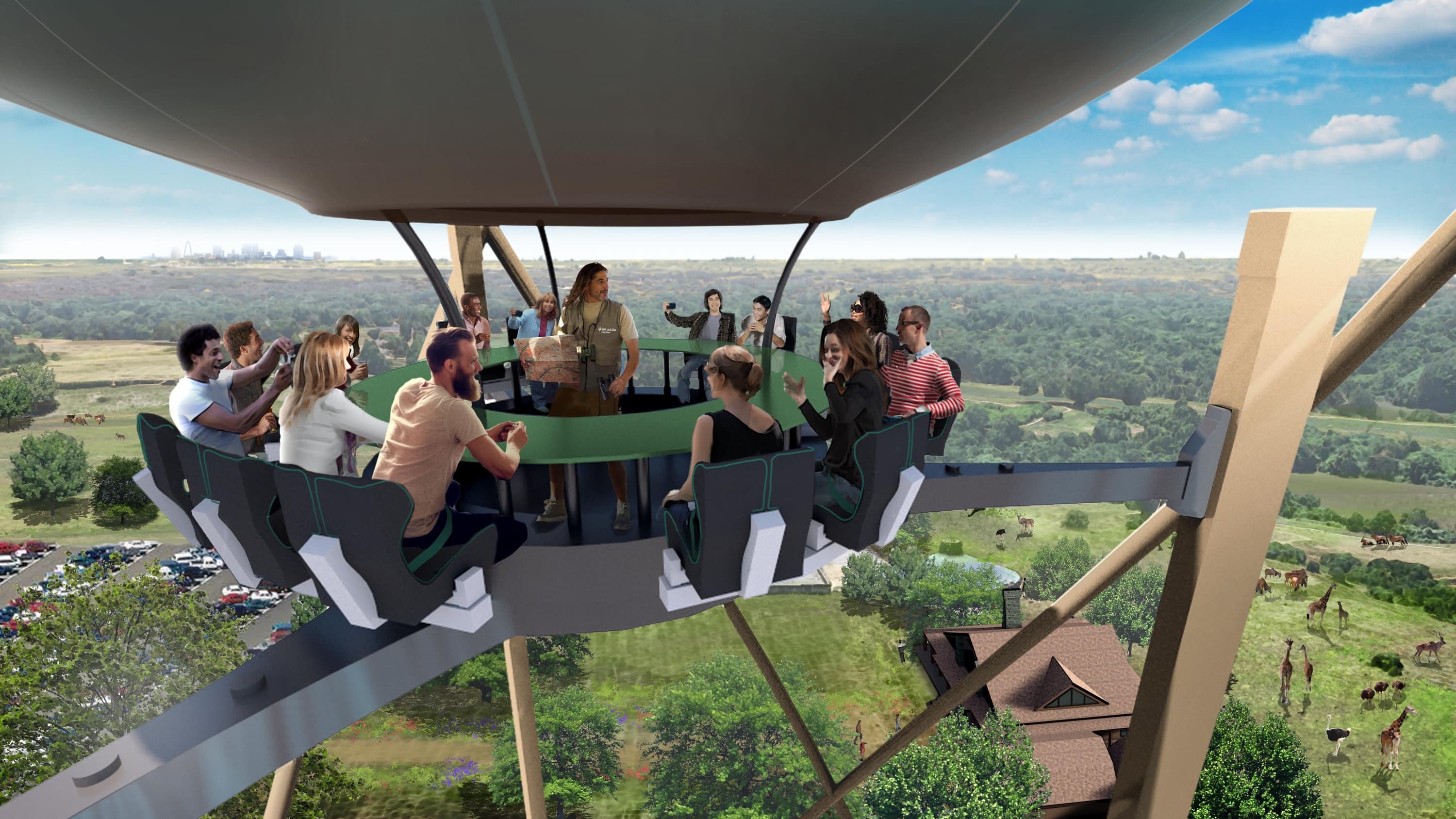
TheBetterVacation.com
Everything about tourist attractions
Thoiry ZooSafari – tickets, prices, what to expect, timings, map, FAQs
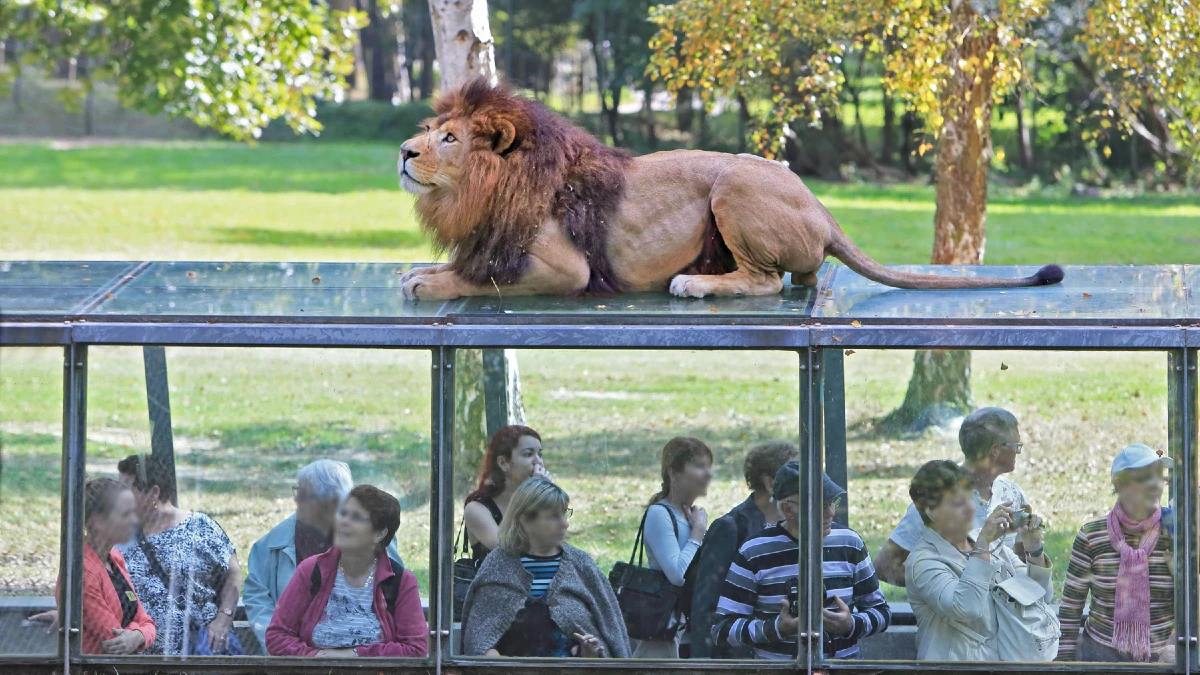
Thoiry ZooSafari is a unique and exciting wildlife park located in Thoiry, France.
It offers visitors a one-of-a-kind experience by combining a traditional zoo with an immersive safari adventure.
The park covers a vast area and is home to a diverse range of animal species worldwide.
One of the highlights of Thoiry ZooSafari is the safari drive-through experience.
This article covers everything you must know before booking Thoiry ZooSafari tickets.
Top Thoiry ZooSafari Tickets
# Tickets for Thoiry ZooSafari: Skip The Line # Thoiry ZooSafari + Aquarium de Paris # Thoiry ZooSafari + Parc Astérix
Table of contents
What to expect at thoiry zoosafari, where to book tickets, how do online tickets work, thoiry zoosafari paris ticket prices, tickets for thoiry zoosafari, thoiry zoosafari + aquarium de paris, thoiry zoosafari + parc astérix, thoiry zoosafari + palace of versailles and gardens, how to reach thoiry zoosafari, opening hours of thoiry zoosafari, how long does the tour take, best time to visit thoiry zoosafari, thoiry zoosafari map , faqs about the thoiry zoosafari.
Visitors have the opportunity to drive their own vehicles through designated safari areas.
Have the opportunity to observe animals such as lions, elephants, rhinoceroses, zebras, and giraffes roaming freely in their natural habitat.
Thoiry ZooSafari goes beyond just animal viewing and provides a thrilling and up-close encounter with these magnificent creatures.
In addition to the safari drive, Thoiry ZooSafari also features a traditional zoo section.
Here, visitors can explore a variety of animal exhibits and discover fascinating species from different continents.
From big cats and primates to reptiles and birds, the zoo showcases a wide array of animals, offering educational insights and an appreciation for wildlife conservation.
The park also offers various attractions and activities for all ages.
There are interactive shows, playgrounds, picnic areas, and even a castle to explore.
Visitors can also enjoy guided tours, educational programs, and special events that provide deeper insights into the animal kingdom.
With its combination of safari adventure, traditional zoo exhibits, and engaging activities, Thoiry ZooSafari provides a memorable and enjoyable experience for families, wildlife enthusiasts, and nature lovers.
It offers a unique opportunity to witness animals in a natural and immersive setting while promoting conservation and education.
Back to Top
The Tickets for Thoiry ZooSafari are available online and at the attraction.
Online ticket prices tend to be cheaper than tickets at the venue.
When you buy online, you can avoid the long queues at the attraction’s ticket counters.
Because some attractions sell a limited number of tickets, during peak days they may sell out. Booking early helps avoid last-minute disappointments.
Visit the Thoiry ZooSafari booking page choose your desired date and the number of tickets.
Once you purchase Thoiry ZooSafari tickets, they get delivered to your email address.
There is no need to get printouts of the ticket.
You can show the e-ticket on your smartphone when you visit the attraction.
Bring your official IDs.
Tickets for Thoiry ZooSafari are priced at €30 for all visitors above 12 years.
Children between the age of three to 11 can get a discount of €6 and pay only €24.
Visitors with a disability over the age of 12 need to pay only €16, whereas those between the ages of three to 11 can pay only €13.
Children under two years get free admission.
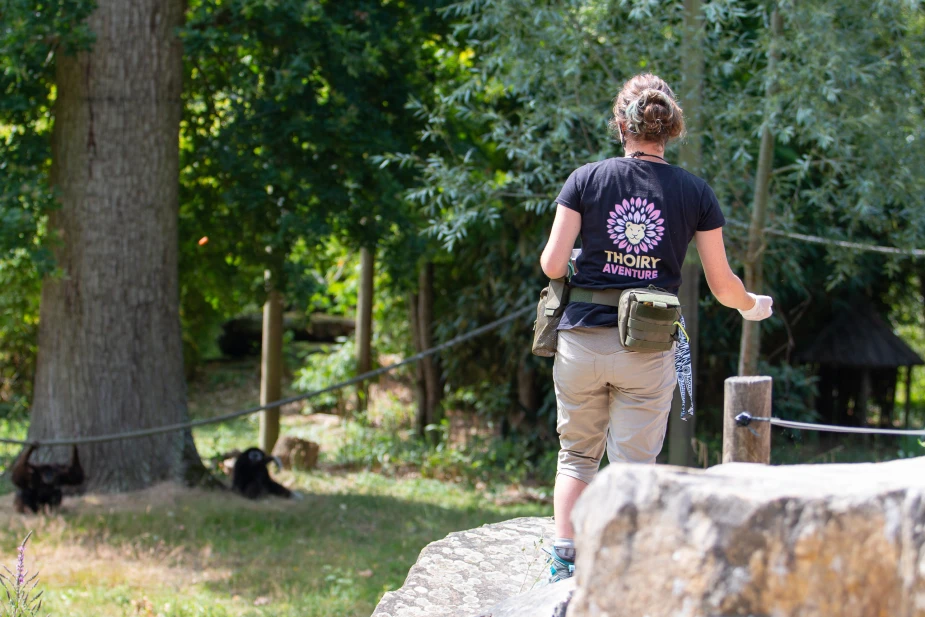
Enjoy a hassle-free visit to Thoiry Zoo with our skip-the-line entrance ticket.
With this ticket, you can bypass the queues and enter directly, saving you time and allowing you to make the most of your day.
Explore the zoo at your own pace and embark on an exciting safari experience by driving through the park in your own car.
Get up close to giraffes, zebras, elephants, bears, lions, and over 800 other animals as they roam freely in their natural habitat.
The ticket also grants you access to the playground area, where children can have a blast with games and activities.
Don’t miss the enchanting Lumières Sauvages event during the winter season, which illuminates the park in a magical display.
Please note that the ticket does not include the bush taxi service or the zipline activity.
Ticket Prices
Adult Ticket (12+ years): €30 Child Ticket (3 to 11 years): €24 Disabled Visitor (12+ years): €16 Disabled Visitor (3 to 11 years): €13 Infant Ticket (up to 2 years): Free
Combo tickets
Combo tickets are great for local and foreign tourists as they offer great discounts.
There are a few iconic attractions near Thoiry ZooSafari and you can explore them all by booking just once.
You can get combo tickets for Thoiry ZooSafari in combination with Aquarium de Paris , Parc Astérix and Palace of Versailles and Gardens .
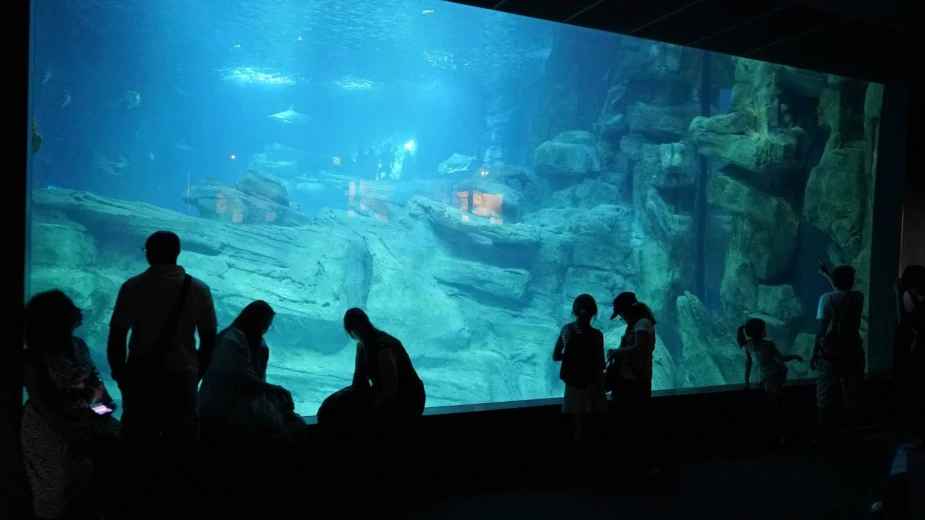
Distance: 50 km (31 miles) Time Taken: 55 minutes by car
Immerse yourself in the ocean’s wonders at Aquarium de Paris with our entry ticket.
Dive into a deep-sea excursion right in the heart of Paris and discover the mesmerizing marine world.
With this ticket, you’ll have access to the Aquarium de Paris, where you can explore a diverse range of aquatic life and marvel at stunning displays of marine species.
Be captivated by the enchanting Mermaid Show, witness thrilling Animal Feedings, and delve into the educational animations and Cinema area.
This ticket offers a comprehensive experience to explore and learn about the fascinating underwater realm.
For an extraordinary wildlife adventure just a short distance from Paris, Thoiry ZooSafari is the perfect destination.
With the skip-the-line entrance ticket, you can bypass the queues and dive into the wildlife experience.
Book your tickets at a 7% discount now and embark on an unforgettable journey through the ocean depths at Aquarium de Paris and the wildlife of Thoiry ZooSafari Paris.
Ticket Cost: €52 per person
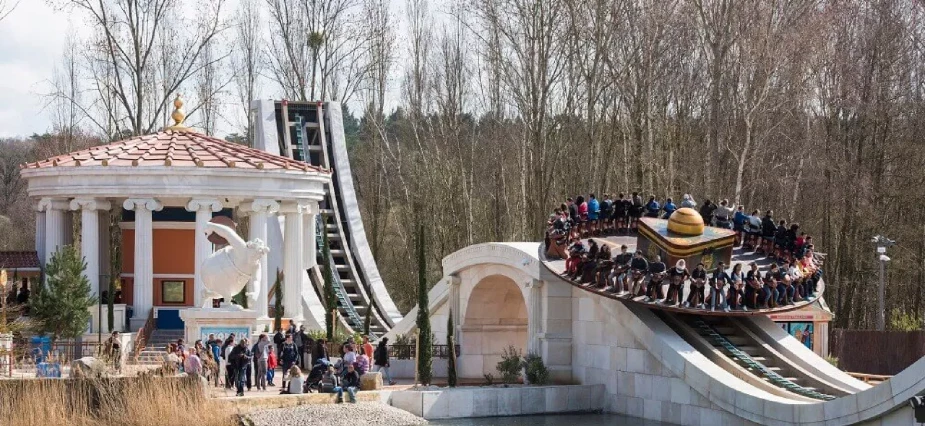
Distance: 90 km (56 miles) Time Taken: more than 1 hour by car
Embark on a thrilling adventure at Parc Astérix , an action-packed theme park located near Paris that celebrates the beloved Gaul.
With the access ticket, you’ll step into a world of excitement and fun.
Enjoy unlimited access to Parc Astérix and dive into all the exhilarating attractions and shows the park offers.
Experience heart-pounding roller coasters, immersive rides, and entertaining shows that bring the spirit of the Gauls to life.
This ticket grants you the full Parc Astérix experience, ensuring a day filled with laughter, adventure, and unforgettable memories.
Also, explore Thoiry ZooSafari and witness magnificent lions, majestic tigers, playful bears, and more as you embark on a safari-like experience.
The ticket includes access to the safari, where you can drive through the park in your own car, getting up close to the animals in their natural habitats.
Don’t miss out on this excitement – book your ticket now and get ready for an action-packed day at Parc Astérix and an exciting wildlife journey.
Ticket Cost: €76 per person

Distance: 30 km (18 miles) Time Taken: 30 minutes by car
Immerse yourself in the grandeur of the Palace of Versailles with the entrance ticket.
Step into the opulent world of this elegant 17th-century castle and explore its magnificent rooms.
Marvel at the exquisite architecture, intricate details, and lavish decorations as you stroll through the various rooms.
To enhance your visit, you can download a free interactive app that provides insightful information and enriches your experience.
For an unforgettable trip, you can get the wildlife adventure at Thoiry ZooSafari and the Palace of Versailles and Gardens.
Don’t miss the chance to explore the Palace of Versailles and Thoiry ZooSafari Paris and immerse yourself in its timeless beauty.
Secure your entrance ticket now at a 5% discount and embark on a captivating journey.
Ticket Cost: €47 per person
Save time & money! Buy Paris Museum Pass and visit over 60 famous attractions in and around Paris. Book now and explore museums and monuments such as the Louvre and Versailles.
Thoiry ZooSafari is situated in Thoiry, a commune in the Yvelines department of the Île-de-France region in France.
Address: Château de Thoiry, 78770 Thoiry, France. Get Directions .
You can either drive to the location or take public transport.
Take the 78 express train, 35, 40, 41, or 55, and get off at Mairie .
From there, it is a three-minute walk.
If you’re planning on taking the car, put on Google Maps and get started!
To find the closest parking, click here .
The Thoiry ZooSafari opening hours vary depending on the season, with general timings from 10 am to 5 pm.
During peak season (March to September), the zoo and safari operates till 6 pm.
To get exact information about the timings, visit the official website .
It takes a minimum 4 hours to experience the Thoiry ZooSafari, including, the zoo, safari and the castle.
The safari lasts 45 minutes to 1 hour, while the zoo tour on foot takes 2 to 3 hours and the castle exploration 30 minutes.
Visiting during peak seasons or weekends may result in more crowds, which could affect the duration of the tour.
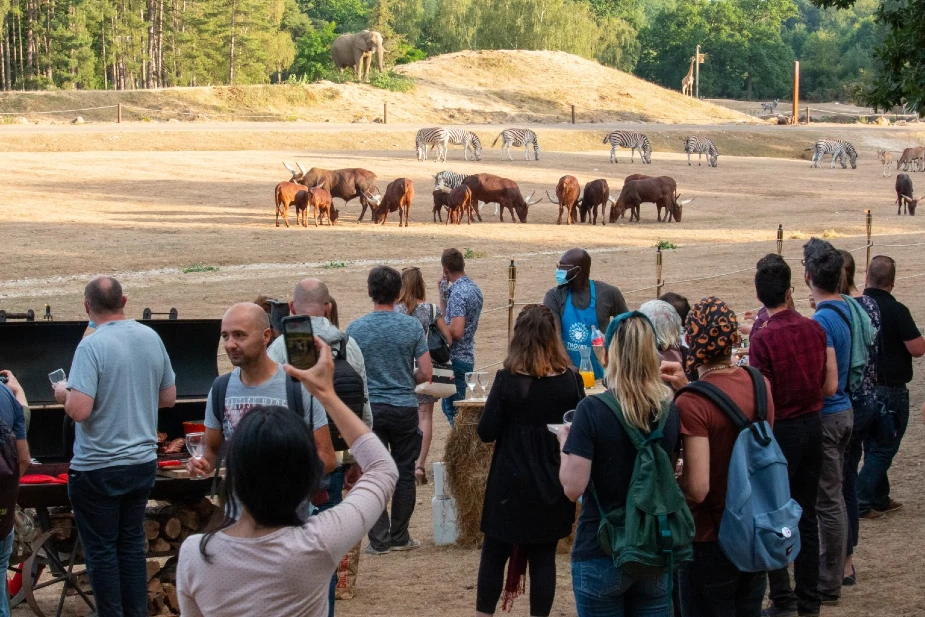
The best time to visit Thoiry ZooSafari in Paris is as soon as it opens at 10 am.
There are four benefits of starting early – the animals are most active early in the morning, the temperatures are still moderate, the crowd is yet to get in, and you have the whole day to spend at the attraction.
As the day gets hotter, animals prefer staying inside their shelters. As a result, you may get disappointed when you don’t see them in the exhibit.
Weekdays are better for a peaceful visit because the zoo gets crowded on weekends and school holidays.
A map is essential when visiting Thoiry ZooSafari as it provides a comprehensive layout of the park and ensures an easy and organized visit.
With a map, visitors can easily navigate the extensive grounds and locate the various animal exhibits, attractions, and facilities.
The map helps plan an efficient route, ensuring you get all the must-see animals or shows.
It also highlights key points of interest, such as feeding sessions, restrooms, dining areas, and play zones for children.
By following the map, visitors can make the most of their time at the zoo, avoiding unnecessary detours and maximizing their opportunity to see and learn about the diverse wildlife.
Whether you’re a first-time visitor or a returning guest, a map is an invaluable tool for a smooth and enjoyable experience at Thoiry ZooSafari.
Here are a few questions visitors usually ask before visiting the Thoiry ZooSafari.
Several fast food spaces and snack options are available within the zoo, offering a variety of sweet and savory items based on the season. You are allowed to bring your own picnic to the zoo. Several designated picnic areas are available for visitors to enjoy their meals and snacks at their convenience.
Yes, they can be rented at the entrance of the zoo for a small fee. You are also welcome to bring your own strollers throughout the zoo, except in the immersion enclosures such as Lémur Trek, the South America area, and the goat enclosure.
Absolutely! You can enter and leave the park on the same day using the same ticket. Please make sure to keep your ticket with you and present it each time you re-enter the park.
To ensure the safety of all visitors, the use of scooters, rollerblades, skates, bikes, and other similar “rolling machines” is strictly prohibited within the zoo premises.
Yes, the zoo offers free car parking to all visitors.
Yes, the zoo pathways are wheelchair friendly.
Sources # Museeduchocolat.fr # Parisperfect.com # Tripadvisor.com The travel specialists at TheBetterVacation.com use only high-quality sources while researching & writing their articles. We make every attempt to keep our content current, reliable and trustworthy .
Popular attractions in Paris
How useful was this post?
Click on a star to rate it!
Check out all the things to do in Paris
This article was researched & written by
Urvashi Goyal
She is a city fanatic who loves exploring different cities, understanding their culture, meeting people, and discovering hidden gems. She likes to holiday in offbeat places that mainstream tourists are yet to discover. When on holiday, she avoids crowded tourist traps. Favourite cities: Bern, Los Angeles, and San Francisco
Edited by Rekha Rajan & fact checked by Jamshed V Rajan
Leave a Comment Cancel reply
Save my name, email, and website in this browser for the next time I comment.
FireStorm Internet runs this website to provide the most accurate and up-to-day information about tourist attractions.
Our Address
FireStorm Internet, 203, 30C, Bollineni Hillside, Perumbakkam Main Road, Nookampalayam, Chennai, India. Pin Code: 600126
About Us The Team Contact Us Affiliate Disclaimer Content Policy HTML Sitemap Privacy Policy Terms of Service
Helicopter Tours Food Tours Ghost Tours Stadium Tours Hop On Hop Off Tours Zoo Tickets Madame Tussauds Linq High Roller Summit One Vanderbilt
© 2024 FireStorm Internet
Recommended
Want to buy a zoo 2 in north carolina hit the market at once.
- View Author Archive
- Email the Author
- Get author RSS feed
Contact The Author
Thanks for contacting us. We've received your submission.
Thanks for contacting us. We've received your submission.

Lions and tigers and bears, oh my!
Two of North Carolina’s most beloved animal attractions, Zootastic and Aloha Safari Park, are up for grabs, offering a rare opportunity for investors to enter the wildlife tourism industry.
Zootastic, dubbed the largest privately owned and operated zoo in the state, boasts a staggering $16 million price tag.
Meanwhile, Aloha Safari Park, renowned for its hands-on experiences, is being offered for approximately $4.5 million.
The potential sale of these iconic zoos has stunned locals, as the facilities represent not just businesses, but cherished institutions deeply embedded in the hearts of North Carolinians.

Nestled near Charlotte, Zootastic has a plethora of revenue streams, including exotic animal interactions and private encounters, field trips and even a holiday-lights drive-thru, according to the listing.
Situated on 186 acres, the zoo also features a carousel and train ride.
The $16 million deal includes the property, business operations, inventory and, of course, the beloved animal residents.

Prospective buyers must demonstrate their qualifications to handle exotic animals, ensuring compliance with federal regulations.
Aloha Safari Park

Situated close to Fayetteville, Aloha Safari Park stands out with its interactive experiences, 300 species and reputation as the most hands-on zoo in the US.
For around $4.5 million, the sale includes everything from real estate to animals.
As with Zootastic, potential buyers must prove their ability to meet federal licensing standards for working with exotic animals.

The park prides itself on its hands-on safari encounters in a climate-controlled setting, featuring animals like monkeys, sloths, lemurs, kangaroos and kinkajous.
Situated on 66 acres, the park recently added a 2-mile drive-thru safari where guests can feed the animals and interact with them.

Scottie Brown, who owns both parks, seeks to pass on his legacy to passionate new stewards.
Having fulfilled his childhood dream of operating zoos, Brown now aims to mentor the next generation of zookeepers while ensuring the continued success of these beloved institutions.
For animal lovers and investors alike, these sales present a rare chance to own a piece of North Carolina’s wildlife heritage while contributing to the conservation and education efforts championed by Zootastic and Aloha Safari Park.
Share this article:

Advertisement

‘Zebra giraffe’ is born at California zoo. See the playful ‘striped booty cutie’
A unique-looking but adorable baby is wobbling around the San Diego Zoo Safari Park. From behind, he looks like a zebra. In fact, from toe to tummy, he appears to be fully zebra. But from the tummy up, he’s something else.
“This striped-booty cutie is already growing fast ,” the zoo said in a Facebook post April 8. According to them, he is “nearly triple the size he was when he was first born” back on Feb. 8.
The calf is from a species called okapi, the only living relative of the giraffe, the zoo said in a news release.
Okapis are from the rainforest of the Democratic Republic of Congo. Like giraffes, okapis have large upright ears that can pick up even very faint sounds, a superpower that allows them to stay safe from predators in the wild. Okapis also have the giraffe’s long tongue that help them strip the buds and leaves from understory brush.
Sadly, okapis have not had an easy time in recent years.
“Hunting and ongoing habitat destruction, pose significant threats to the majestic okapi,” the zoo said.
“Fortunately, a positive development occurred in 1992, when a portion equivalent to one-fifth of the okapi habitat within Africa’s Ituri Forest was designated as a wildlife reserve. And since okapis are an “umbrella species,” by aiding in their conservation, we also contribute to the protection of other wildlife that coexist in their African habitat.”
The new baby, who hasn’t been named yet, was born to first-time mother and father Mahaheli and Mpangi.
He spends his days “basking in the sun and running around in the grass” with his mother, the zoo said. He can sometimes be seen running playfully in circles around his mother. Safari park visitors will be able to see the new calf on exhibit starting in mid-April.
Hordes of pelicans take over a California beach. ‘You couldn’t even see the sand’
Venomous, bug-eyed babies of endangered species born at Smithsonian zoo. See them
Seven endangered creatures hatch at Oregon zoo. See one of the ‘little fuzzballs’
©2024 The Charlotte Observer. Visit charlotteobserver.com. Distributed by Tribune Content Agency, LLC.


- Bahasa Indonesia
- Eastern Europe
- Moscow Oblast
Elektrostal
Elektrostal Localisation : Country Russia , Oblast Moscow Oblast . Available Information : Geographical coordinates , Population, Area, Altitude, Weather and Hotel . Nearby cities and villages : Noginsk , Pavlovsky Posad and Staraya Kupavna .
Information
Find all the information of Elektrostal or click on the section of your choice in the left menu.
- Update data
Elektrostal Demography
Information on the people and the population of Elektrostal.
Elektrostal Geography
Geographic Information regarding City of Elektrostal .
Elektrostal Distance
Distance (in kilometers) between Elektrostal and the biggest cities of Russia.
Elektrostal Map
Locate simply the city of Elektrostal through the card, map and satellite image of the city.
Elektrostal Nearby cities and villages
Elektrostal weather.
Weather forecast for the next coming days and current time of Elektrostal.
Elektrostal Sunrise and sunset
Find below the times of sunrise and sunset calculated 7 days to Elektrostal.
Elektrostal Hotel
Our team has selected for you a list of hotel in Elektrostal classified by value for money. Book your hotel room at the best price.
Elektrostal Nearby
Below is a list of activities and point of interest in Elektrostal and its surroundings.
Elektrostal Page

- Information /Russian-Federation--Moscow-Oblast--Elektrostal#info
- Demography /Russian-Federation--Moscow-Oblast--Elektrostal#demo
- Geography /Russian-Federation--Moscow-Oblast--Elektrostal#geo
- Distance /Russian-Federation--Moscow-Oblast--Elektrostal#dist1
- Map /Russian-Federation--Moscow-Oblast--Elektrostal#map
- Nearby cities and villages /Russian-Federation--Moscow-Oblast--Elektrostal#dist2
- Weather /Russian-Federation--Moscow-Oblast--Elektrostal#weather
- Sunrise and sunset /Russian-Federation--Moscow-Oblast--Elektrostal#sun
- Hotel /Russian-Federation--Moscow-Oblast--Elektrostal#hotel
- Nearby /Russian-Federation--Moscow-Oblast--Elektrostal#around
- Page /Russian-Federation--Moscow-Oblast--Elektrostal#page
- Terms of Use
- Copyright © 2024 DB-City - All rights reserved
- Change Ad Consent Do not sell my data
- Bahasa Indonesia
- Slovenščina
- Science & Tech
- Russian Kitchen
Why were so many metro stations in Moscow renamed?

Okhotny Ryad station in Soviet times and today.
The Moscow metro system has 275 stations, and 28 of them have been renamed at some point or other—and several times in some cases. Most of these are the oldest stations, which opened in 1935.
The politics of place names
The first station to change its name was Ulitsa Kominterna (Comintern Street). The Comintern was an international communist organization that ceased to exist in 1943, and after the war Moscow authorities decided to call the street named after it something else. In 1946, the station was renamed Kalininskaya. Then for several days in 1990, the station was called Vozdvizhenka, before eventually settling on Aleksandrovsky Sad, which is what it is called today.
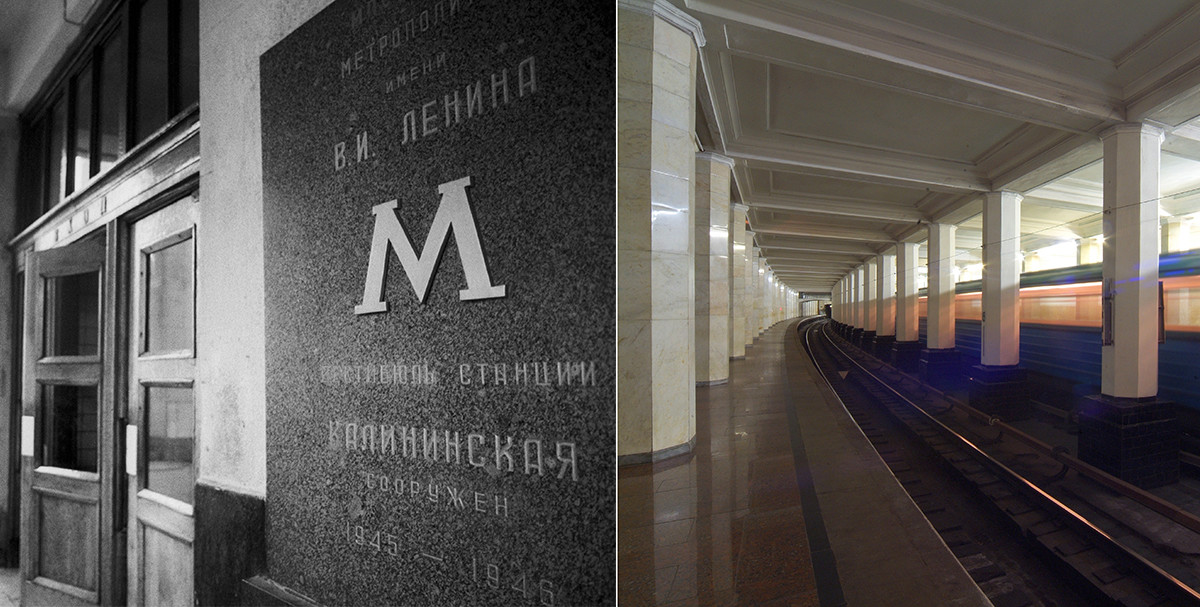
The banner on the entraince reads: "Kalininskaya station." Now it's Alexandrovsky Sad.
Until 1957, Kropotkinskaya station was called Dvorets Sovetov ( Palace of Soviets ). There were plans to build a monumental Stalinist high-rise on the site of the nearby Cathedral of Christ the Saviour , which had been demolished. However, the project never got off the ground, and after Stalin's death the station was named after Kropotkinskaya Street, which passes above it.

Dvorets Sovetov station, 1935. Letters on the entrance: "Metro after Kaganovich."
Of course, politics was the main reason for changing station names. Initially, the Moscow Metro itself was named after Lazar Kaganovich, Joseph Stalin’s right-hand man. Kaganovich supervised the construction of the first metro line and was in charge of drawing up a master plan for reconstructing Moscow as the "capital of the proletariat."
In 1955, under Nikita Khrushchev's rule and during the denunciation of Stalin's personality cult, the Moscow Metro was named in honor of Vladimir Lenin.
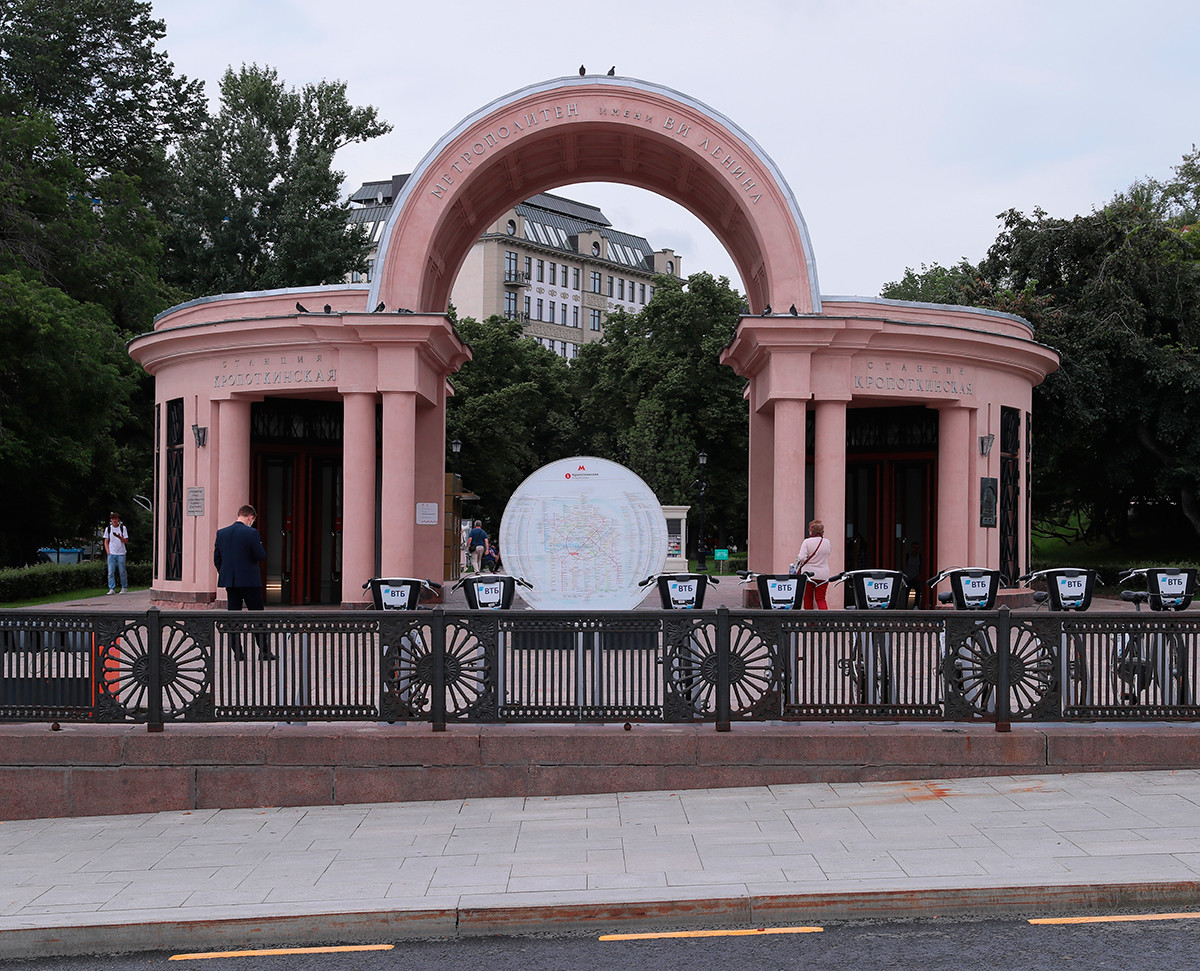
Kropotkinskaya station, our days. Letters on the entrance: "Metropolitan after Lenin."
New Metro stations that have been opened since the collapse of the Soviet Union simply say "Moscow Metro," although the metro's affiliation with Vladimir Lenin has never officially been dropped.

Zyablikovo station. On the entrance, there are no more signs that the metro is named after Lenin.
Stations that bore the names of Stalin's associates were also renamed under Khrushchev. Additionally, some stations were named after a neighborhood or street and if these underwent name changes, the stations themselves had to be renamed as well.
Until 1961 the Moscow Metro had a Stalinskaya station that was adorned by a five-meter statue of the supreme leader. It is now called Semyonovskaya station.

Left: Stalinskaya station. Right: Now it's Semyonovskaya.
The biggest wholesale renaming of stations took place in 1990, when Moscow’s government decided to get rid of Soviet names. Overnight, 11 metro stations named after revolutionaries were given new names. Shcherbakovskaya became Alekseyevskaya, Gorkovskaya became Tverskaya, Ploshchad Nogina became Kitay-Gorod and Kirovskaya turned into Chistye Prudy. This seriously confused passengers, to put it mildly, and some older Muscovites still call Lubyanka station Dzerzhinskaya for old times' sake.
At the same time, certain stations have held onto their Soviet names. Marksistskaya and Kropotkinskaya, for instance, although there were plans to rename them too at one point.
"I still sometimes mix up Teatralnaya and Tverskaya stations,” one Moscow resident recalls .
“Both have been renamed and both start with a ‘T.’ Vykhino still grates on the ear and, when in 1991 on the last day of my final year at school, we went to Kitay-Gorod to go on the river cruise boats, my classmates couldn’t believe that a station with that name existed."
The city government submitted a station name change for public discussion for the first time in 2015. The station in question was Voykovskaya, whose name derives from the revolutionary figure Pyotr Voykov. In the end, city residents voted against the name change, evidently not out of any affection for Voykov personally, but mainly because that was the name they were used to.
What stations changed their name most frequently?
Some stations have changed names three times. Apart from the above-mentioned Aleksandrovsky Sad (Ulitsa Kominterna->Kalininskaya->Vozdvizhenka->Aleksandrovsky Sad), a similar fate befell Partizanskaya station in the east of Moscow. Opened in 1944, it initially bore the ridiculously long name Izmaylovsky PKiO im. Stalina (Izmaylovsky Park of Culture and Rest Named After Stalin). In 1947, the station was renamed and simplified for convenience to Izmaylovskaya. Then in 1963 it was renamed yet again—this time to Izmaylovsky Park, having "donated" its previous name to the next station on the line. And in 2005 it was rechristened Partizanskaya to mark the 60th anniversary of victory in World War II.
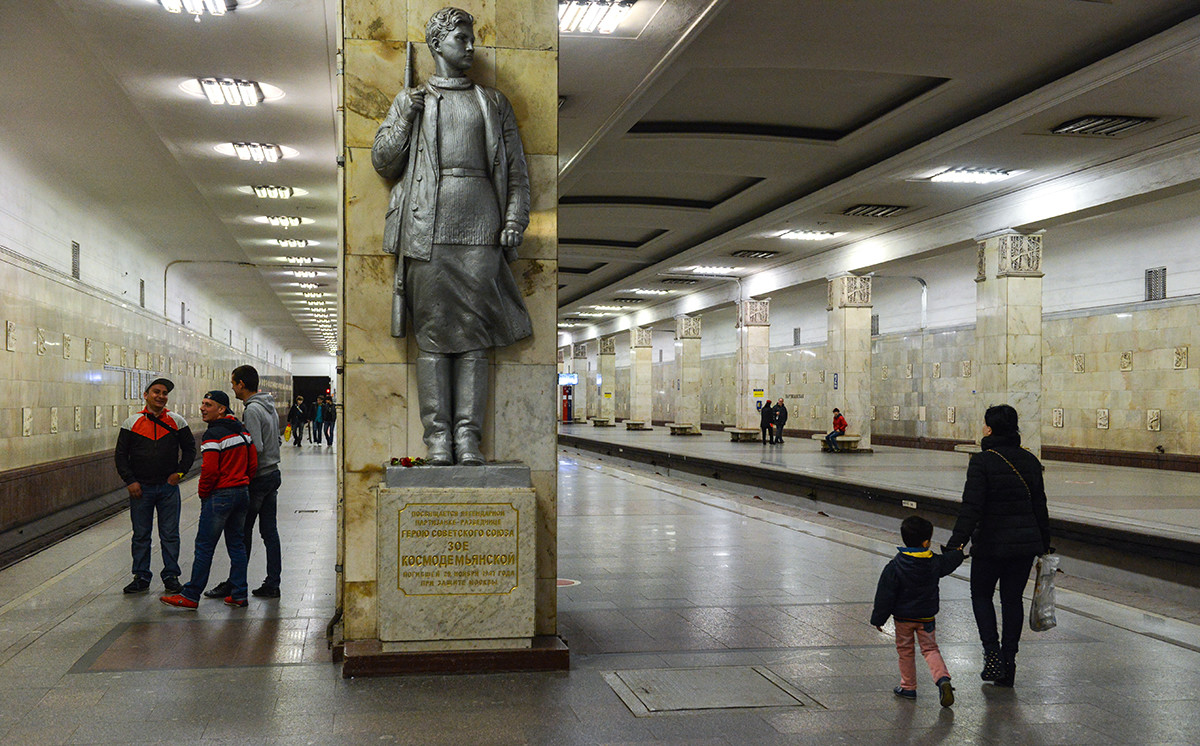
Partizanskaya metro station, nowadays.
Another interesting story involves Alekseyevskaya metro station. This name was originally proposed for the station, which opened in 1958, since a village with this name had been located here. It was then decided to call the station Shcherbakovskaya in honor of Aleksandr Shcherbakov, a politician who had been an associate of Stalin. Nikita Khrushchev had strained relations with Shcherbakov, however, and when he got word of it literally a few days before the station opening the builders had to hastily change all the signs. It ended up with the concise and politically correct name of Mir (Peace).
The name Shcherbakovskaya was restored in 1966 after Khrushchev's fall from power. It then became Alekseyevskaya in 1990.

Alekseyevskaya metro station.
But the station that holds the record for the most name changes is Okhotny Ryad, which opened in 1935 on the site of a cluster of market shops. When the metro system was renamed in honor of Lenin in 1955, this station was renamed after Kaganovich by way of compensation. The name lasted just two years though because in 1957 Kaganovich fell out of favor with Khrushchev, and the previous name was returned. But in 1961 it was rechristened yet again, this time in honor of Prospekt Marksa, which had just been built nearby.

Okhotny Ryad station in 1954 and Prospekt Marksa in 1986.
In 1990, two historical street names—Teatralny Proyezd and Mokhovaya Street—were revived to replace Prospekt Marksa, and the station once again became Okhotny Ryad.

Okhotny Ryad in 2020.
If using any of Russia Beyond's content, partly or in full, always provide an active hyperlink to the original material.
to our newsletter!
Get the week's best stories straight to your inbox
- 7 things that the USSR unexpectedly put on WHEELS
- Why did the USSR build subway stations inside residential buildings? (PHOTOS)
- How Russian trains deal with winter
This website uses cookies. Click here to find out more.

IMAGES
VIDEO
COMMENTS
Flightline Safari. Ages 8 & up. $81 & up per person. Soar as high as 130 feet above the ground, with a spectacular bird's-eye view of rhinos, giraffes, and other wildlife in the savanna habitats below you. READ MORE.
The San Diego Zoo Safari Park, originally named the San Diego Wild Animal Park until 2010, is an 1800-acre (730 ha) zoo in the San Pasqual Valley area of San Diego, California, near Escondido. It is one of the largest tourist attractions in San Diego County. The park houses a large array of wild and endangered (some critically) animals from ...
Welcome to the San Diego Zoo Safari Park, where life-changing moments happen daily. Set out on safari and discover 1,800 acres of sprawling savannas teeming with wildlife as well as world-class botanical gardens—there's no place like it on Earth. Encounter rhinos, giraffes, wildebeest, and large herds of wildlife roaming together.
Choose either a 5-hour or 7-hour Ultimate Safari, and enjoy exploring the Park with your own personal tour guide. Each Ultimate Safari is tailored to your interests and includes a sit-down lunch. This very popular tour requires advance reservations (minimum 72 hours) and is subject to availability. Call 619-718-3000 to reserve your Ultimate Safari.
FLAMINGO. Social birds, flamingos live in groups of varying sizes, from a few pairs to sometimes thousands, or tens of thousands. The Safari Park is home to the largest population of greater flamingos in North America—and three of the six flamingo species are represented here. LEARN MORE.
The San Diego Zoo Safari Park, formerly known as the Wild Animal Park, offers a unique experience that sets it apart from other zoos. Nestled in the San Pasqual Valley area of San Diego, California, the park has a rich history dating back to its opening in 1972. Originally named the San Diego Wild Animal Park, it was a place where animals from ...
Safari Park. 15500 San Pasqual Valley Road, Escondido, California 92027-7017. The Safari Park is the San Diego Zoo's sister park to the northeast in Escondido. Distance between the San Diego Zoo and the San Diego Zoo Safari Park is 35 miles. Please allow 45 minutes to 1 hour travel time.
SAN DIEGO (Aug. 10, 2023) - San Diego Zoo Wildlife Alliance has announced construction is officially underway on the largest and most transformative project in the San Diego Zoo Safari Park's 50-year history. The all-new Denny Sanford Elephant Valley will reimagine the heart of the Safari Park, turning the current elephant environment into a dynamic savanna and a place of exploration ...
There are two swimming pools for the San Diego Safari Park herd in this 5-and-a-half acre habitat. There are two main yards. One is usually open while the other is being cleaned of copious amounts of elephant dung and stocked with treats. In most cases, the Elephant Viewing Patio will be the best place to watch them.
San Diego Zoo Safari Park Address. 15500 San Pasqual Valley Road, Escondido, CA 92027. Directions to San Diego Zoo Safari Park are quite easy, thanks to signage that you'll see after exiting the freeway. The drive from the I-15 freeway to the park takes a little less than 10 minutes.
What San Diego Safari Park Exhibit Areas Are Included With Admission. First, parking is not free at San Diego Zoo Safari Park. But most of the rest of the park can be explored freely with your entry fee. When you look at the Safari Park map there are 14 different sections at the San Diego Zoo Safari Park.
A membership to The Wilds affords you free Open-Air Safari Tours, free parking, and discounts on our beautiful overnight options! become a member of The Wilds. African Painted Dog. Banteng. Dhole. ... If visiting the Columbus Zoo isn't enough, find out how you can become an important part of our growing family. Discovery Field Stations ...
Includes: One visit to the San Diego Zoo and one visit to the San Diego Zoo Safari Park -or- Two visits to the San Diego Zoo -or- Two visits to the San Diego Zoo Safari Park. Two total visits by the same person on any and all days. 2-Visit Pass tickets valid on any day within one year from date of purchase.
Published on April 12, 2024. Source: San Diego Zoo. In an achievement hailed as a beacon of conservation success, the San Diego Zoo Safari Park celebrated the hatching of its 250th California ...
SAN DIEGO (April 11, 2024) - San Diego Zoo Wildlife Alliance has welcomed the 250th California condor to hatch at the San Diego Zoo Safari Park. The chick's parents are Xol-Xol (pronounced "hole-hole")—the first California condor brought into human care under the California Condor Recovery Program in 1982—and Mexwe (pronounced "mex-weh"). More than 40 years since the California ...
ESCONDIDO, Calif. (FOX 5/KUSI) — The okapi family at the San Diego Zoo Safari Park has just welcomed a new addition. A male calf was born to first-time parents, Mahameli and Mpangi. In a release ...
The 101-acre Savanna Safari is where guests can enjoy viewing approximately 100 animals in a natural grassland habitat from a safari vehicle. Animals pictured here include Grevy's zebra, addax, giraffe, sable antelope, ostrich and eland. Rendering courtesy of the Saint Louis Zoo WildCare Park; created by PGAV.
Thoiry ZooSafari Paris ticket prices. Tickets for Thoiry ZooSafari are priced at €30 for all visitors above 12 years. Children between the age of three to 11 can get a discount of €6 and pay only €24. Visitors with a disability over the age of 12 need to pay only €16, whereas those between the ages of three to 11 can pay only €13.
Zootastic, dubbed the largest privately owned and operated zoo in the state, boasts a staggering $16 million price tag. Meanwhile, Aloha Safari Park, renowned for its hands-on experiences, is ...
A unique-looking but adorable baby is wobbling around the San Diego Zoo Safari Park. From behind, he looks like a zebra. In fact, from toe to tummy, he appears to be fully zebra. But from the ...
Elektrostal , lit: Electric and Сталь , lit: Steel) is a city in Moscow Oblast, Russia, located 58 kilometers east of Moscow. Population: 155,196 ; 146,294 ...
An LLC tied to Brown, the owner of the zoo, purchased the property in 2022 for under $760,000, according to Harnett County deed records. That price did not include the animals, according to Parker ...
Rabochaya ulitsa, 35А, Elektrostal, Moscow Region, 144001. Coordinates:. 55.775454, 38.472688
Elektrostal Geography. Geographic Information regarding City of Elektrostal. Elektrostal Geographical coordinates. Latitude: 55.8, Longitude: 38.45. 55° 48′ 0″ North, 38° 27′ 0″ East. Elektrostal Area. 4,951 hectares. 49.51 km² (19.12 sq mi) Elektrostal Altitude.
The Moscow metro system has 275 stations, and 28 of them have been renamed at some point or other—and several times in some cases. Most of these are the oldest stations, which opened in 1935.